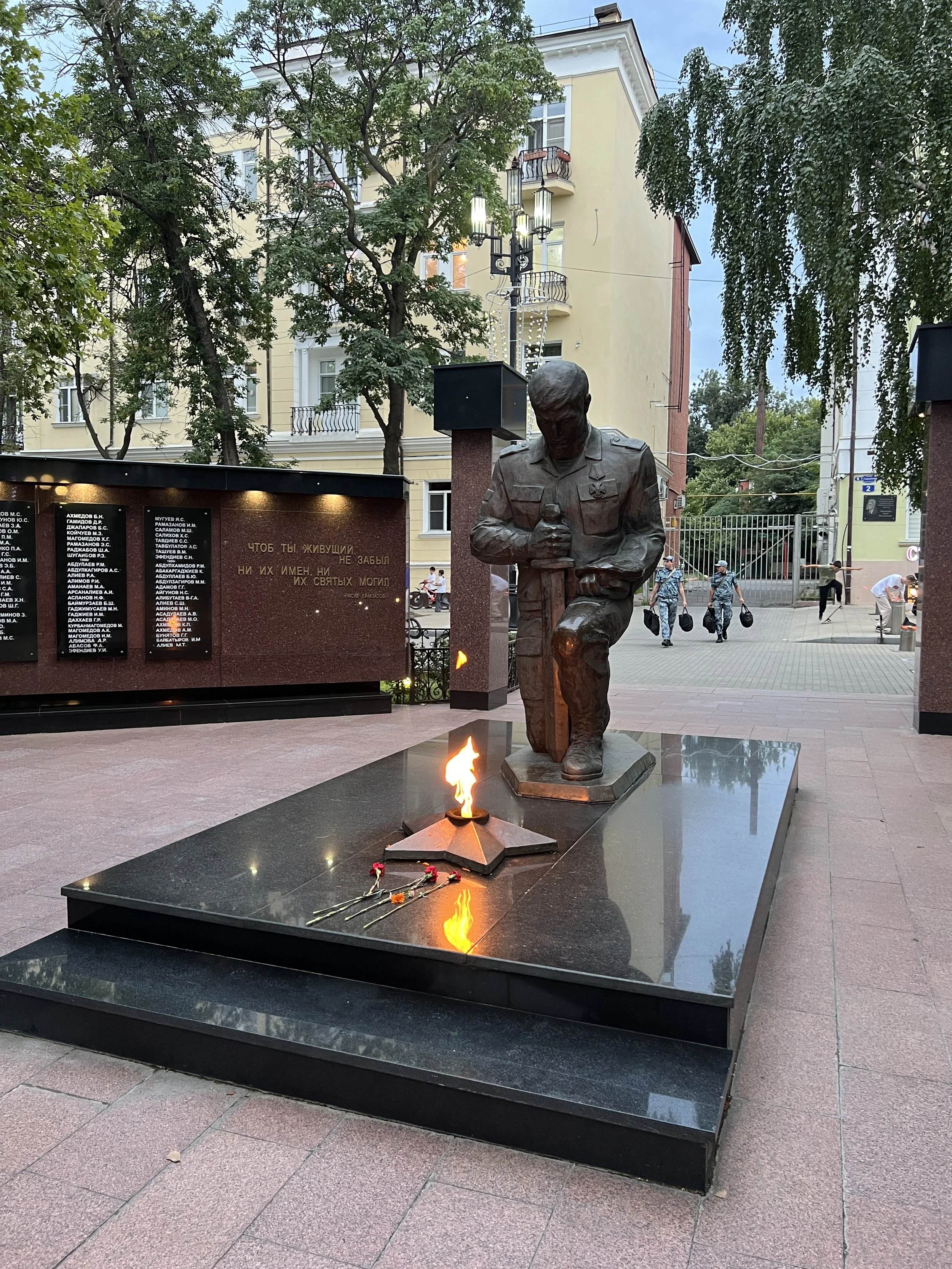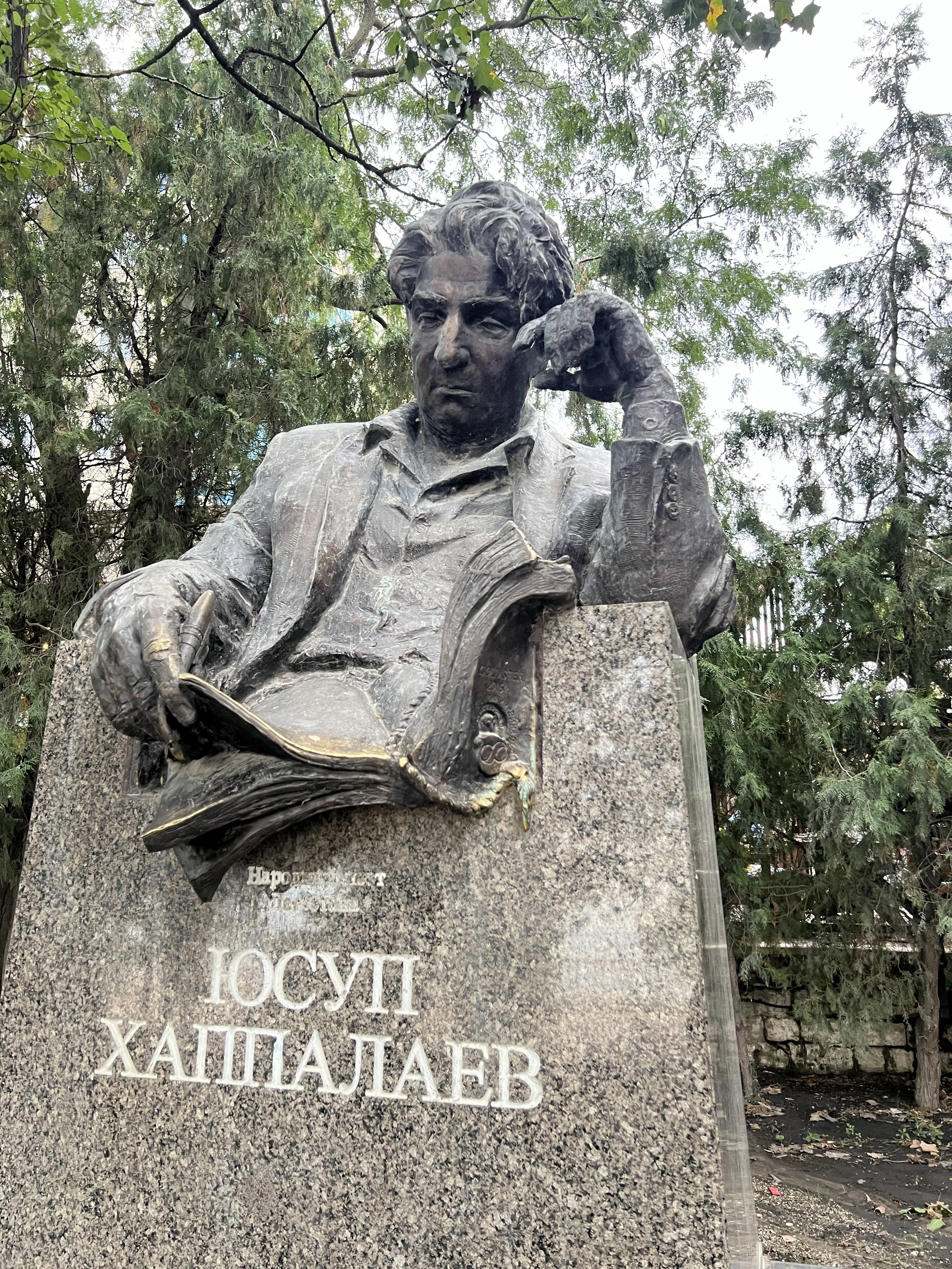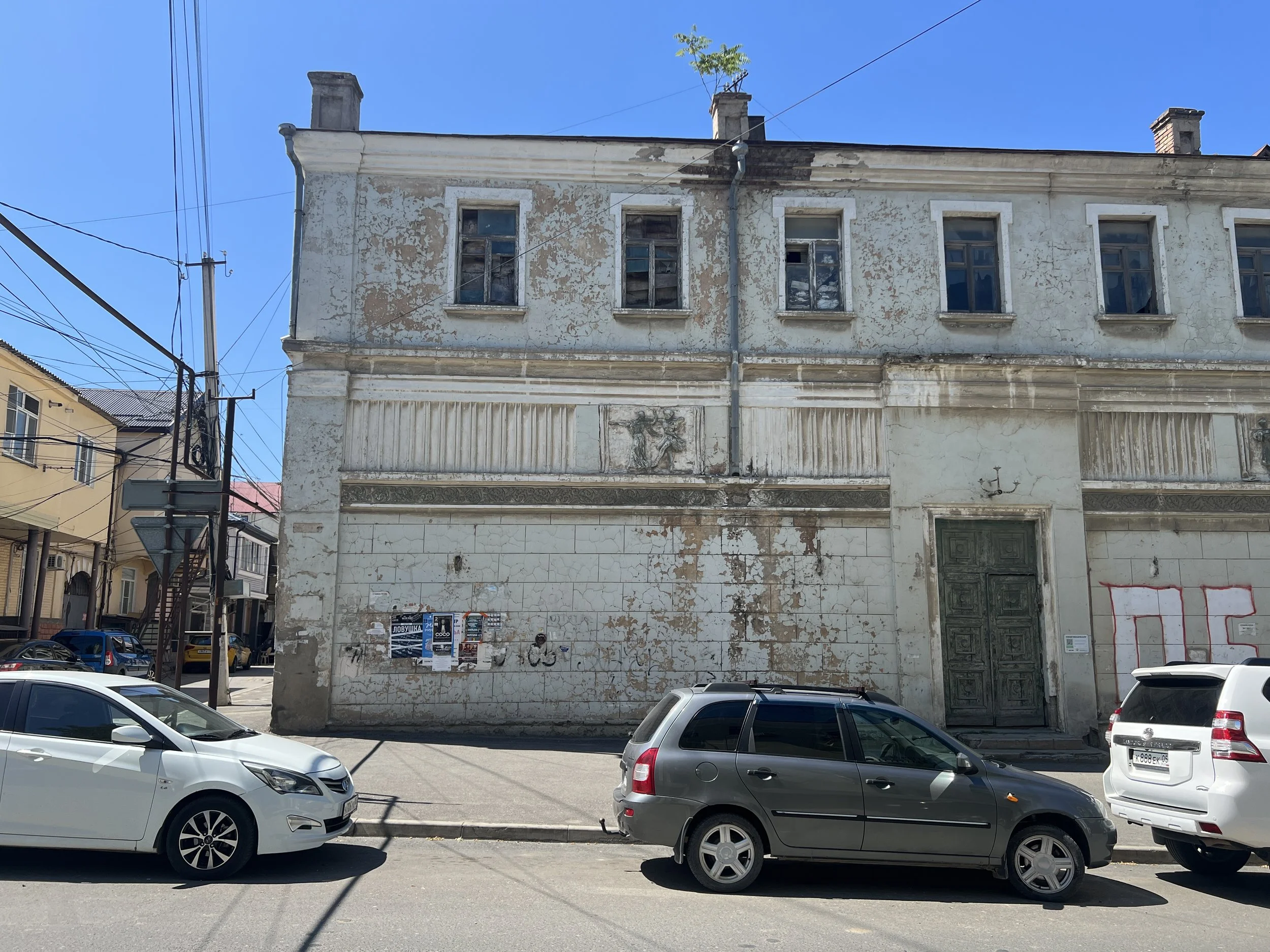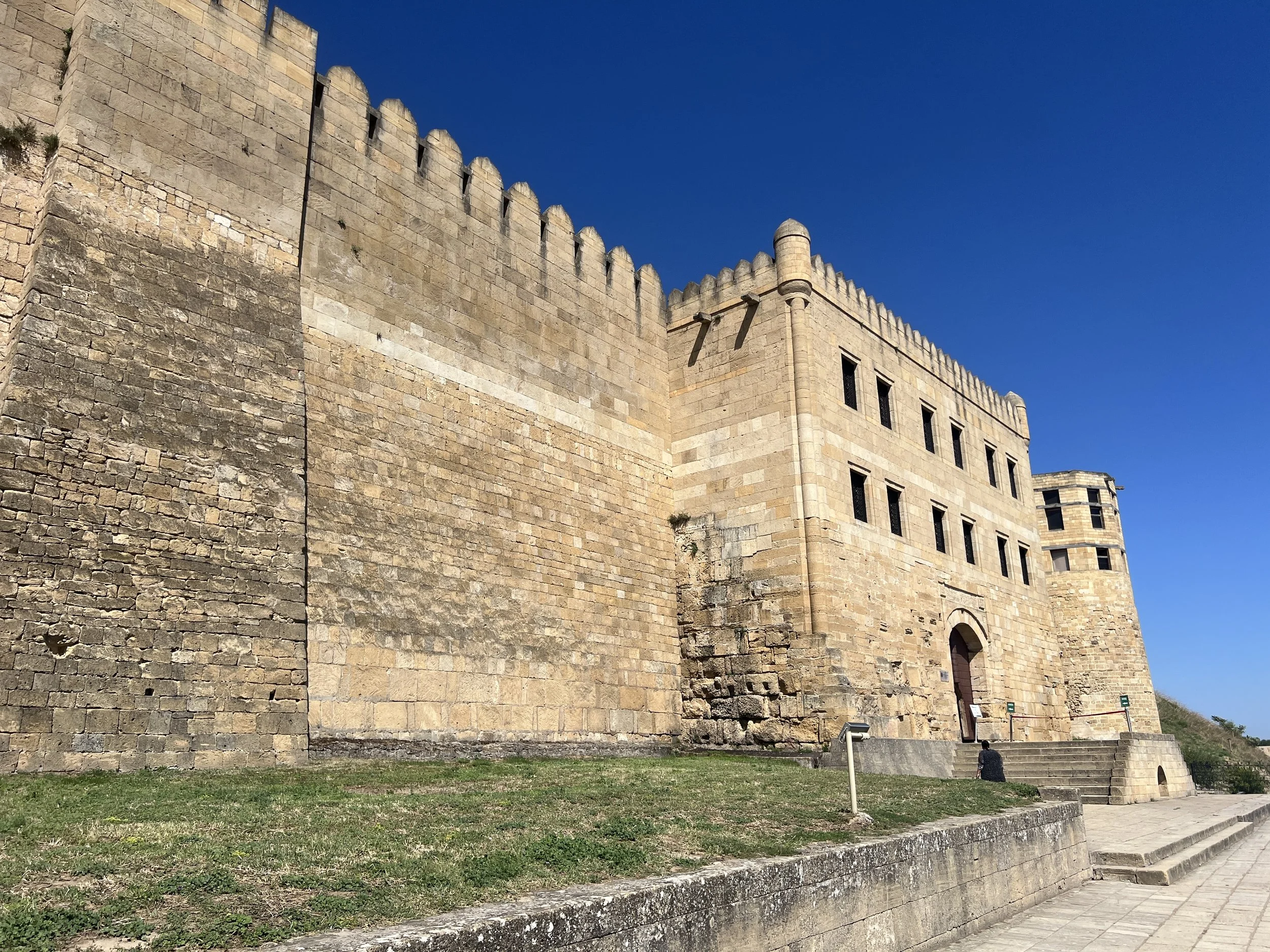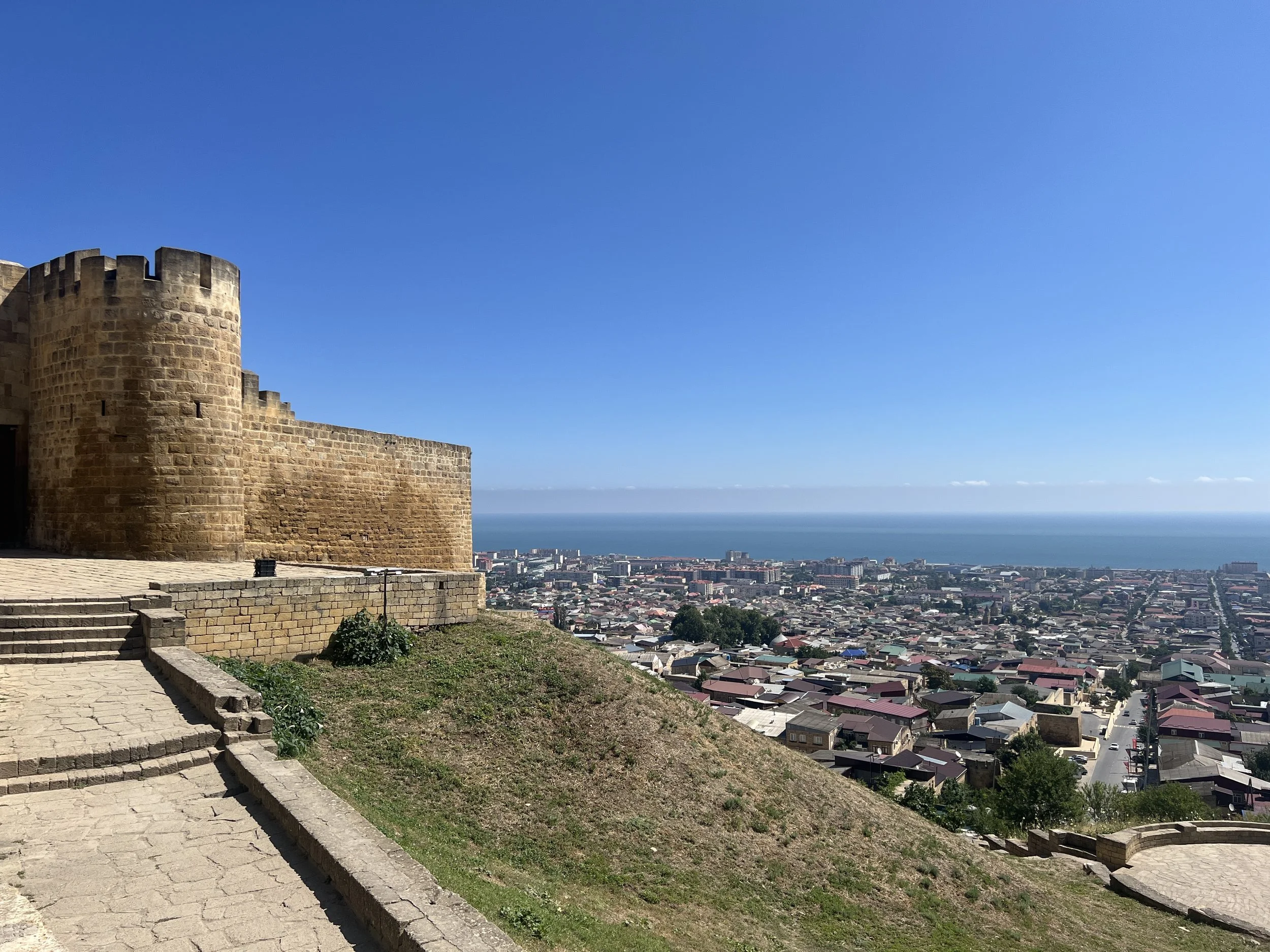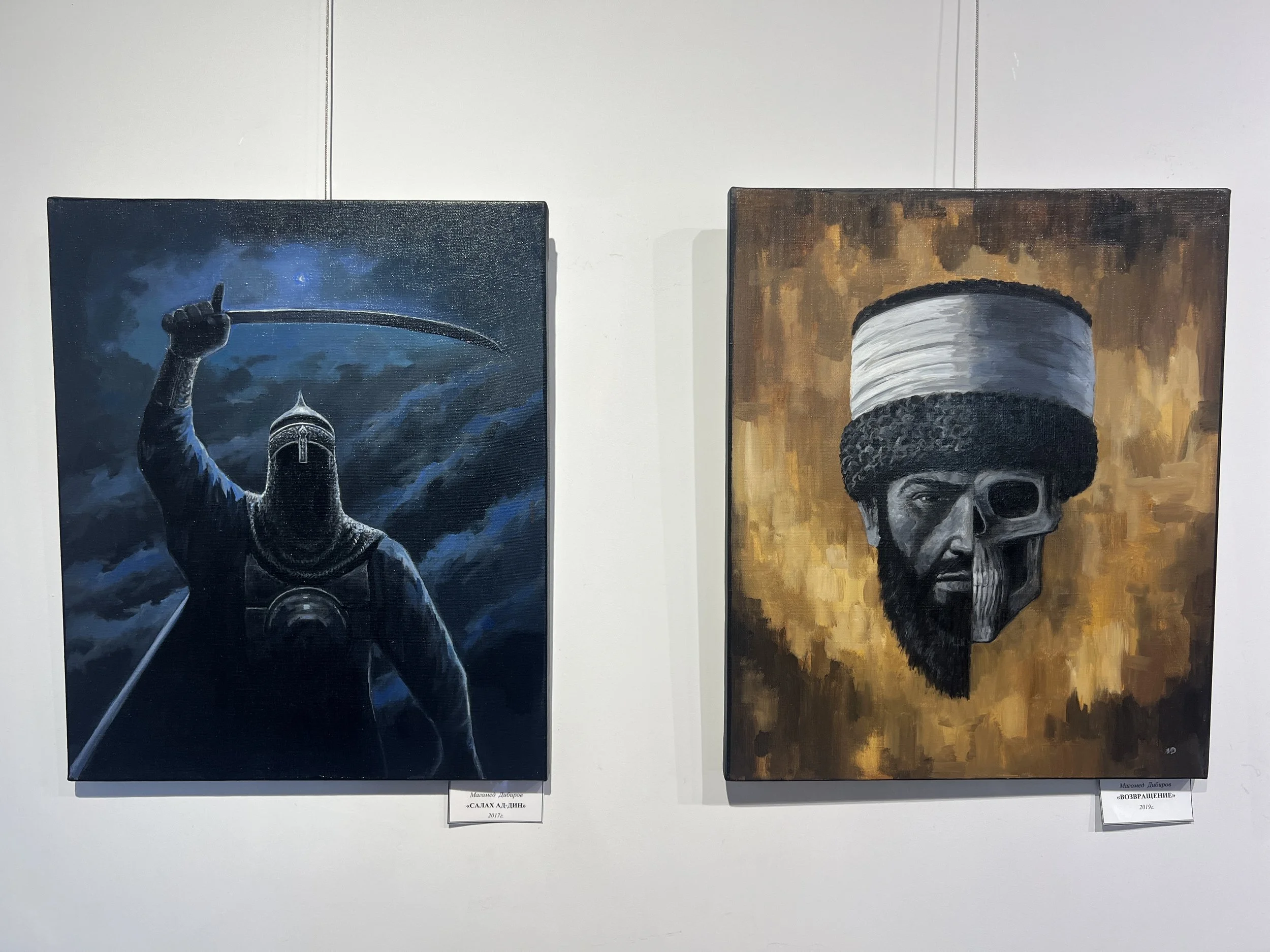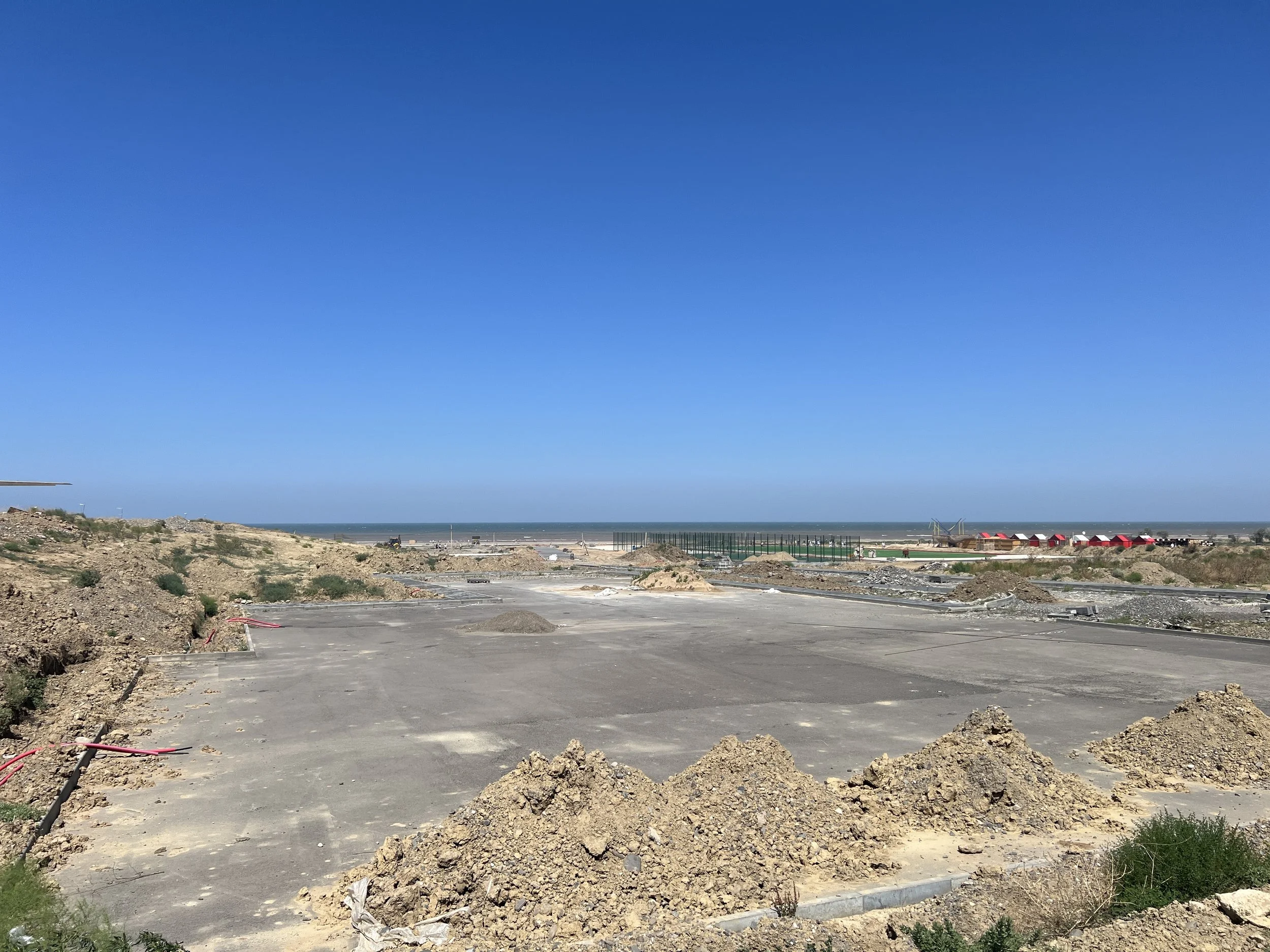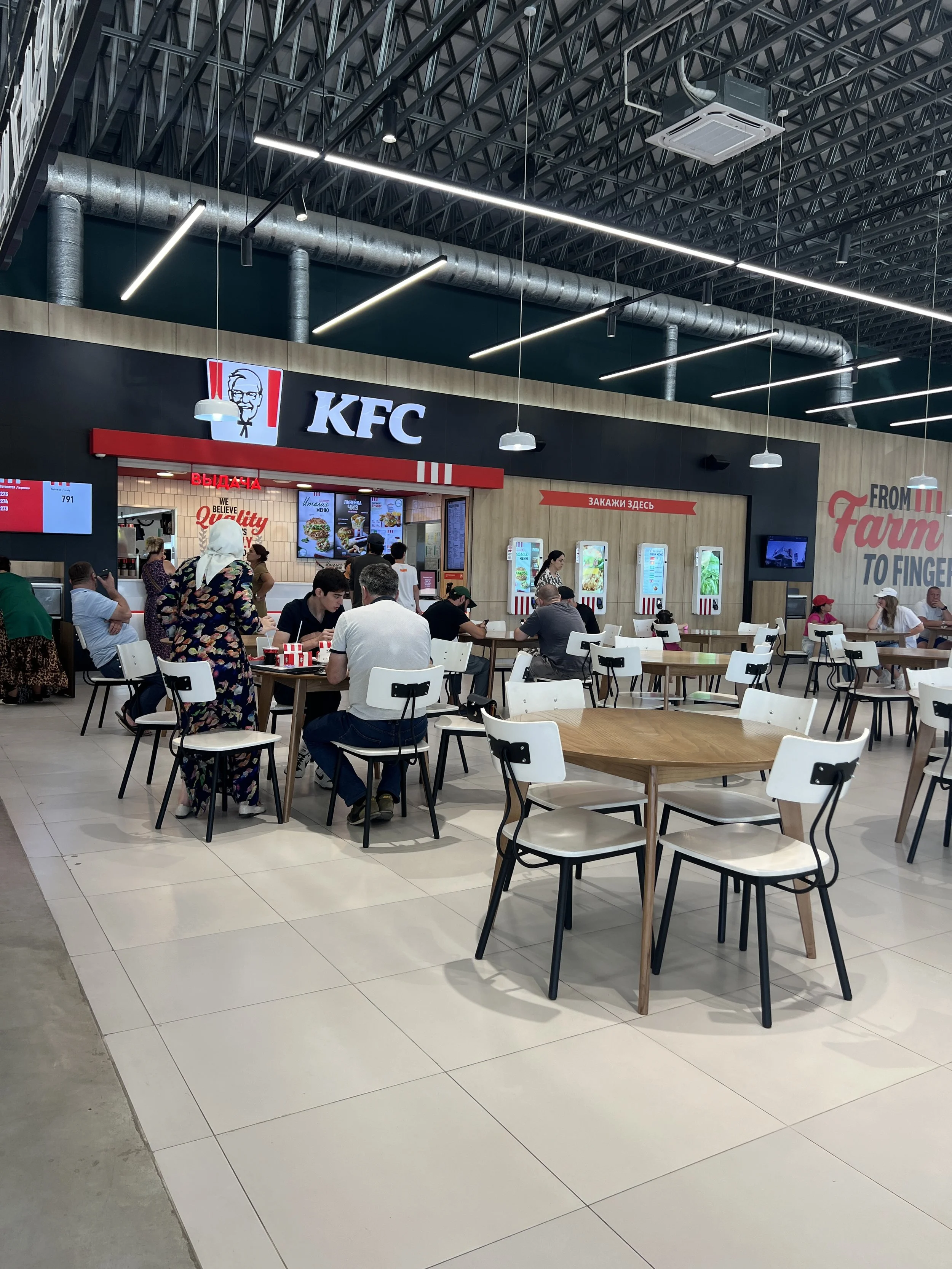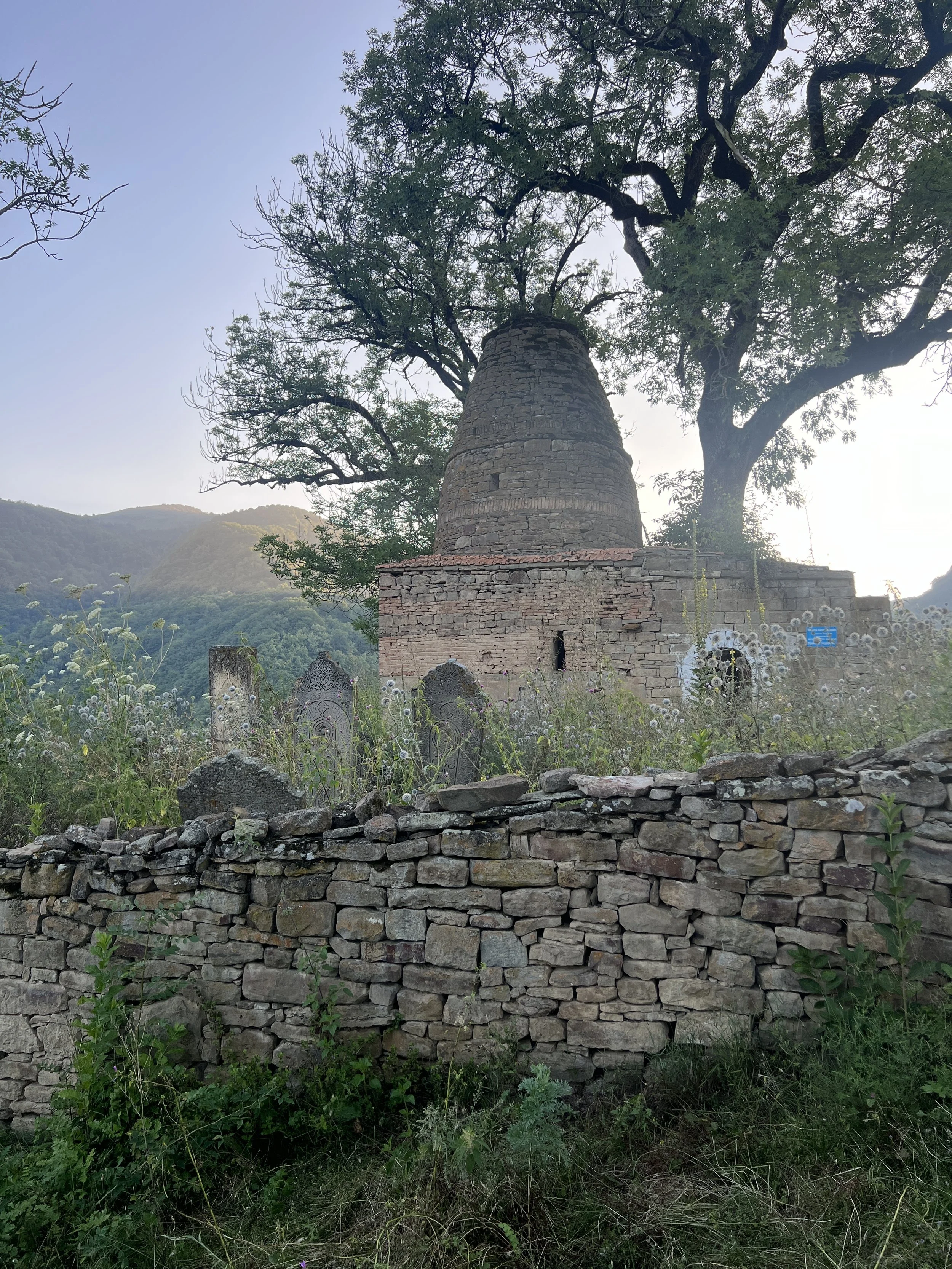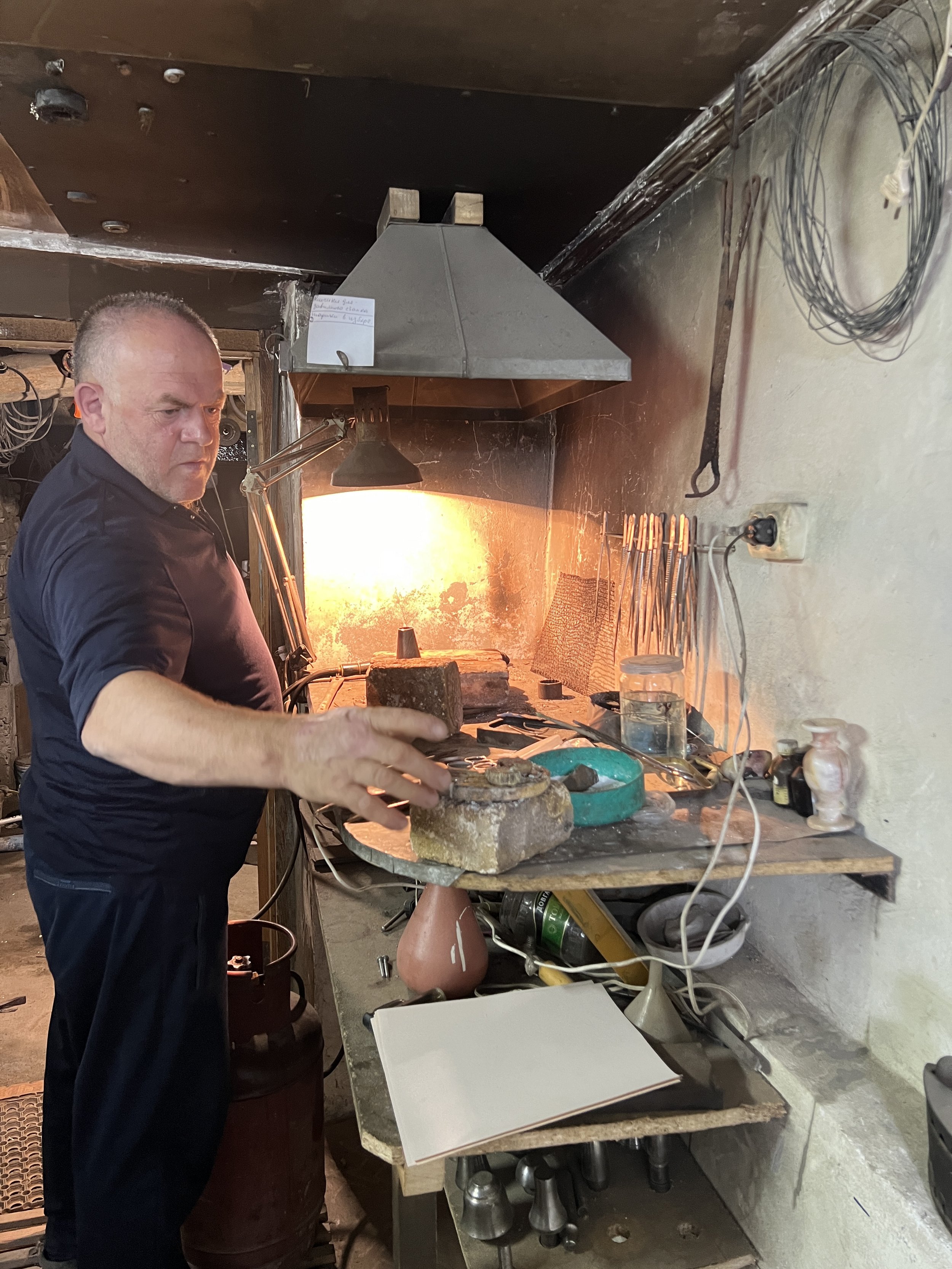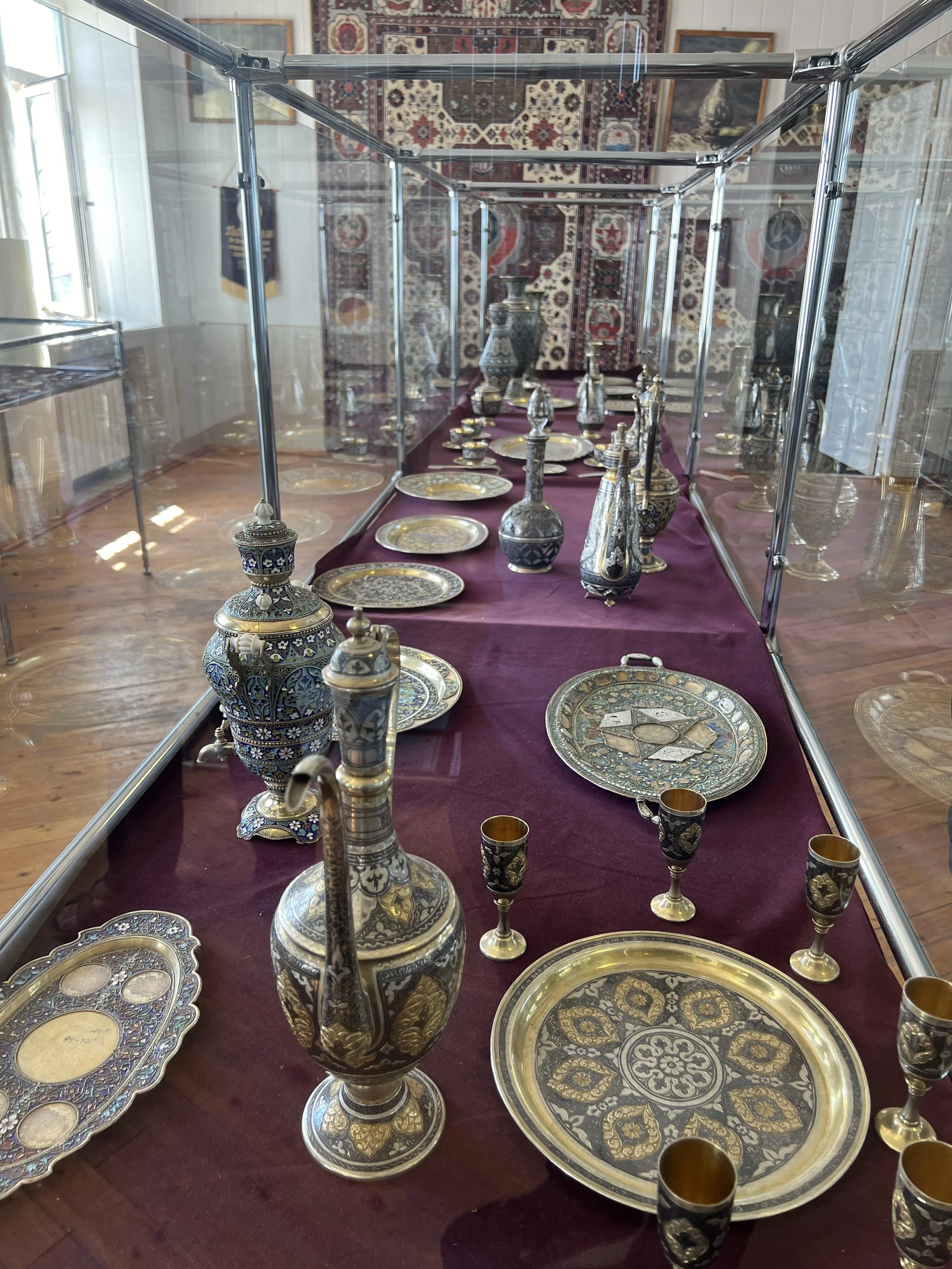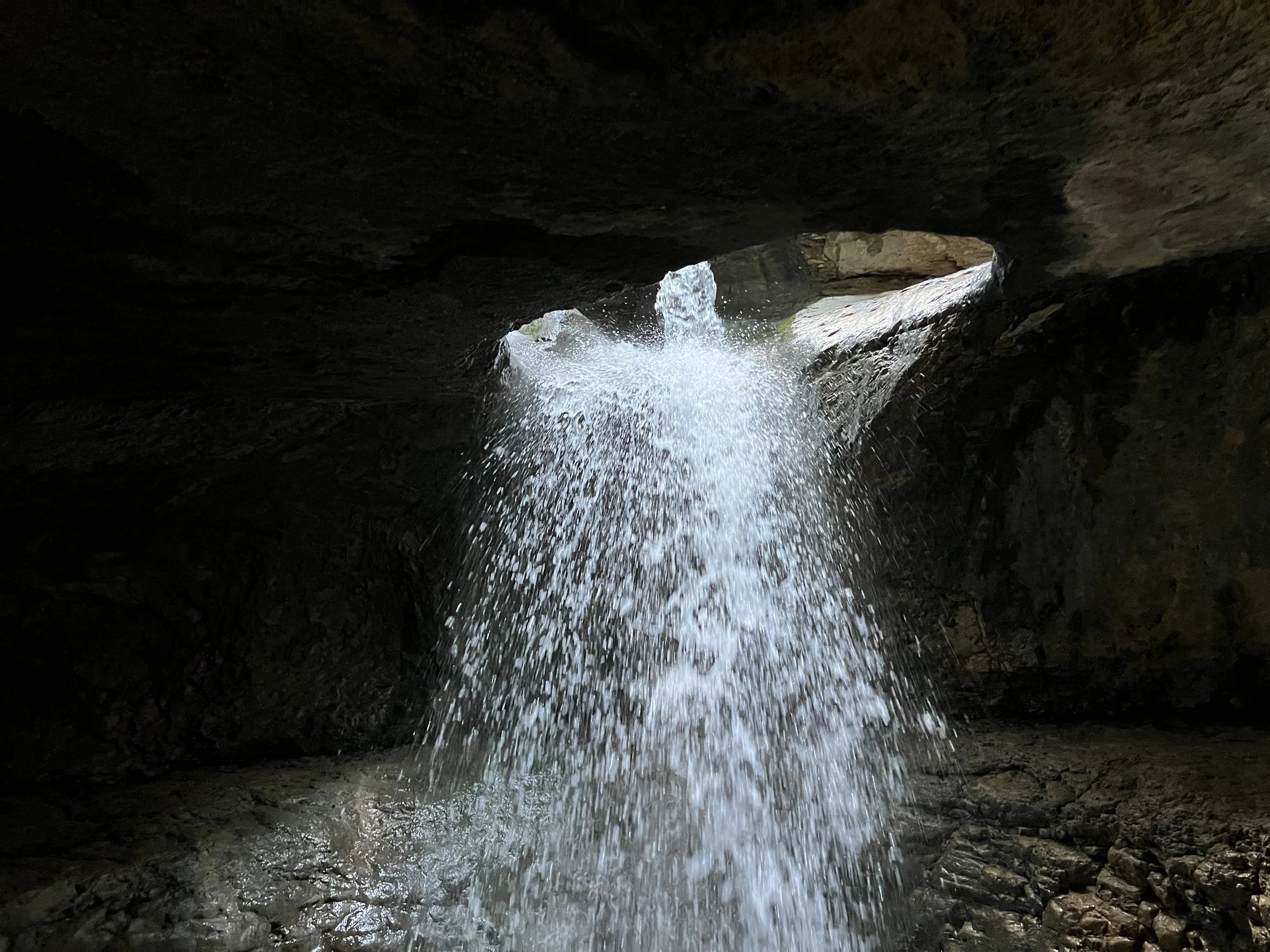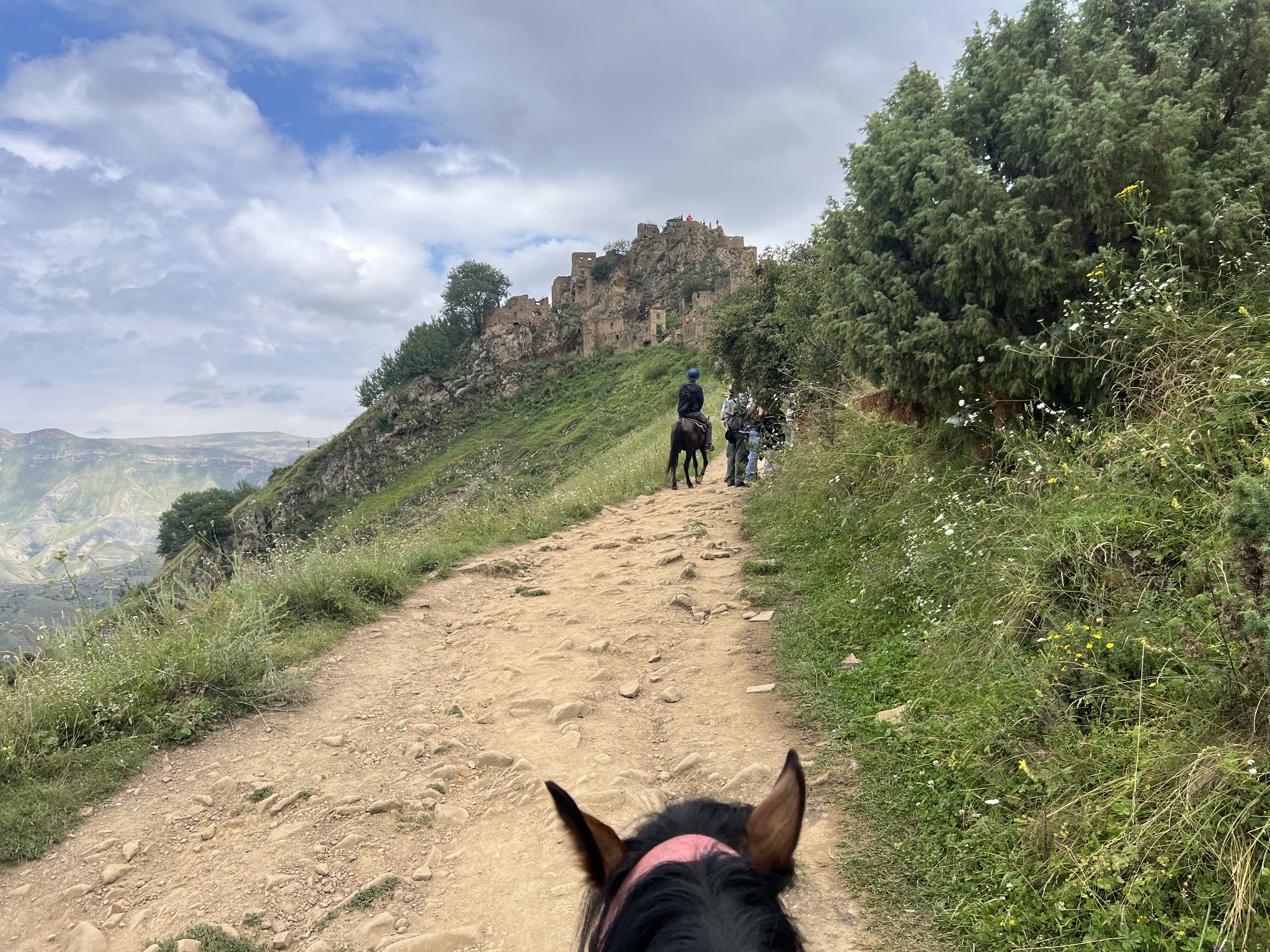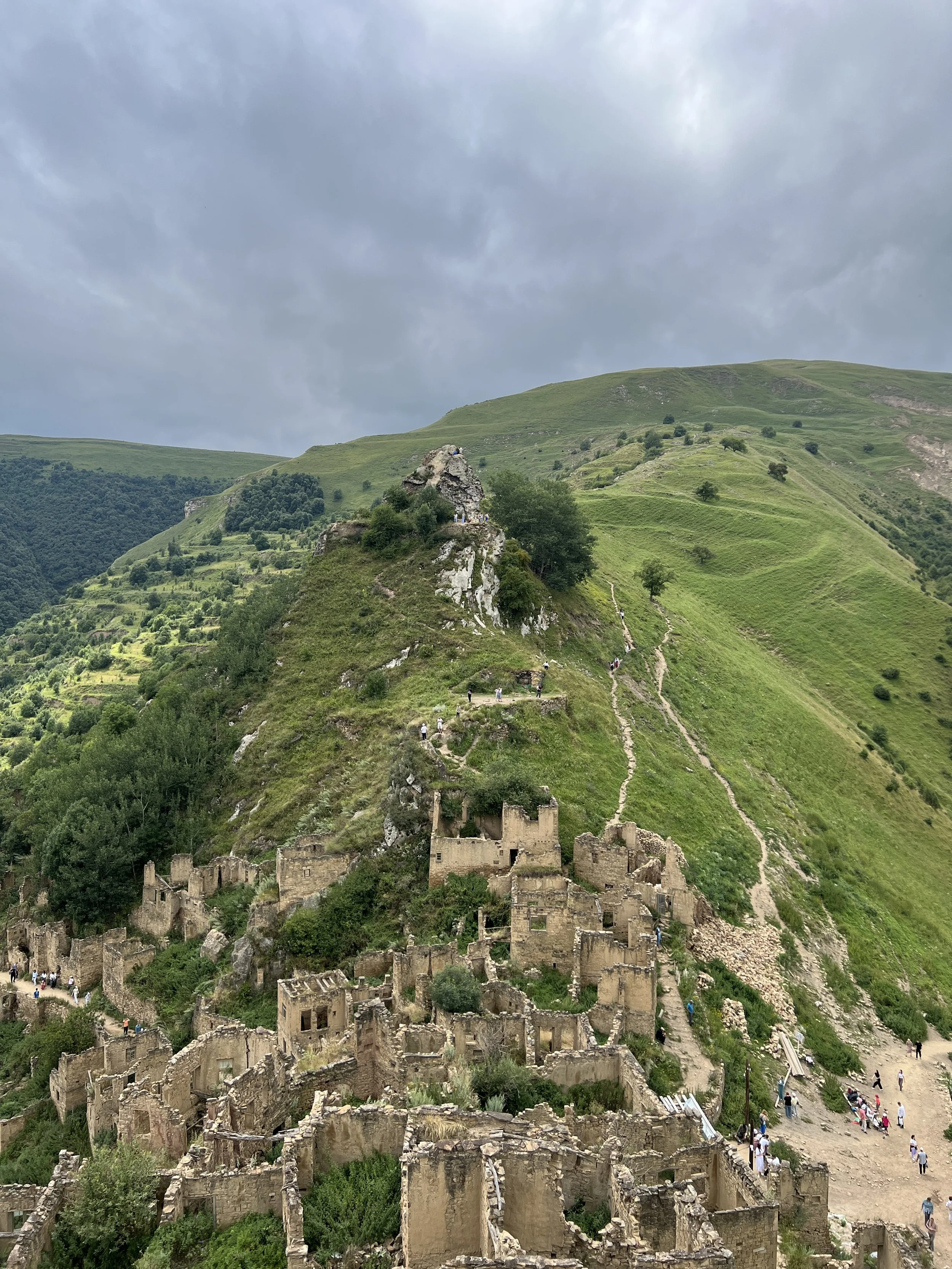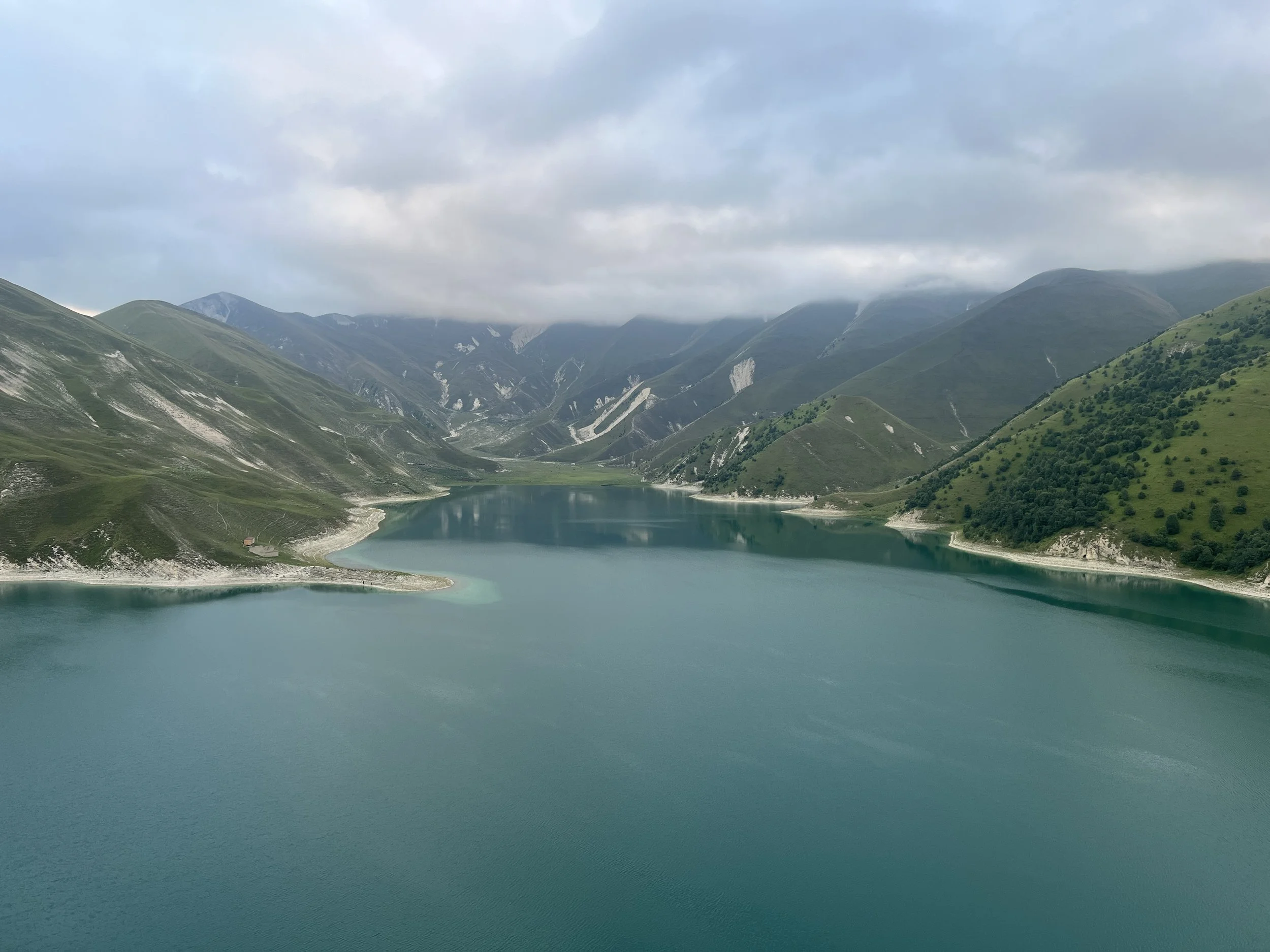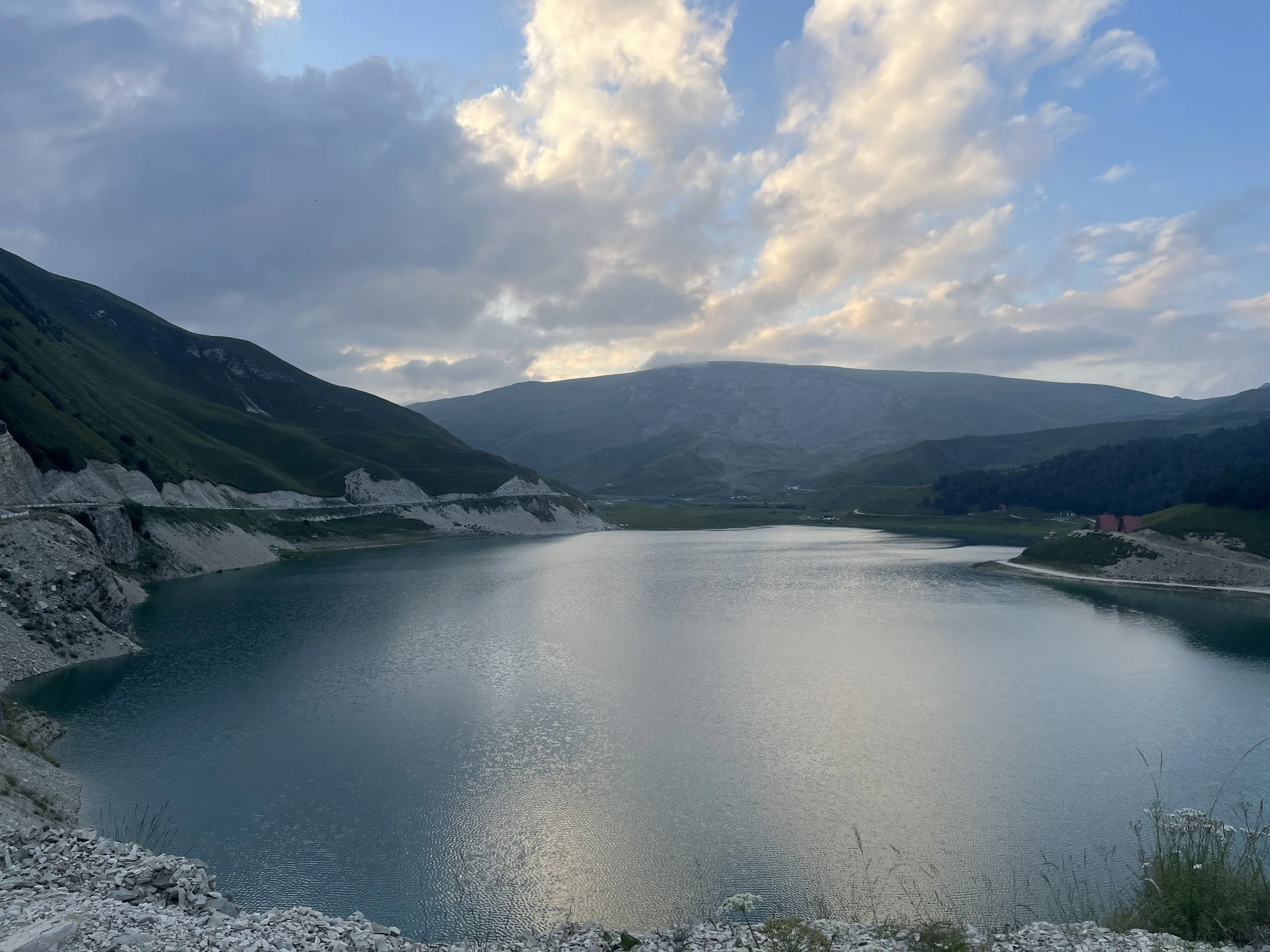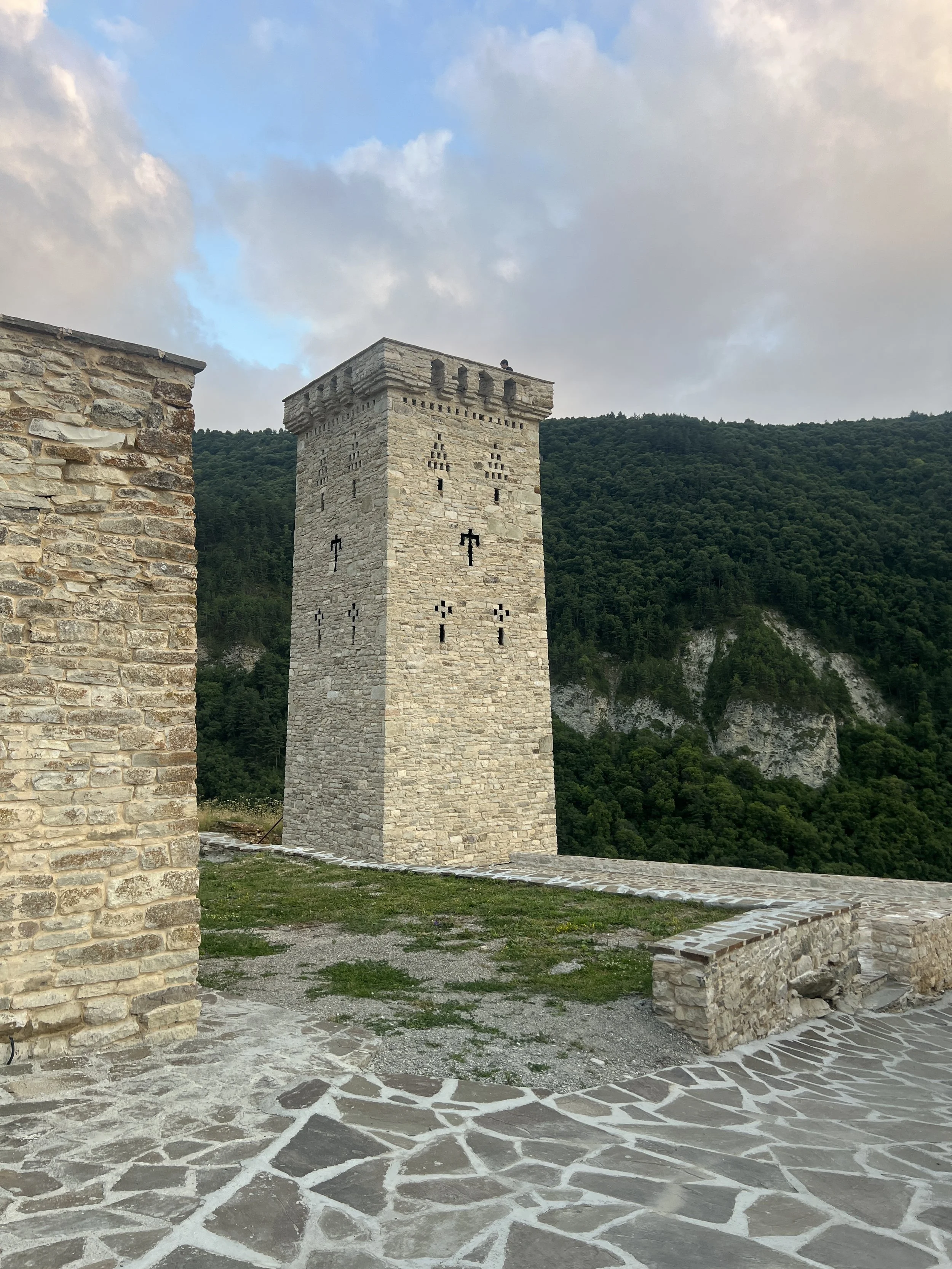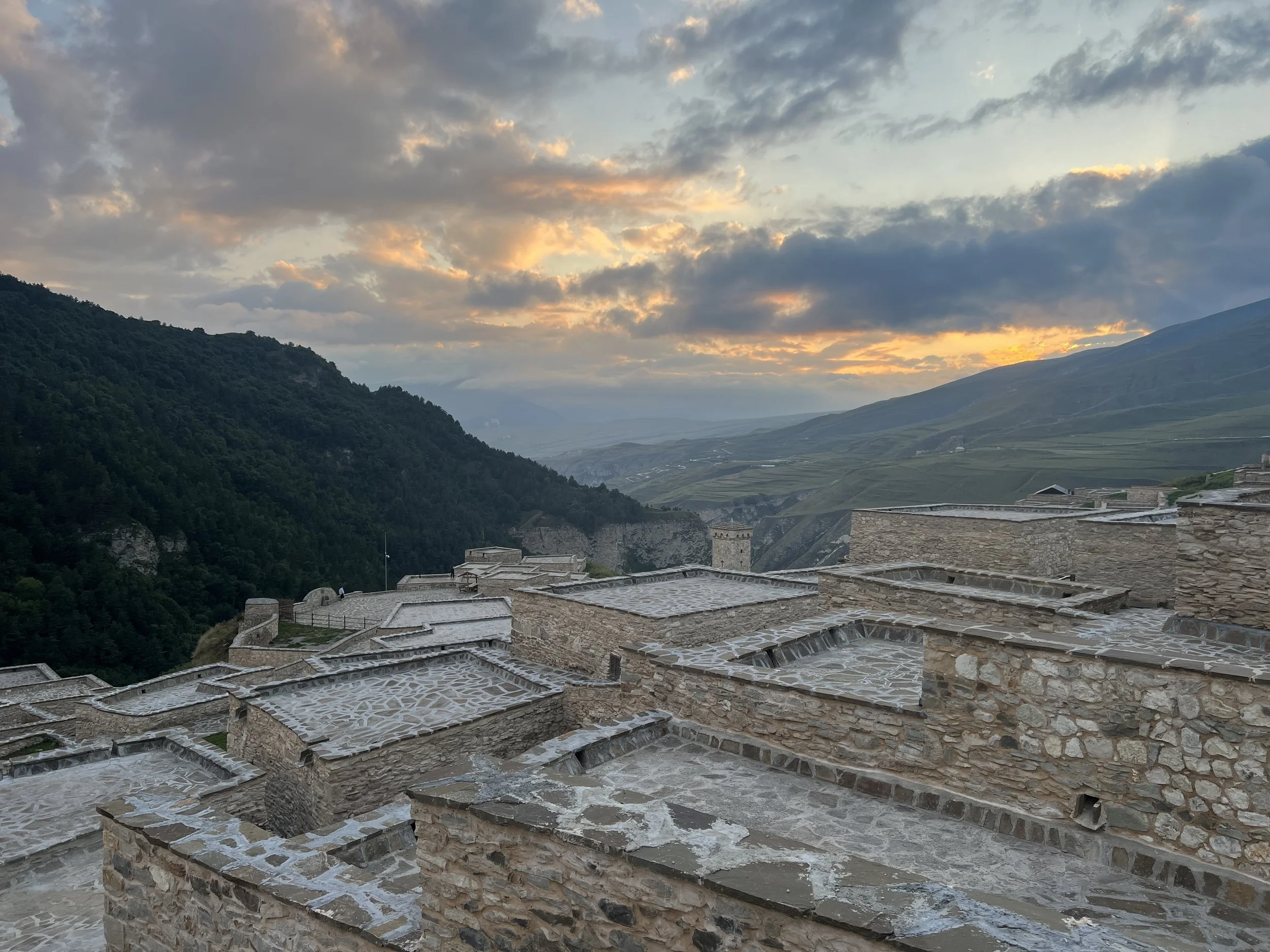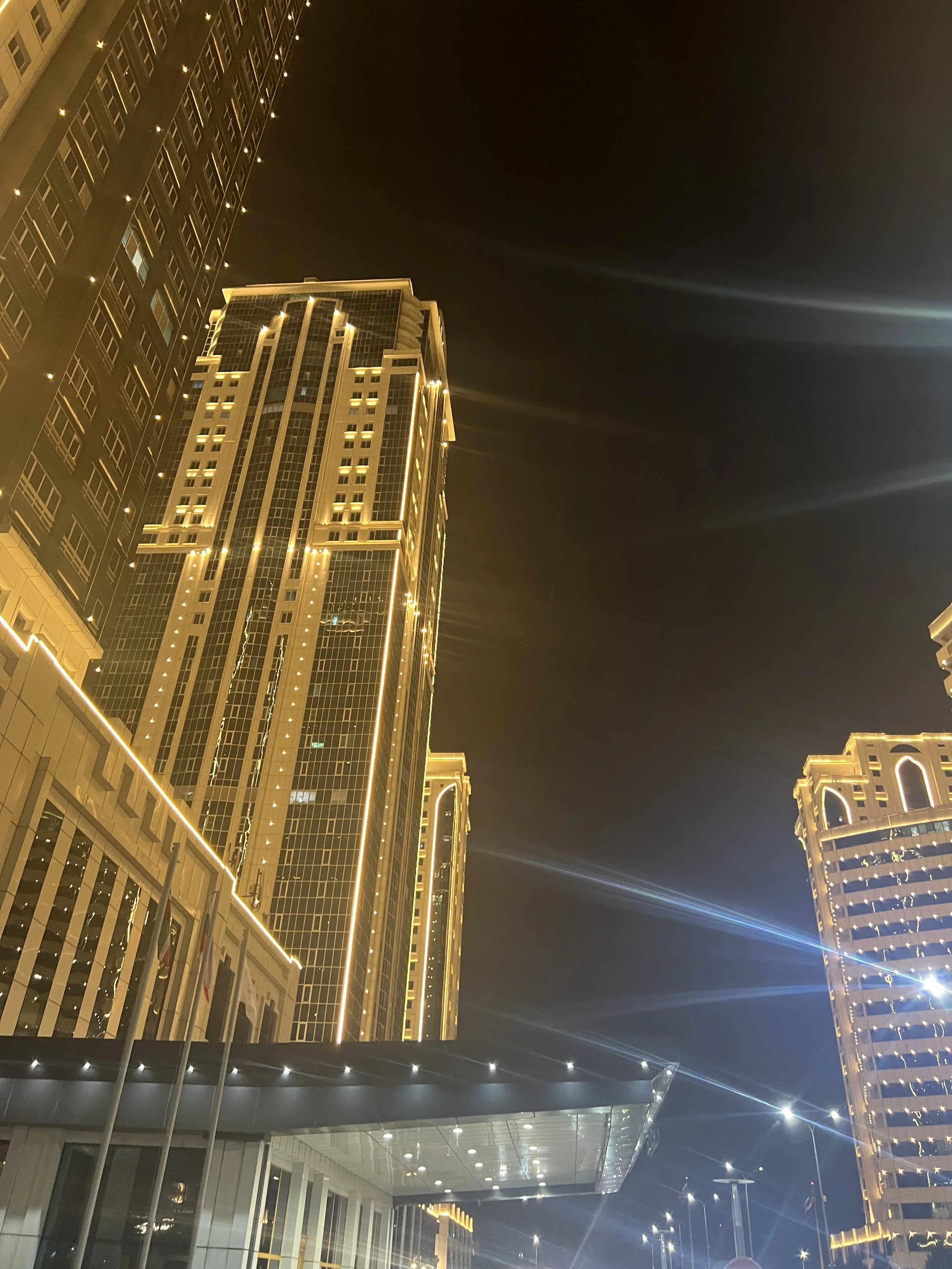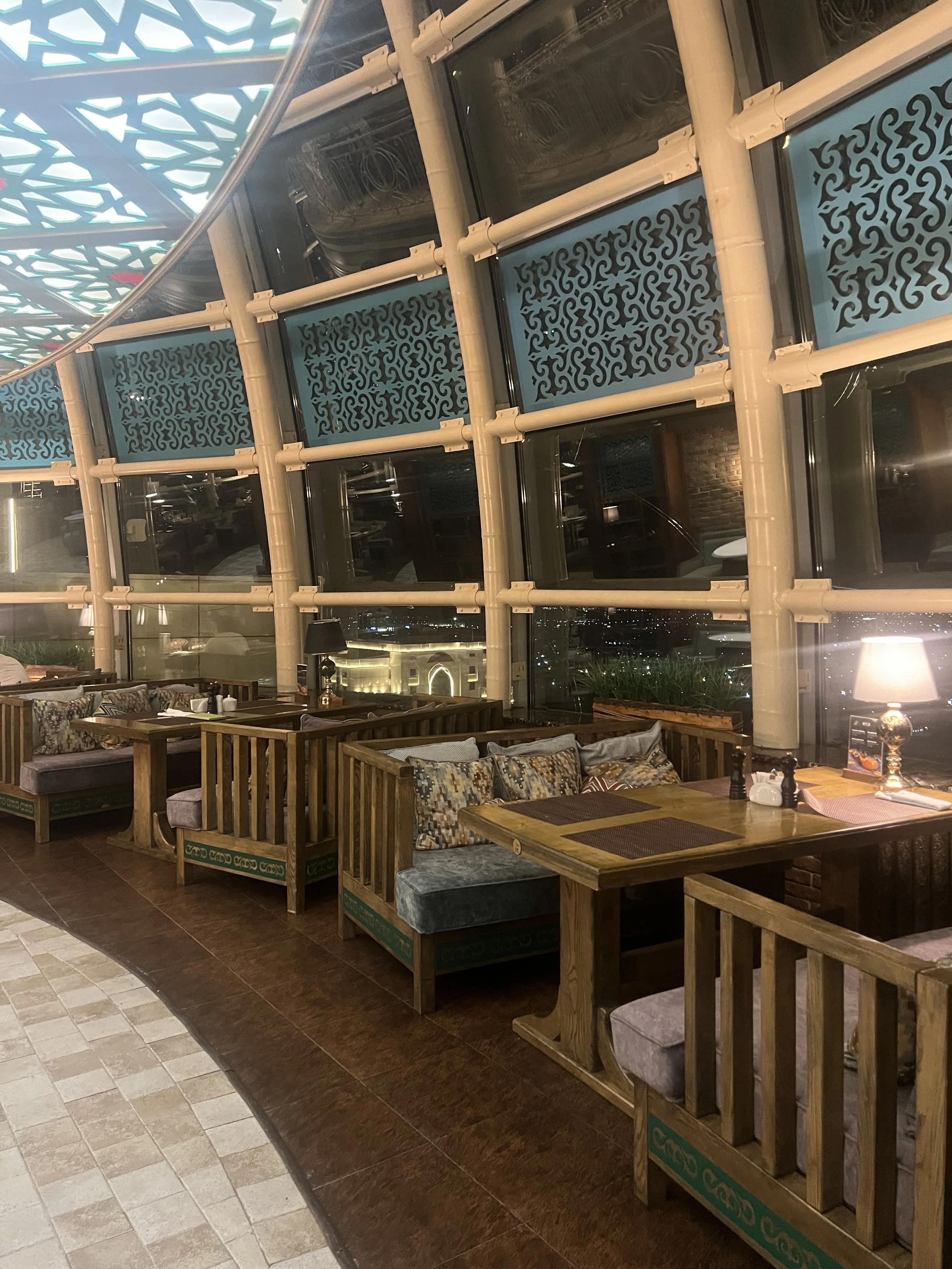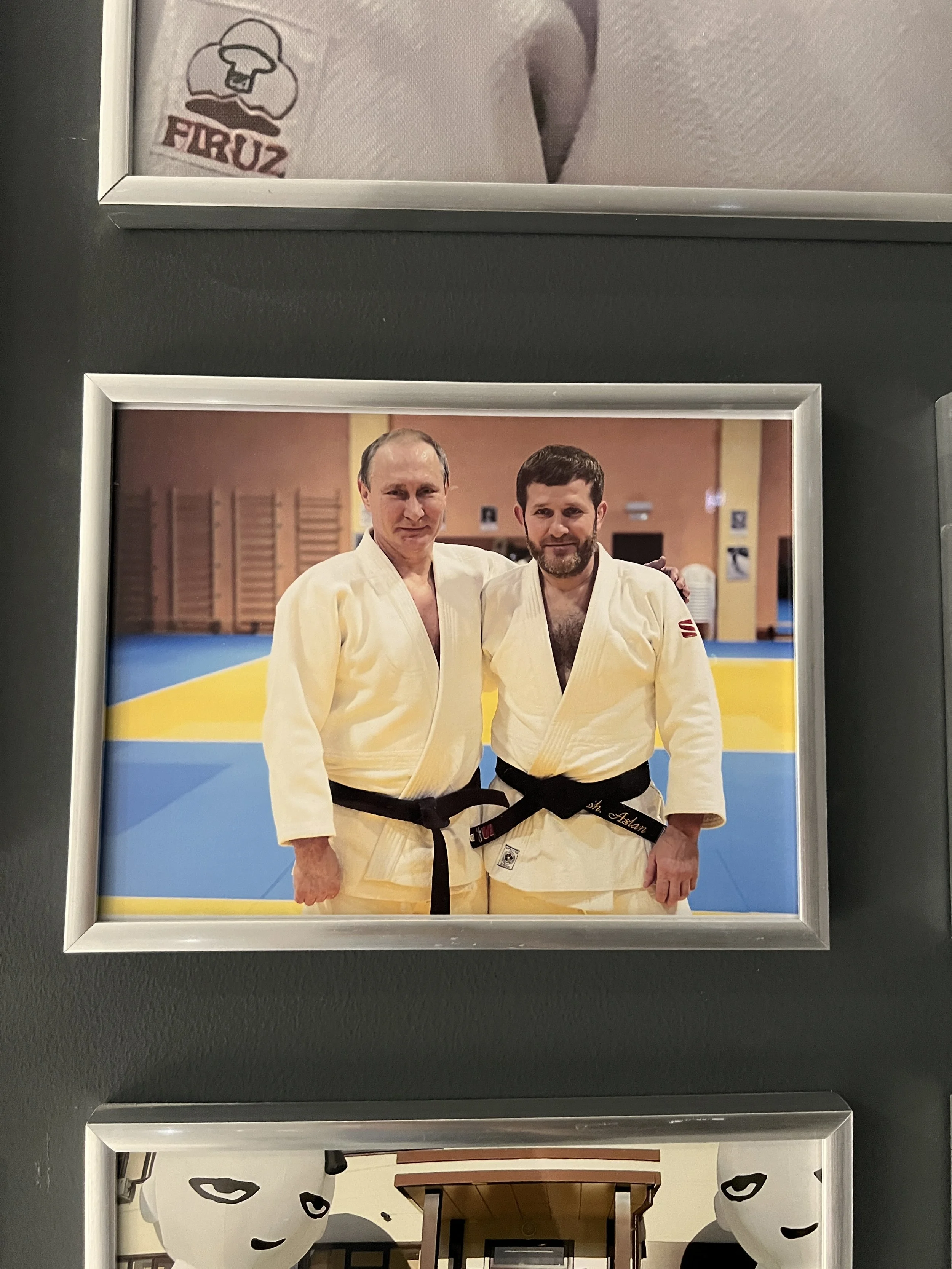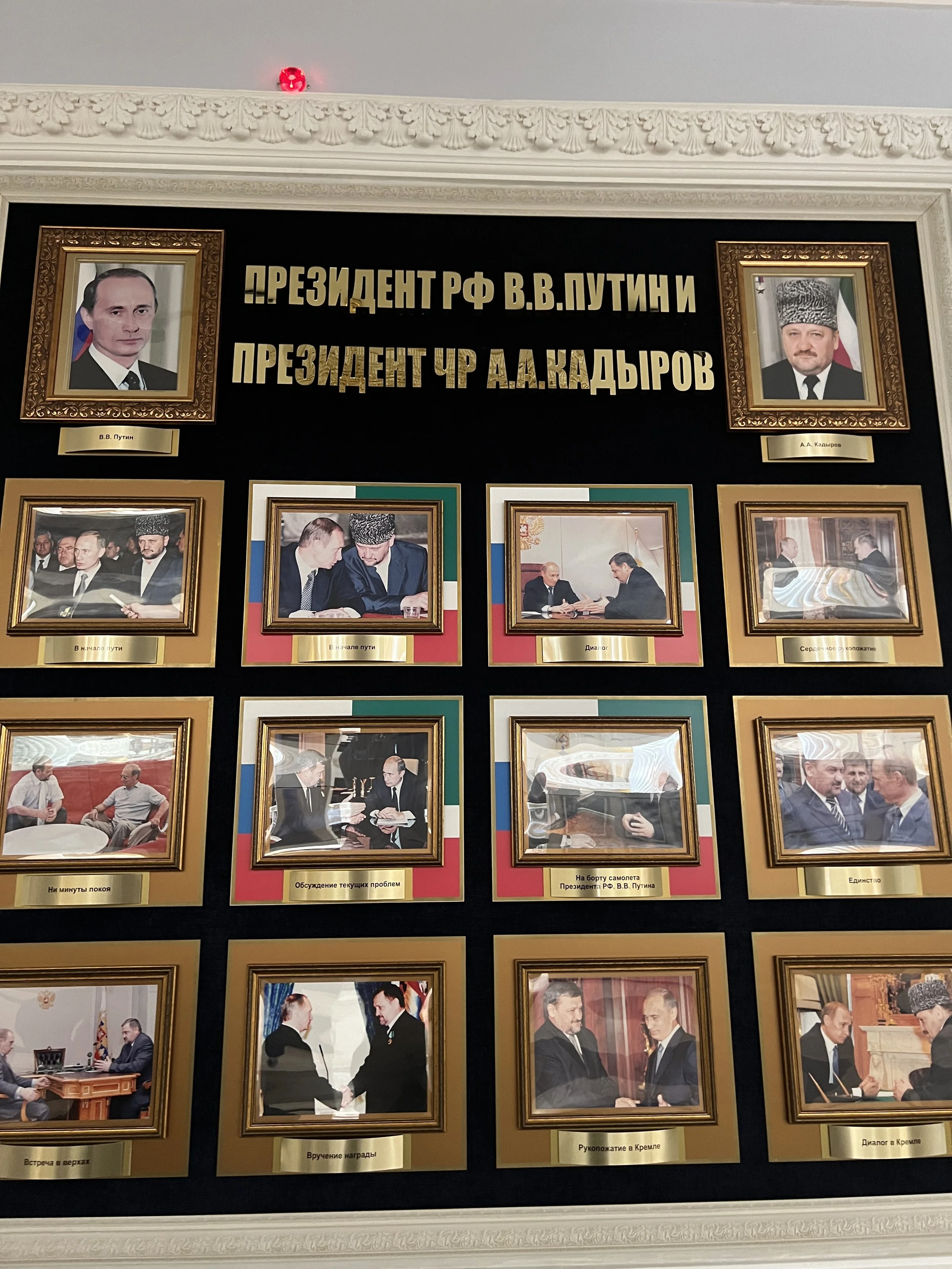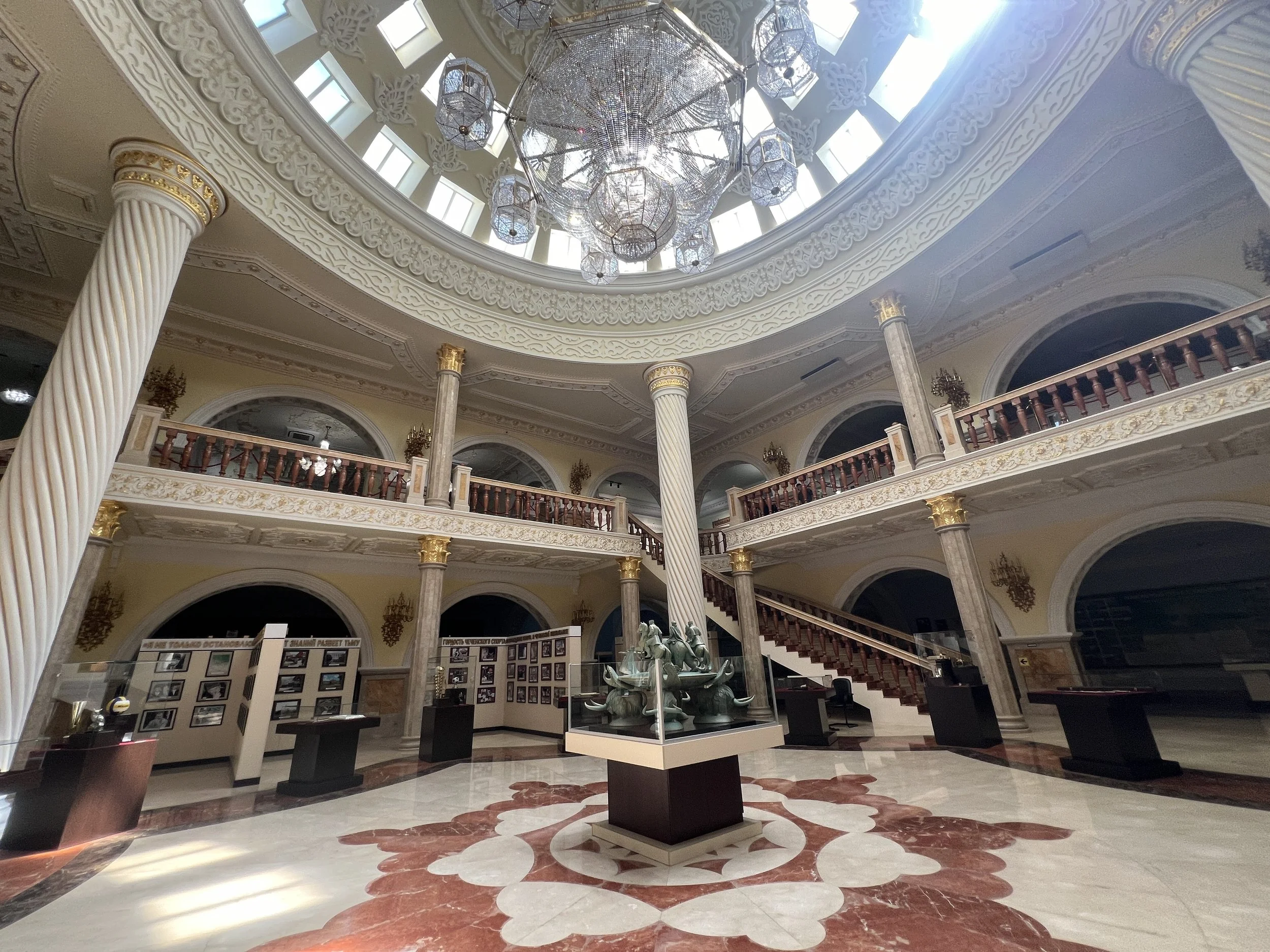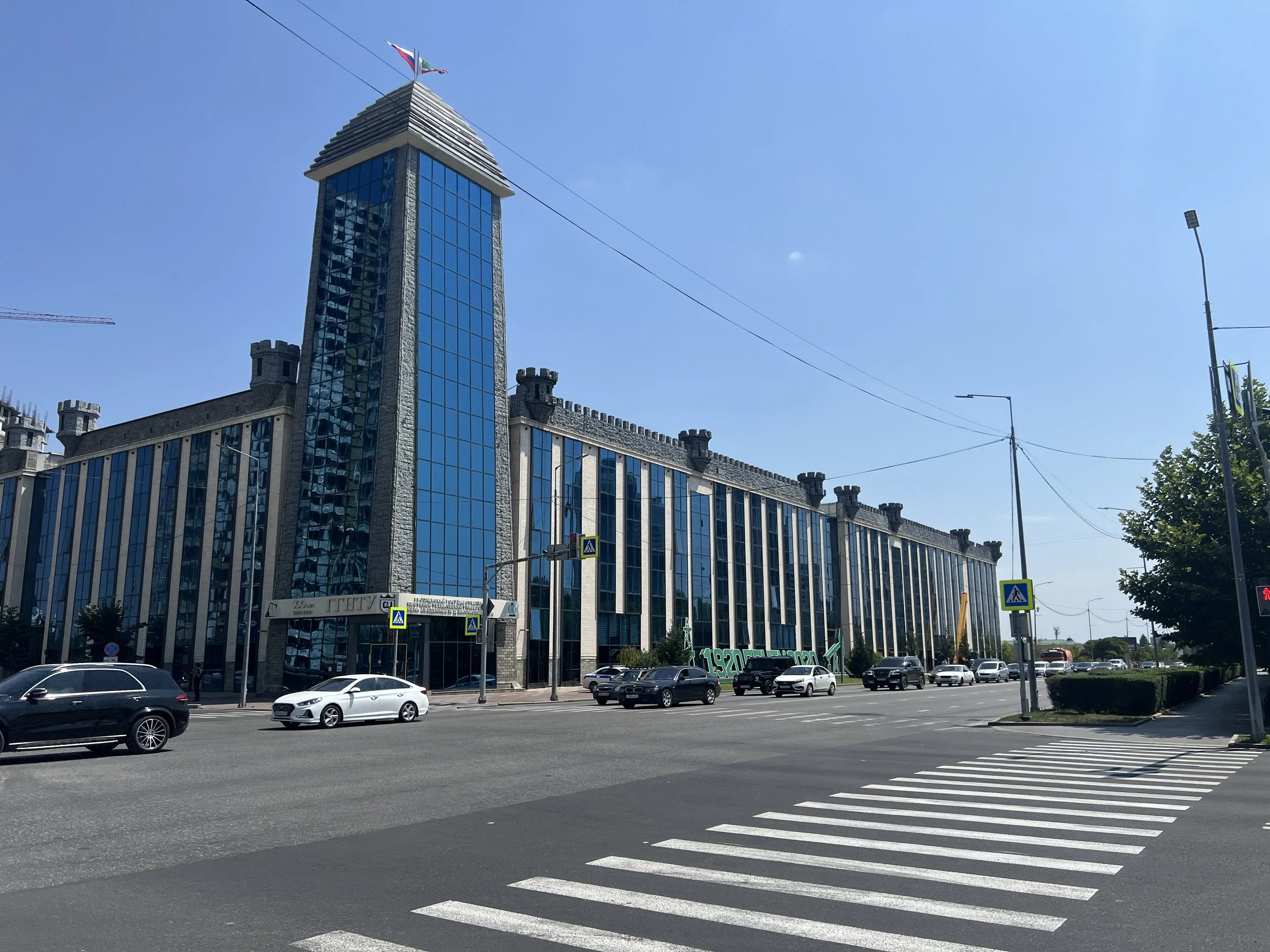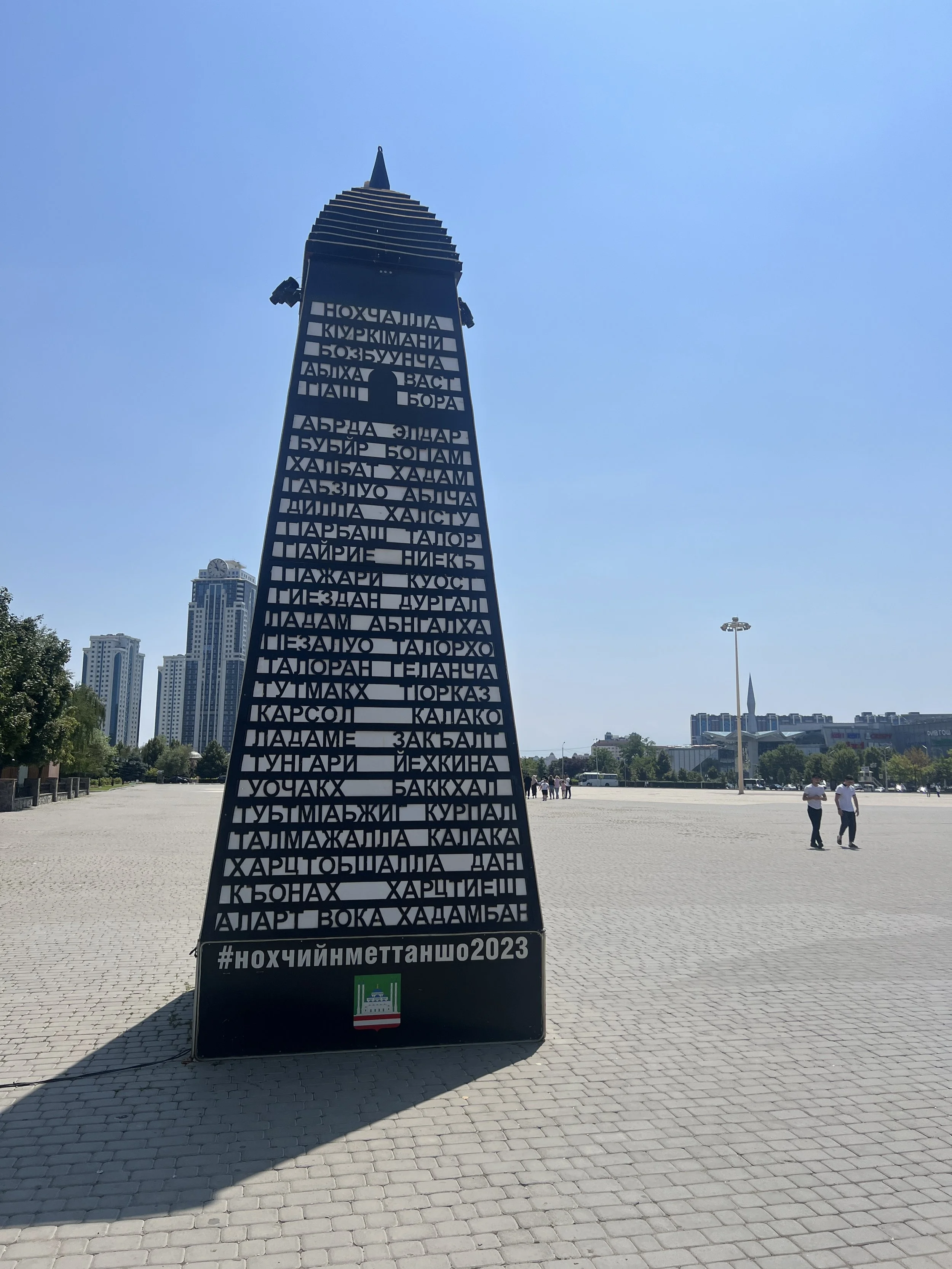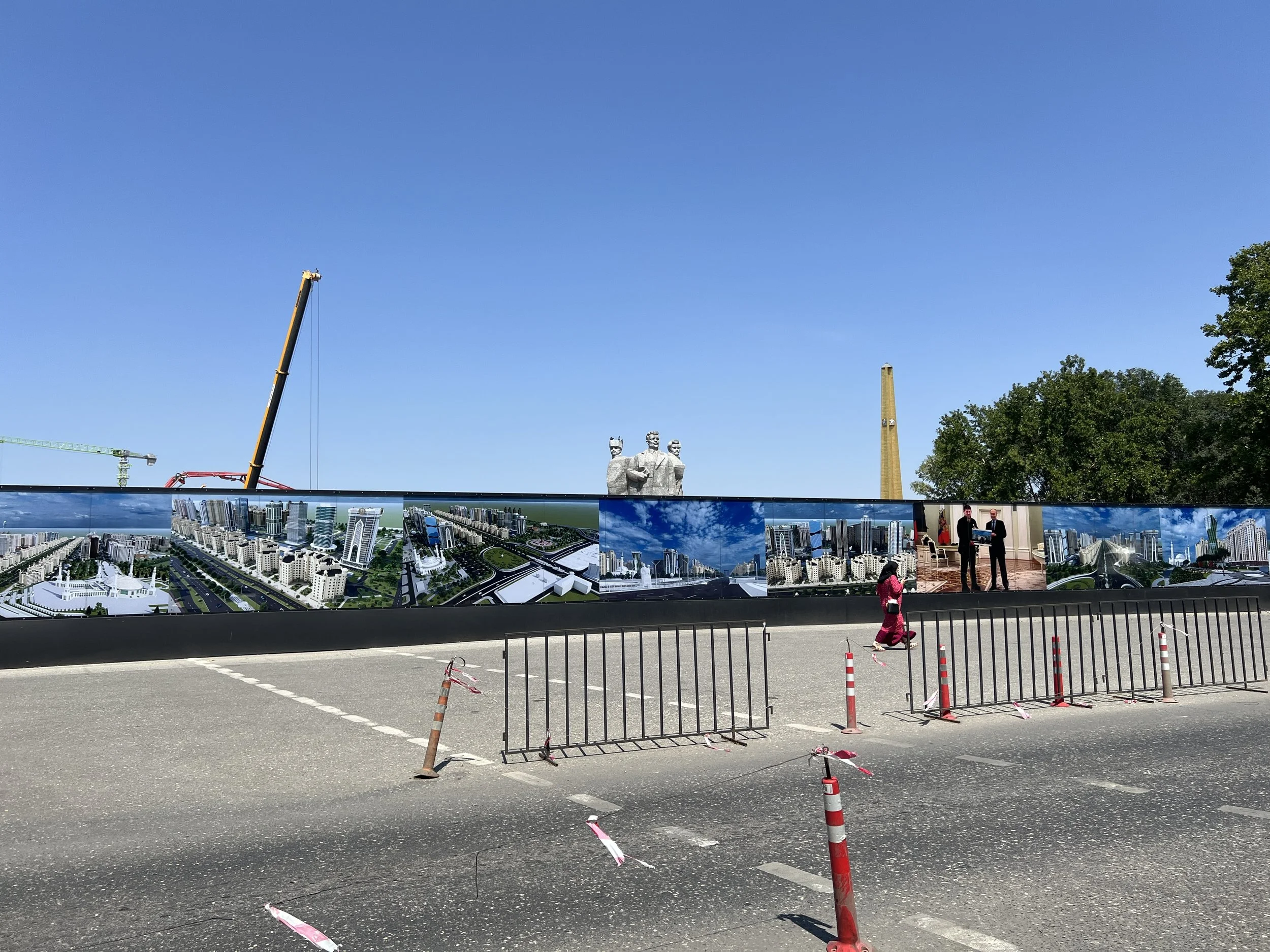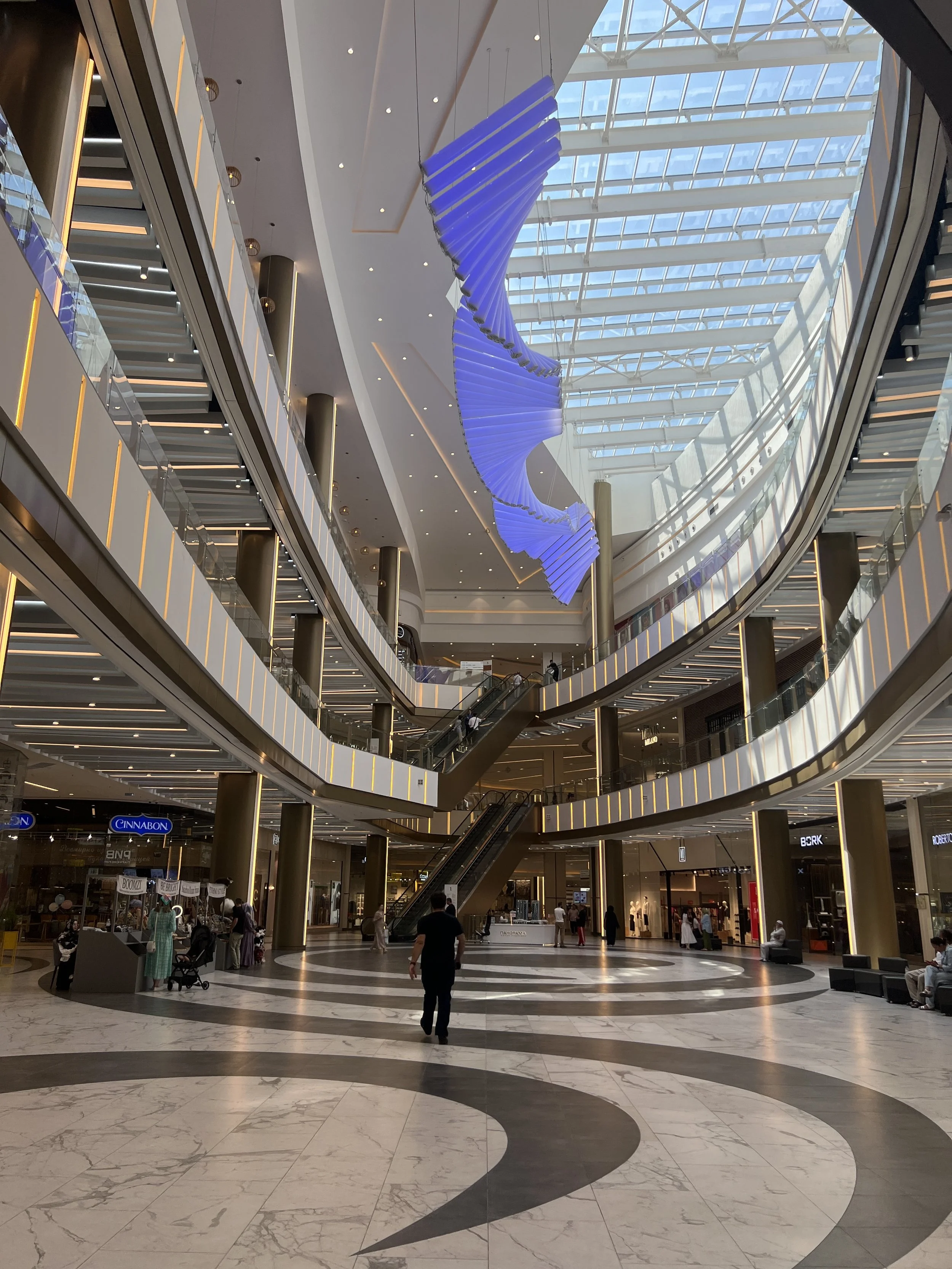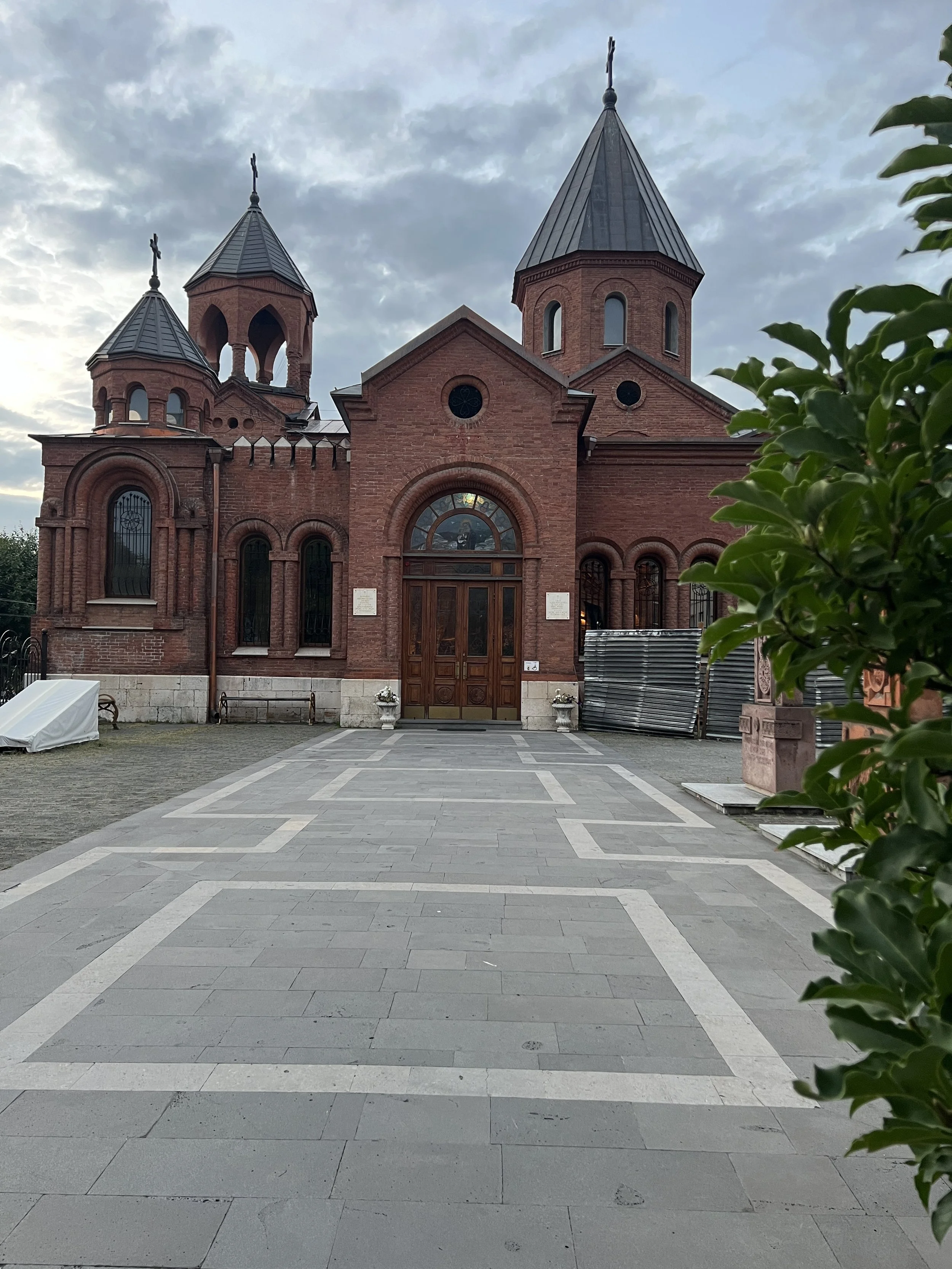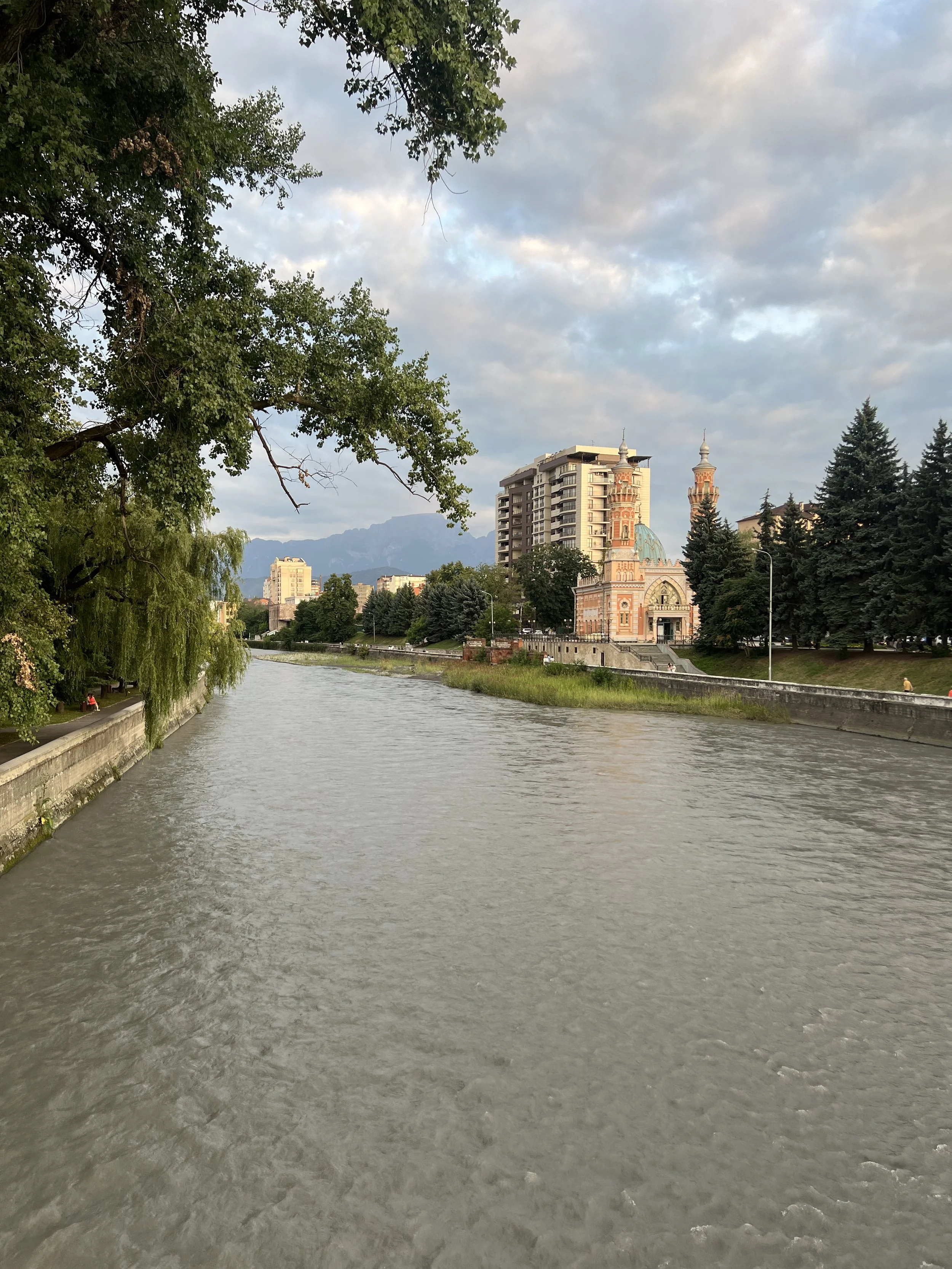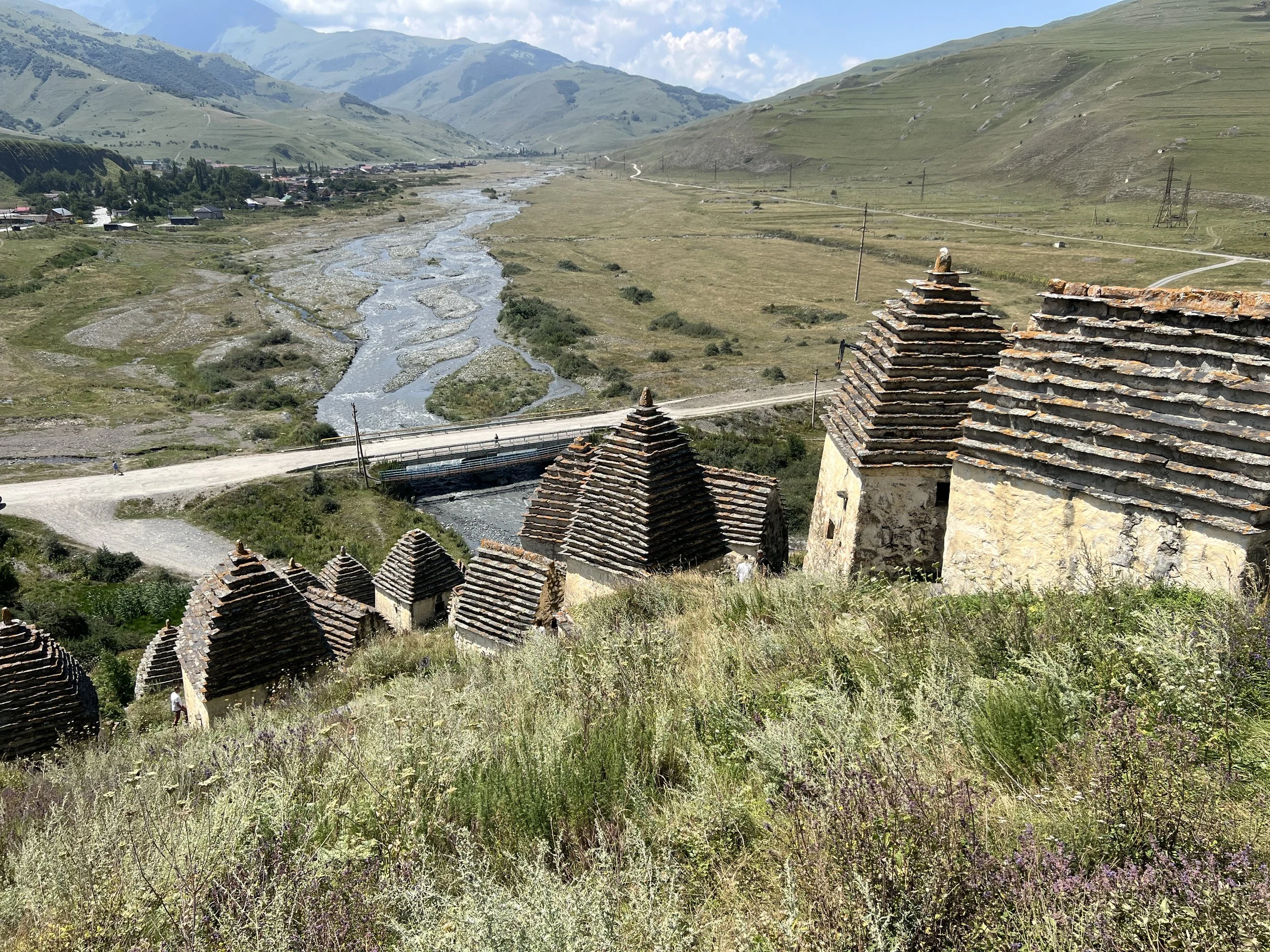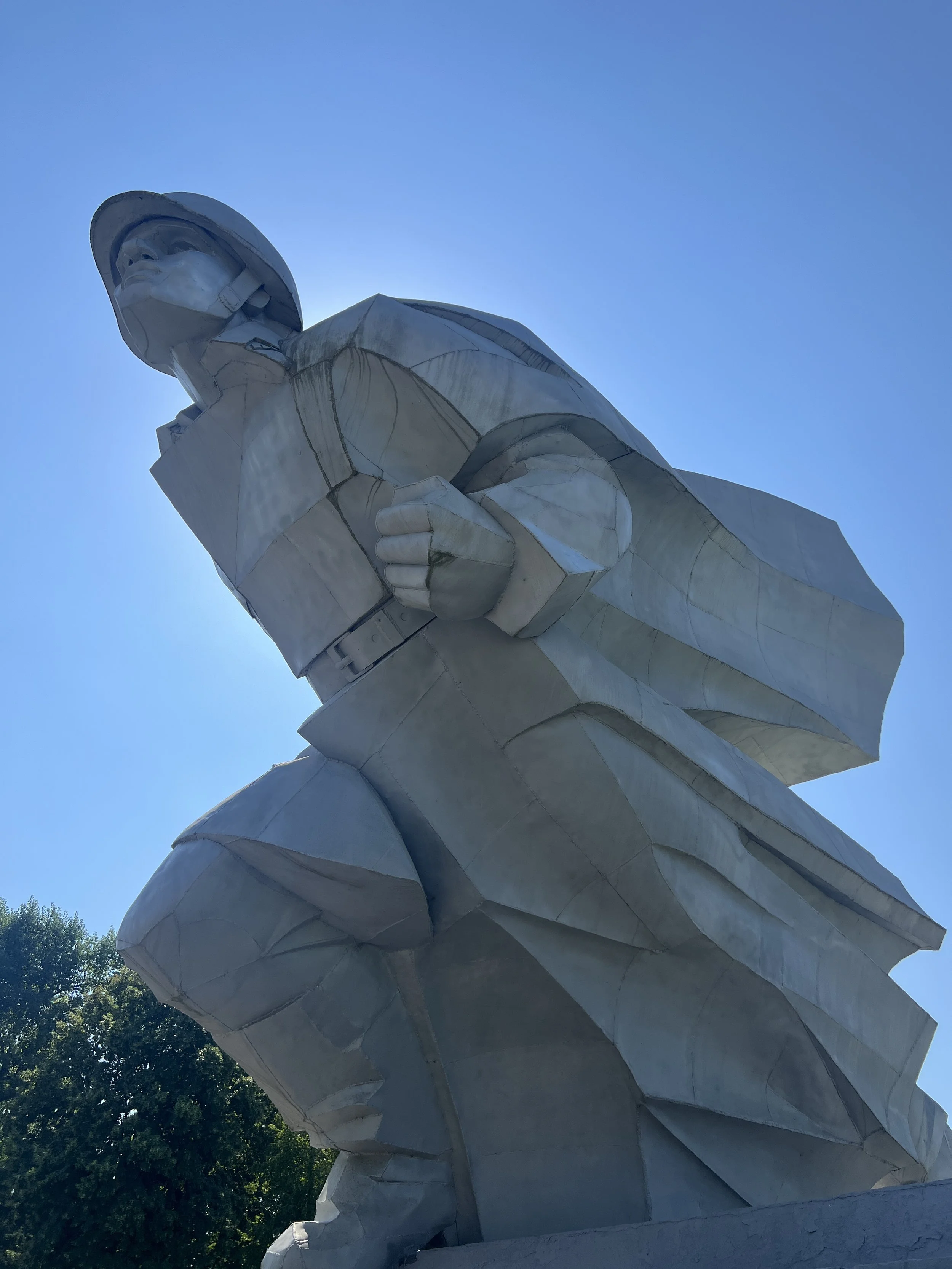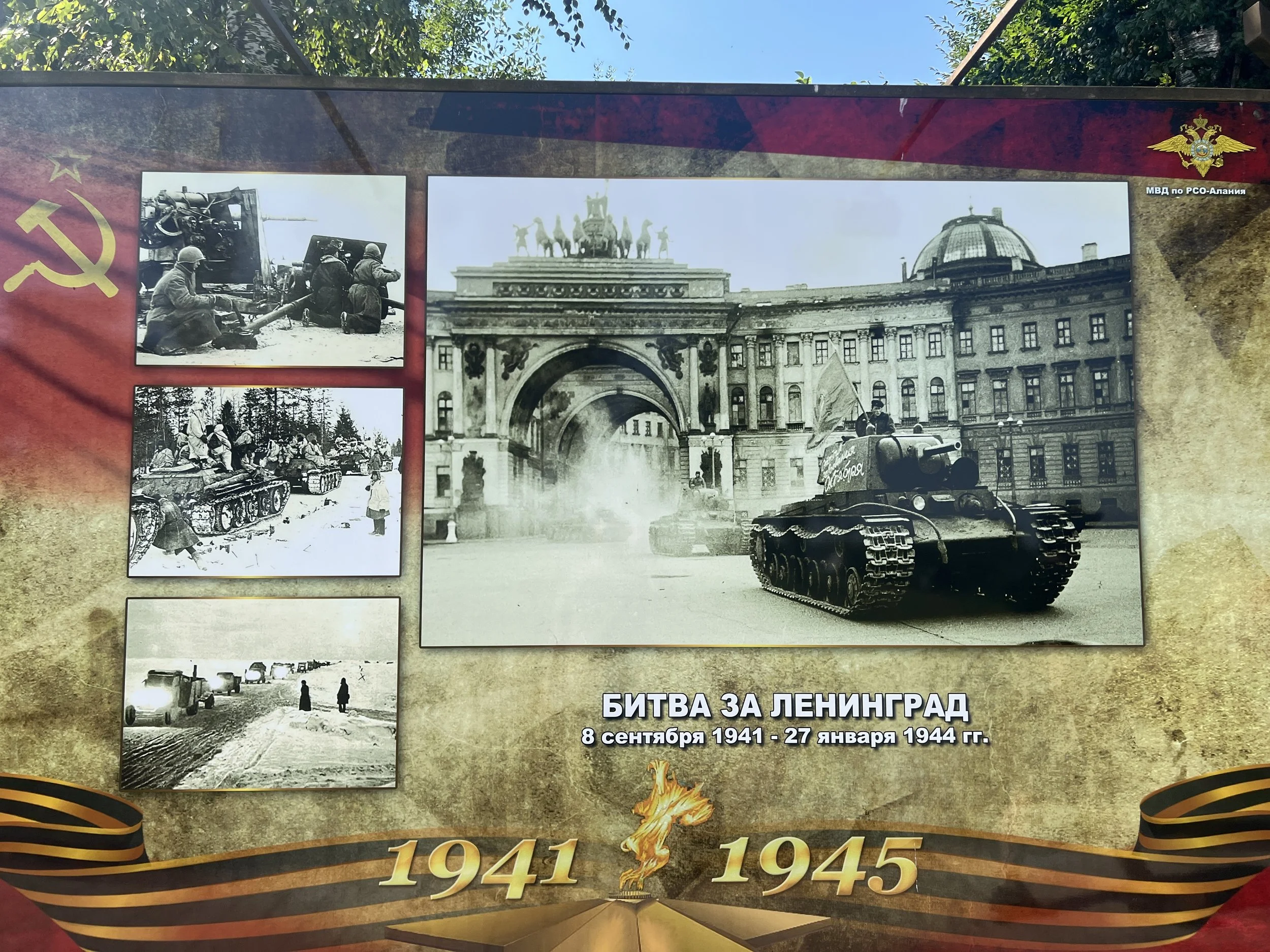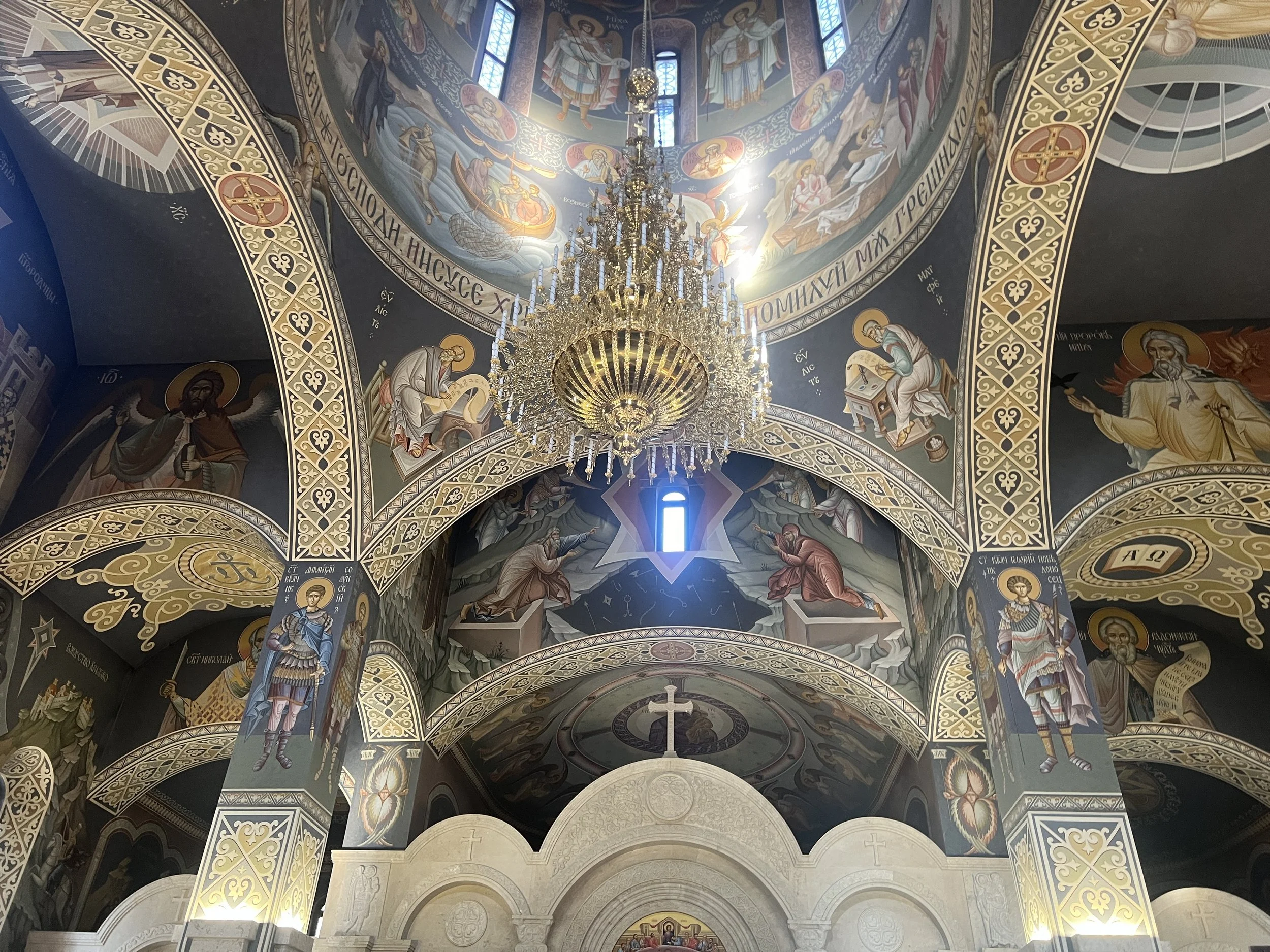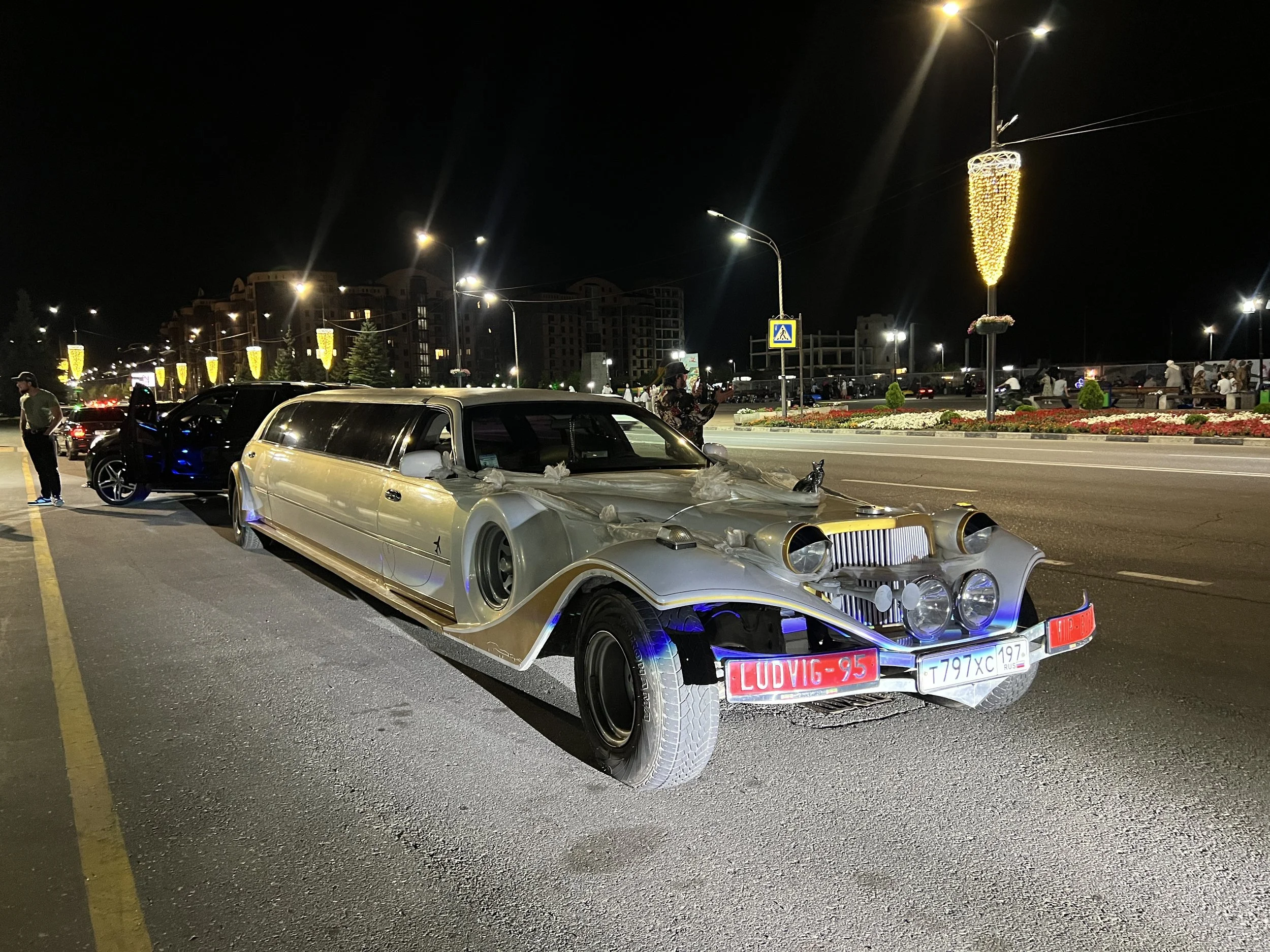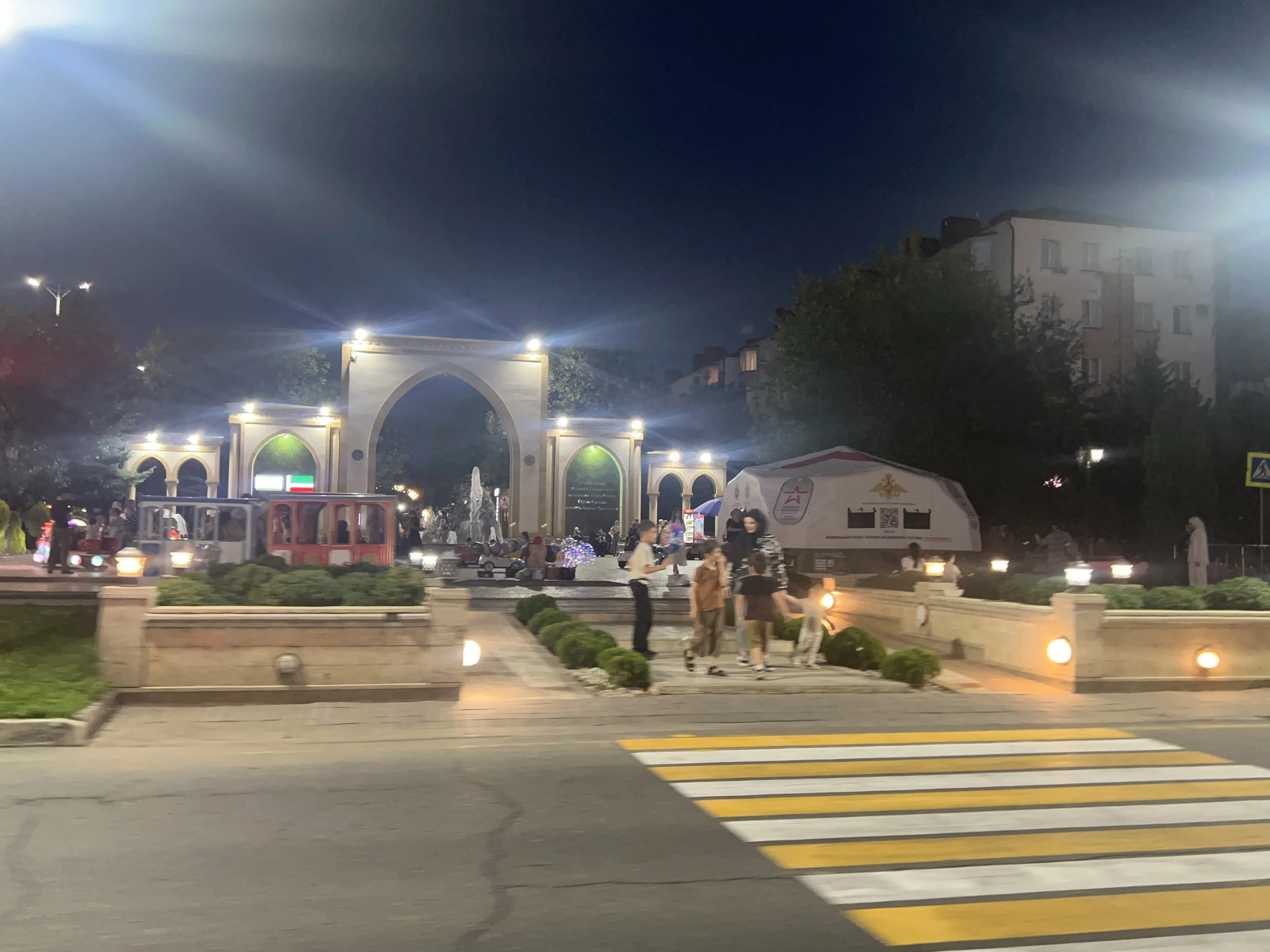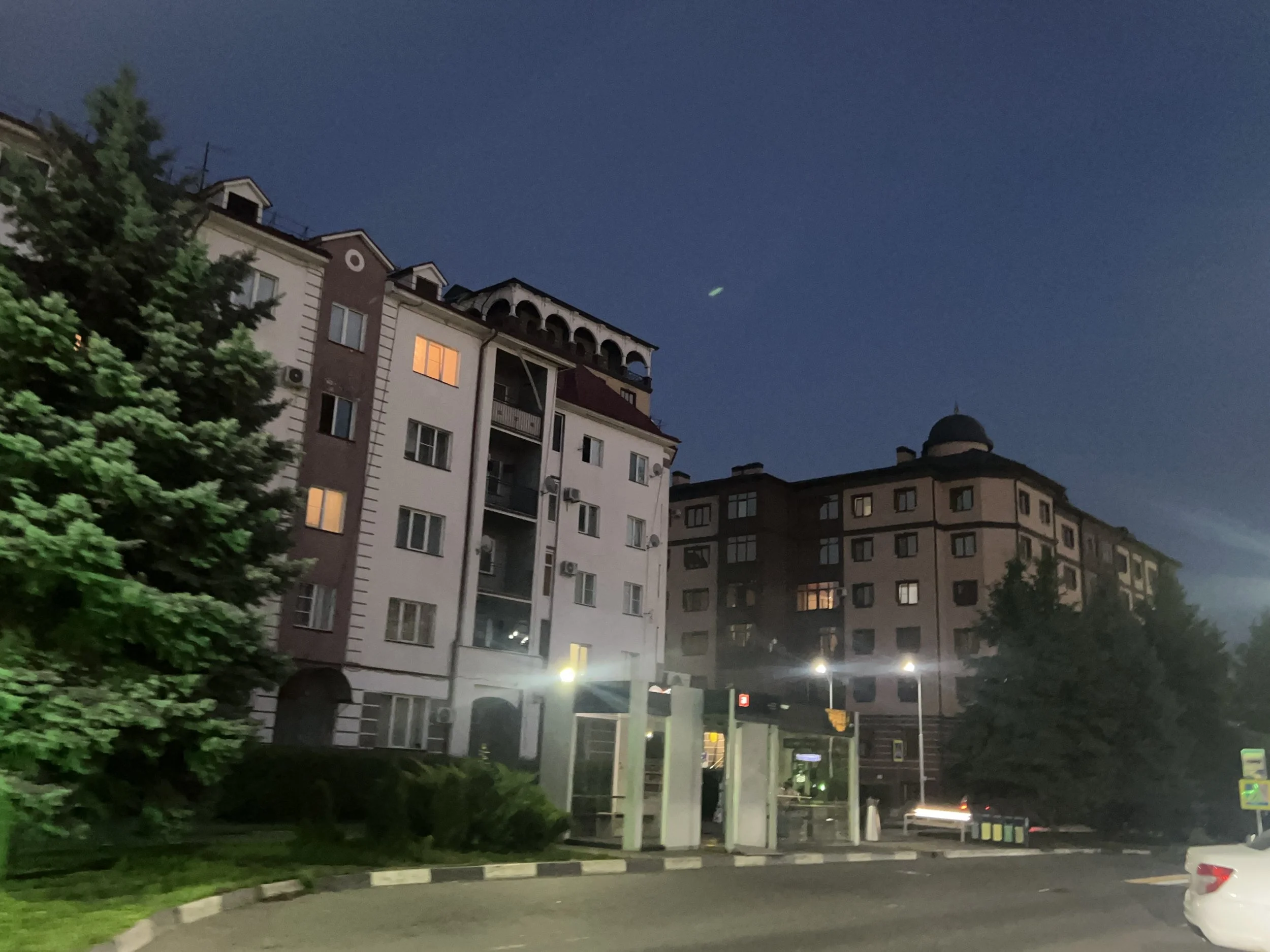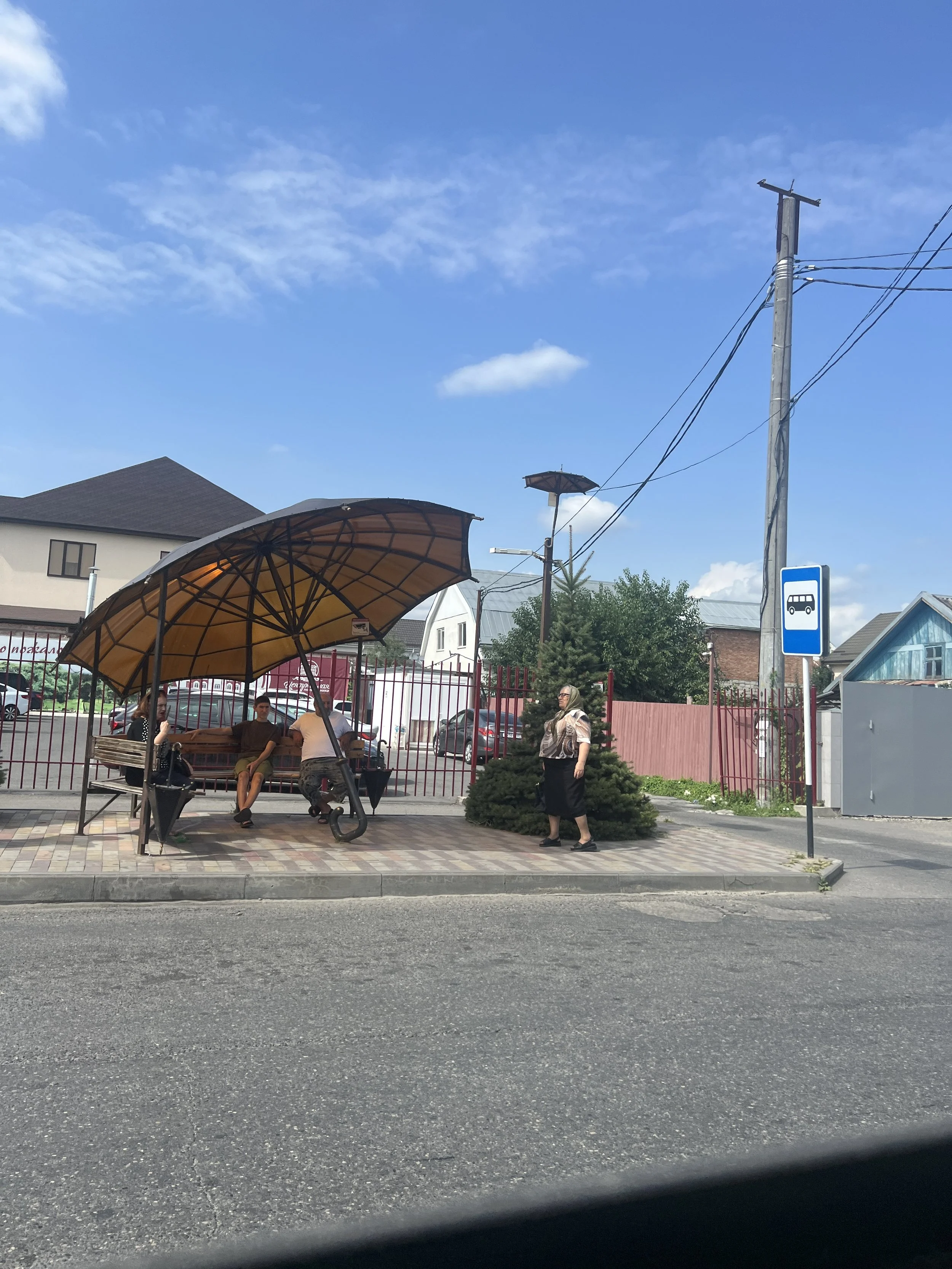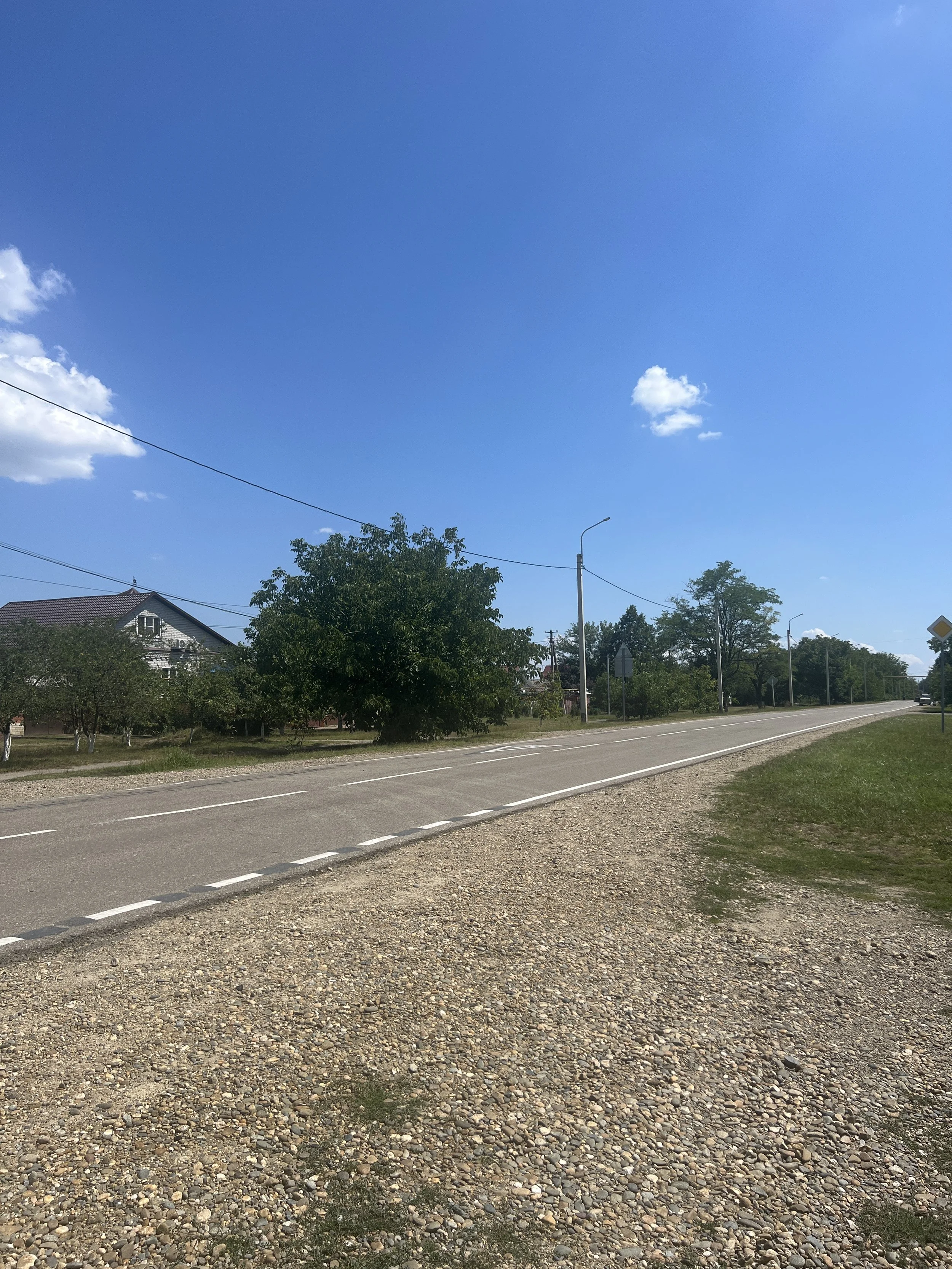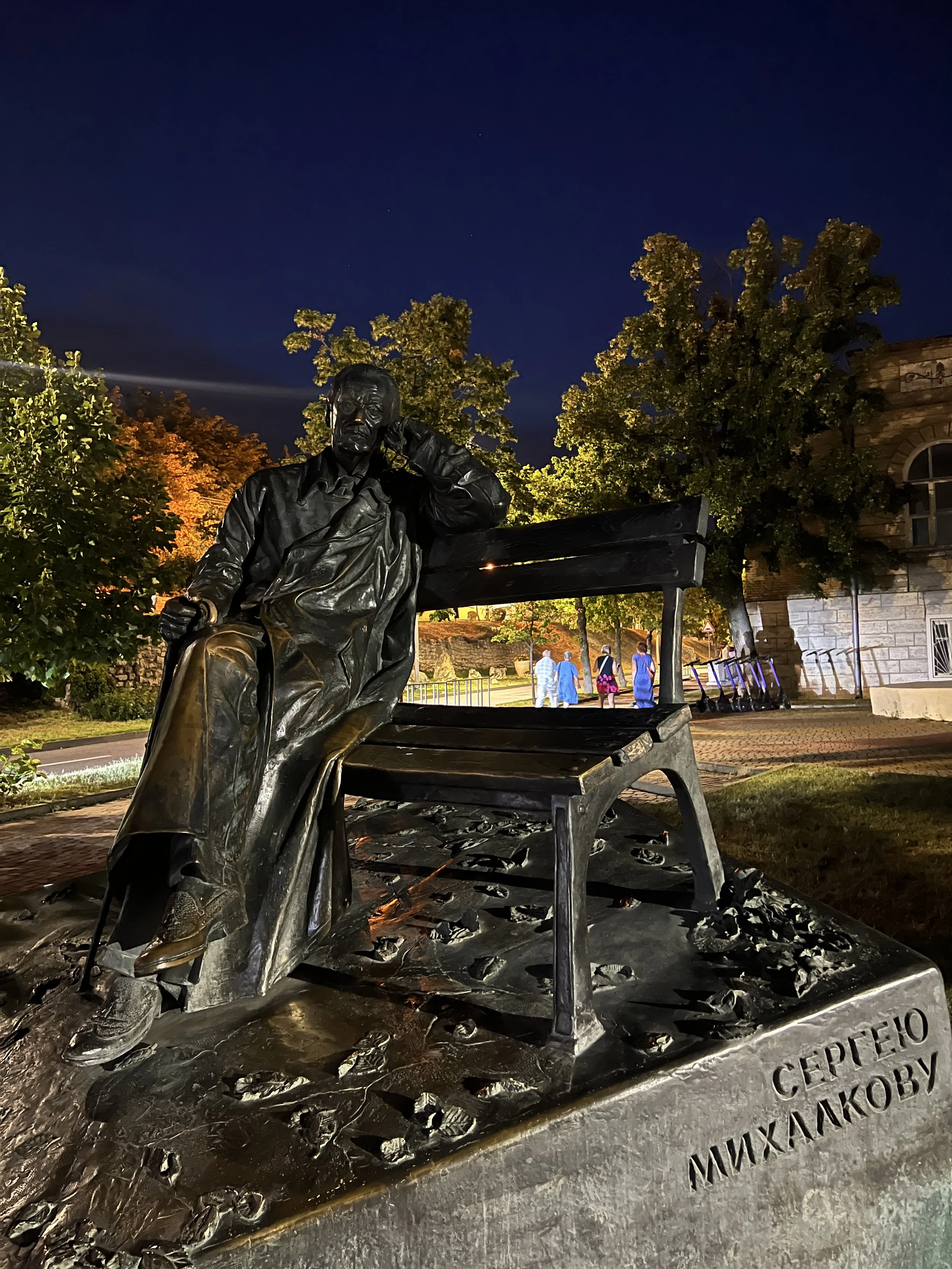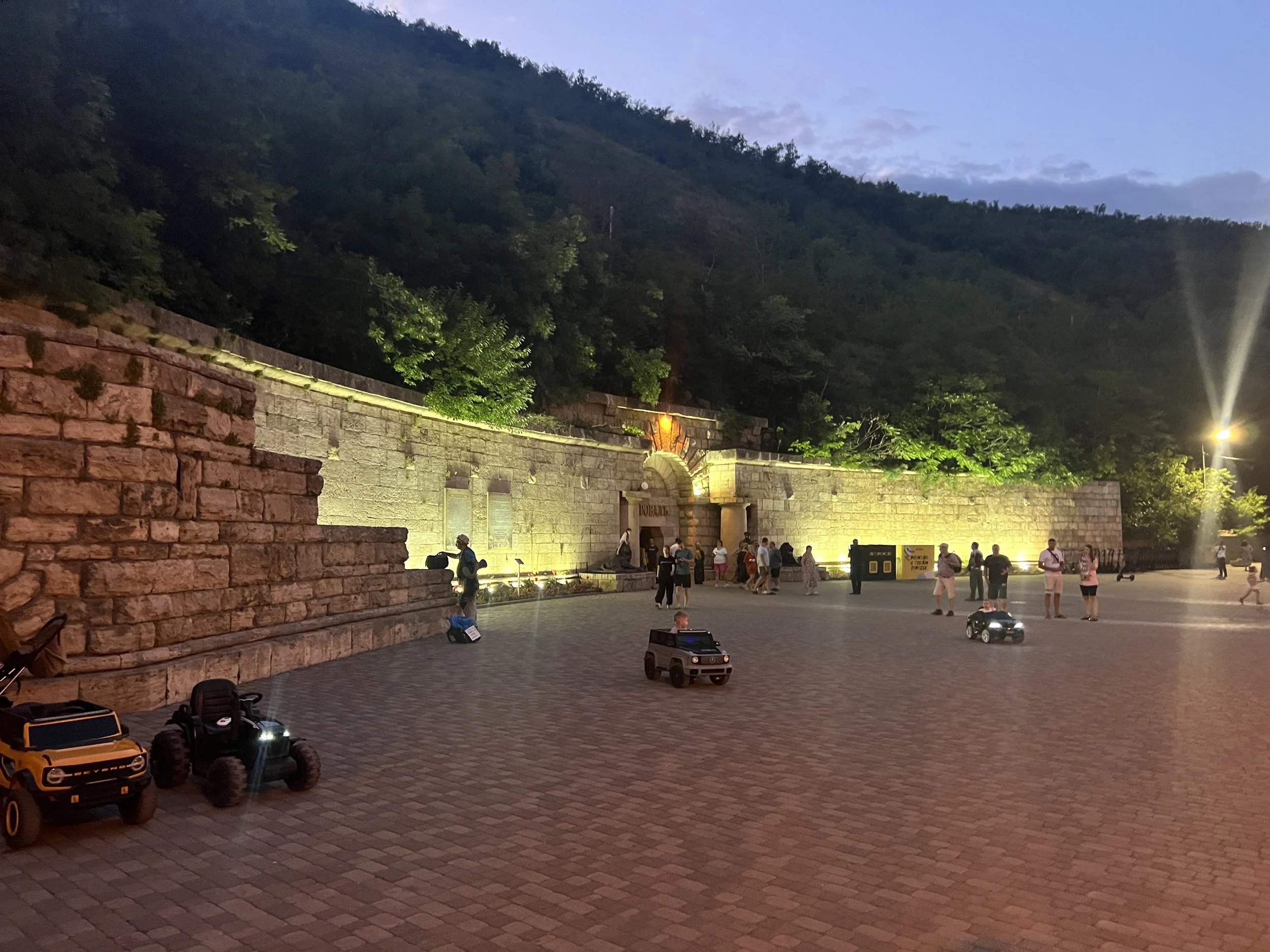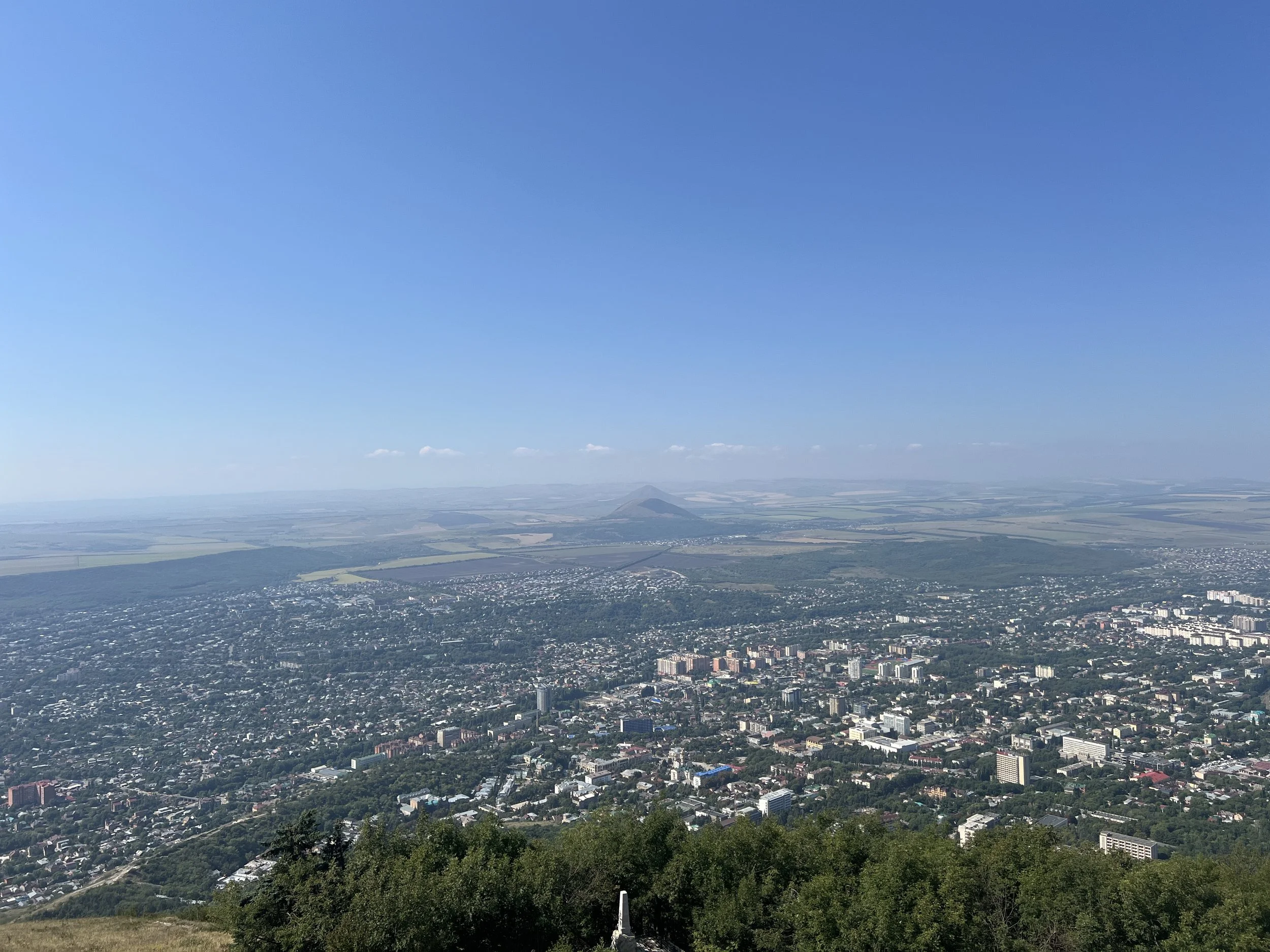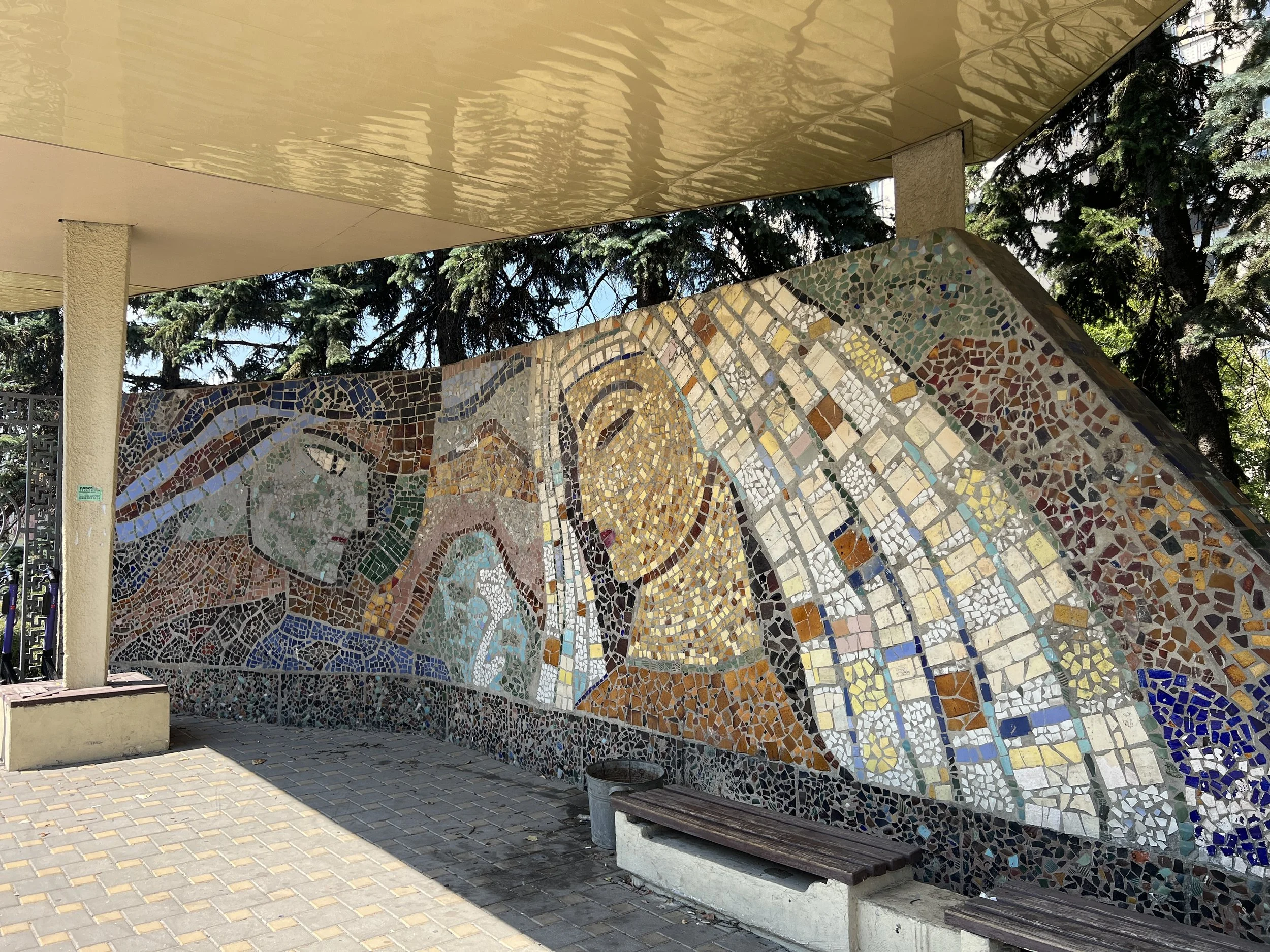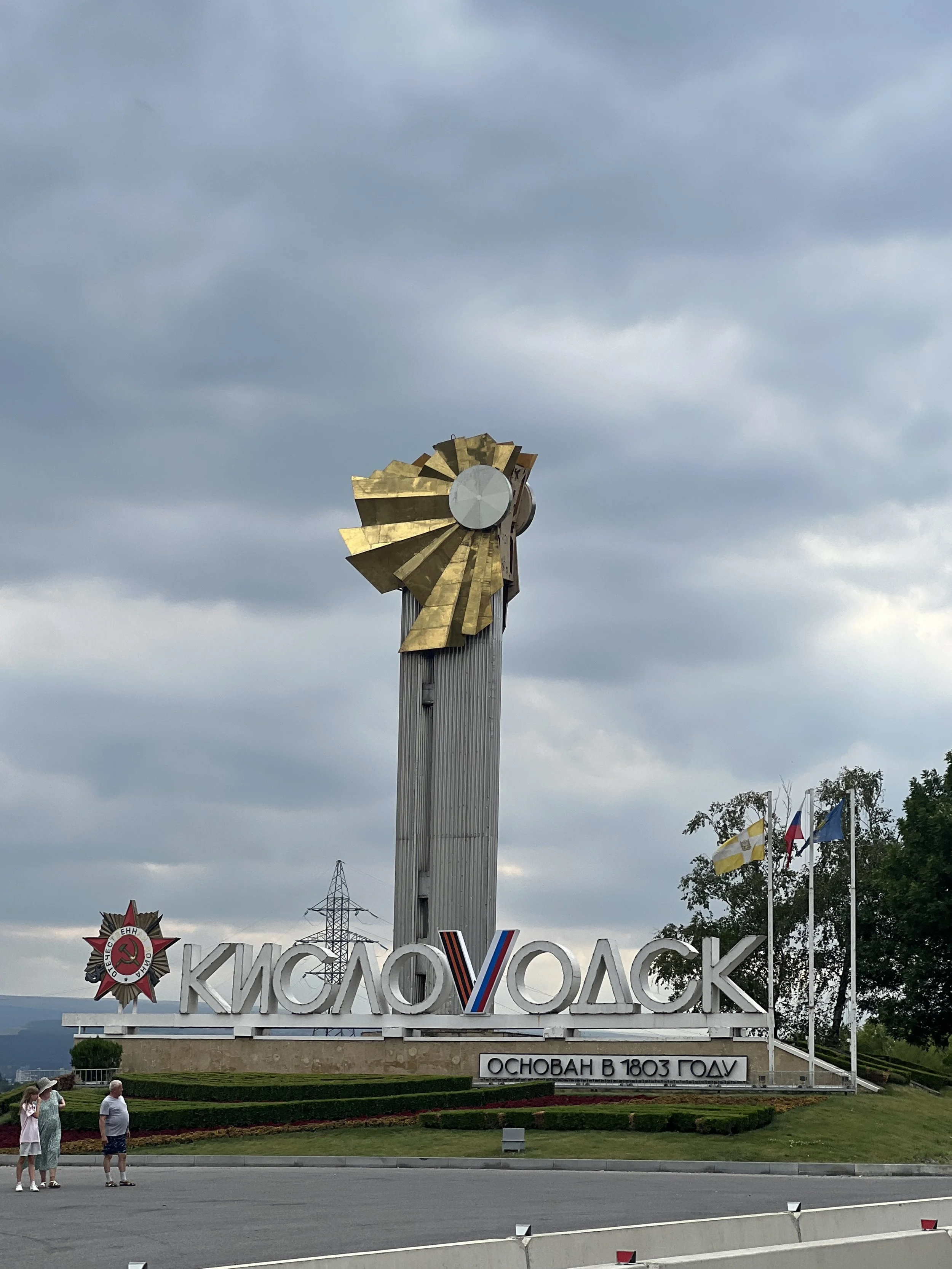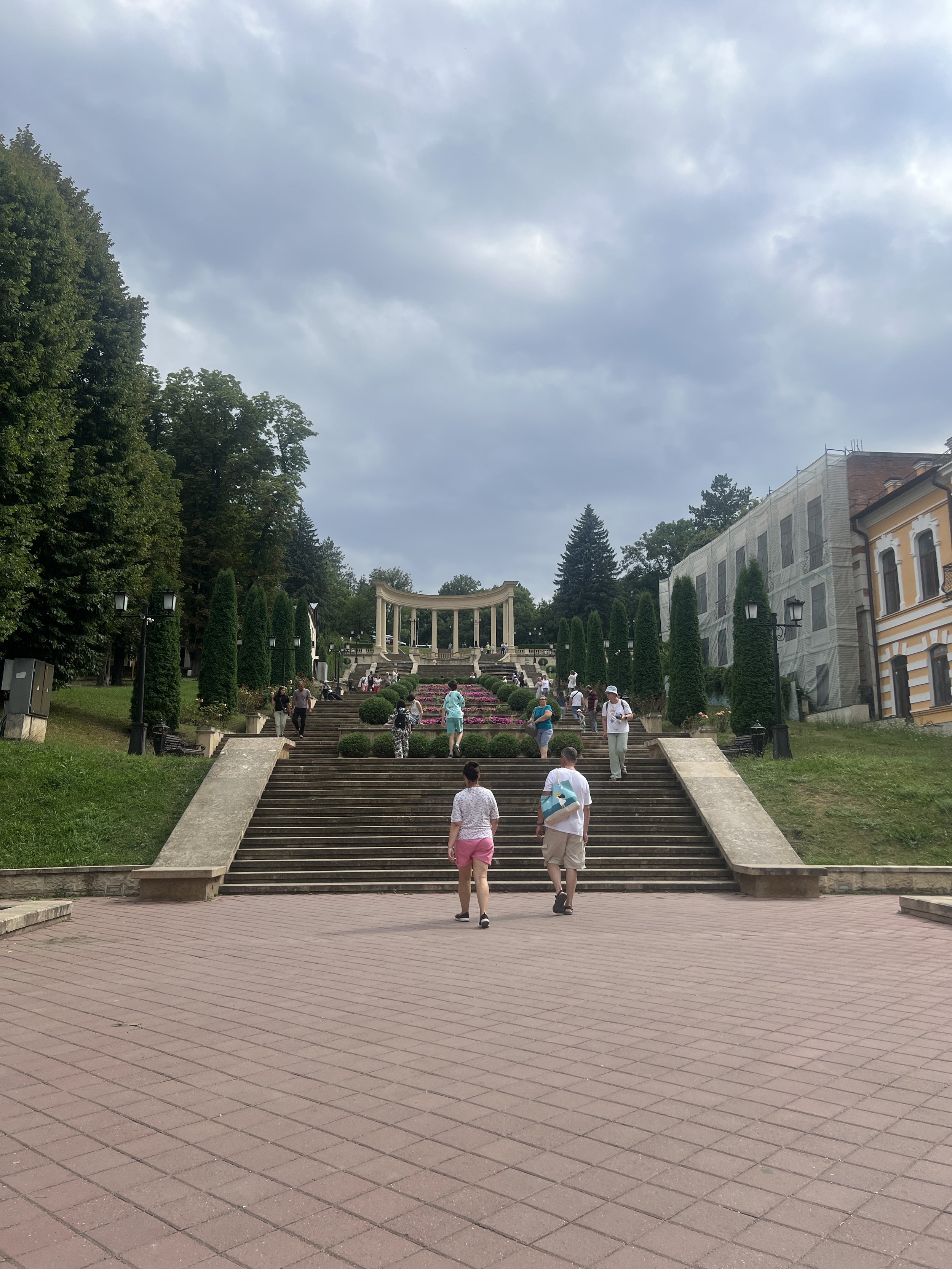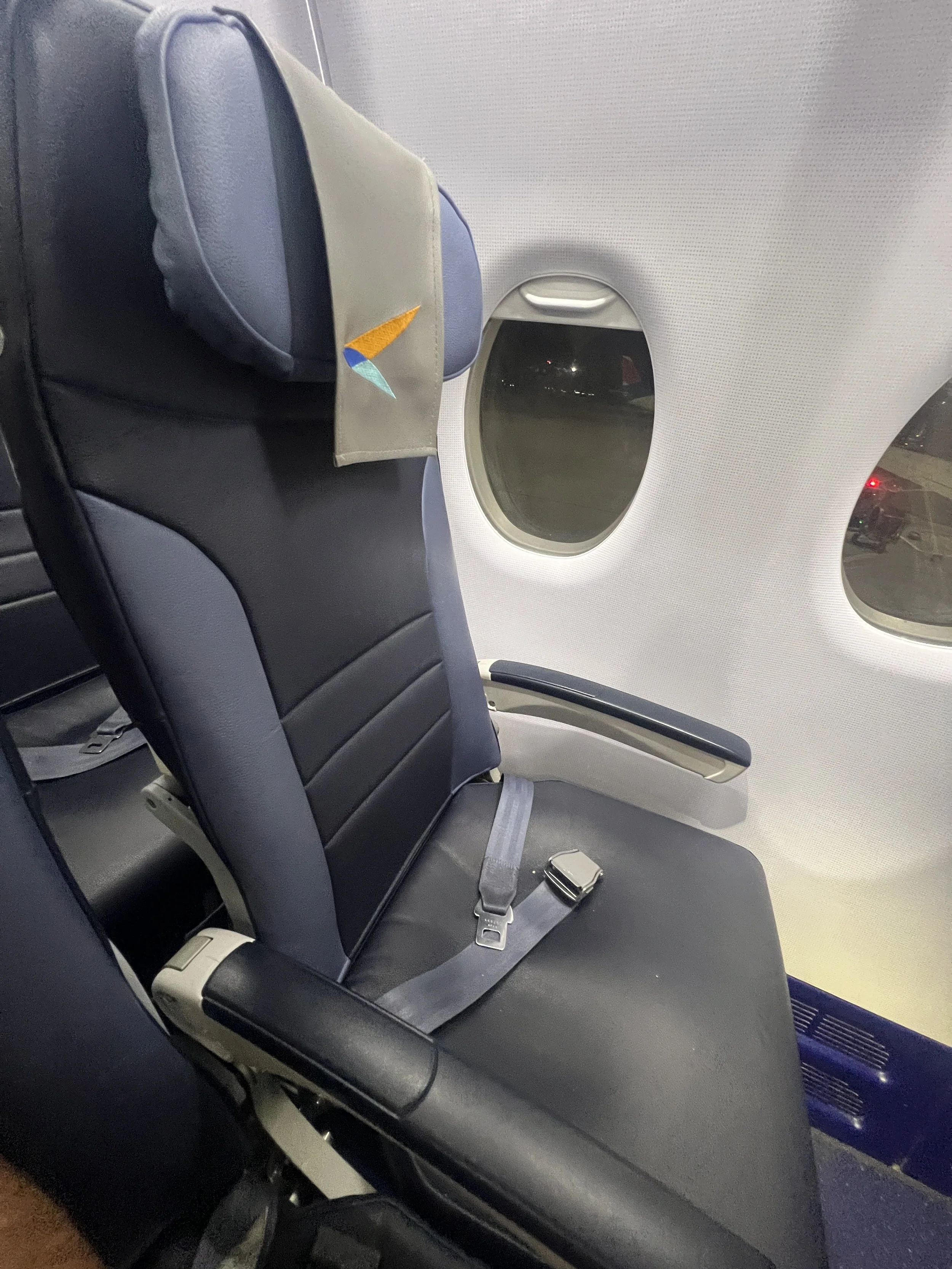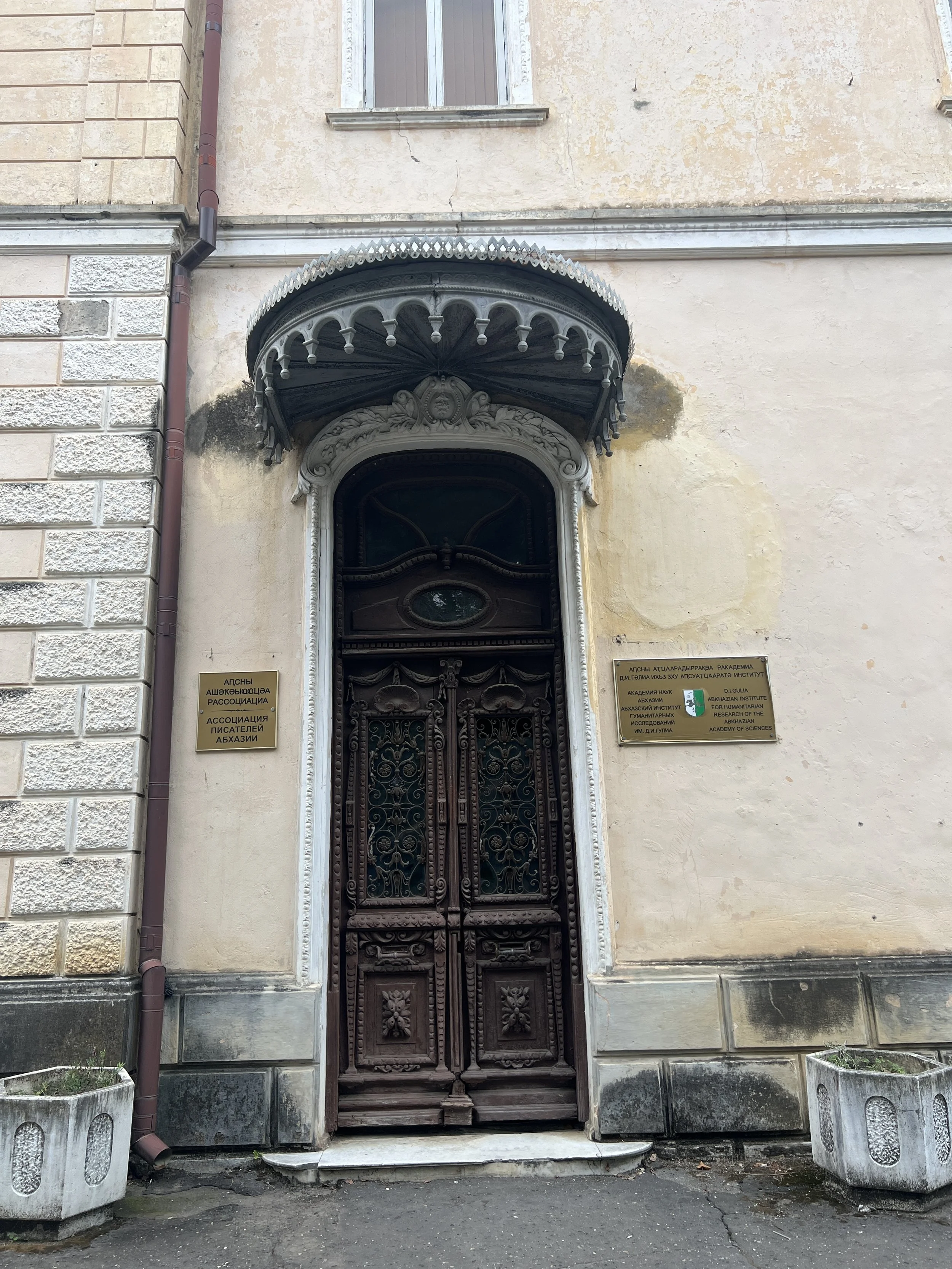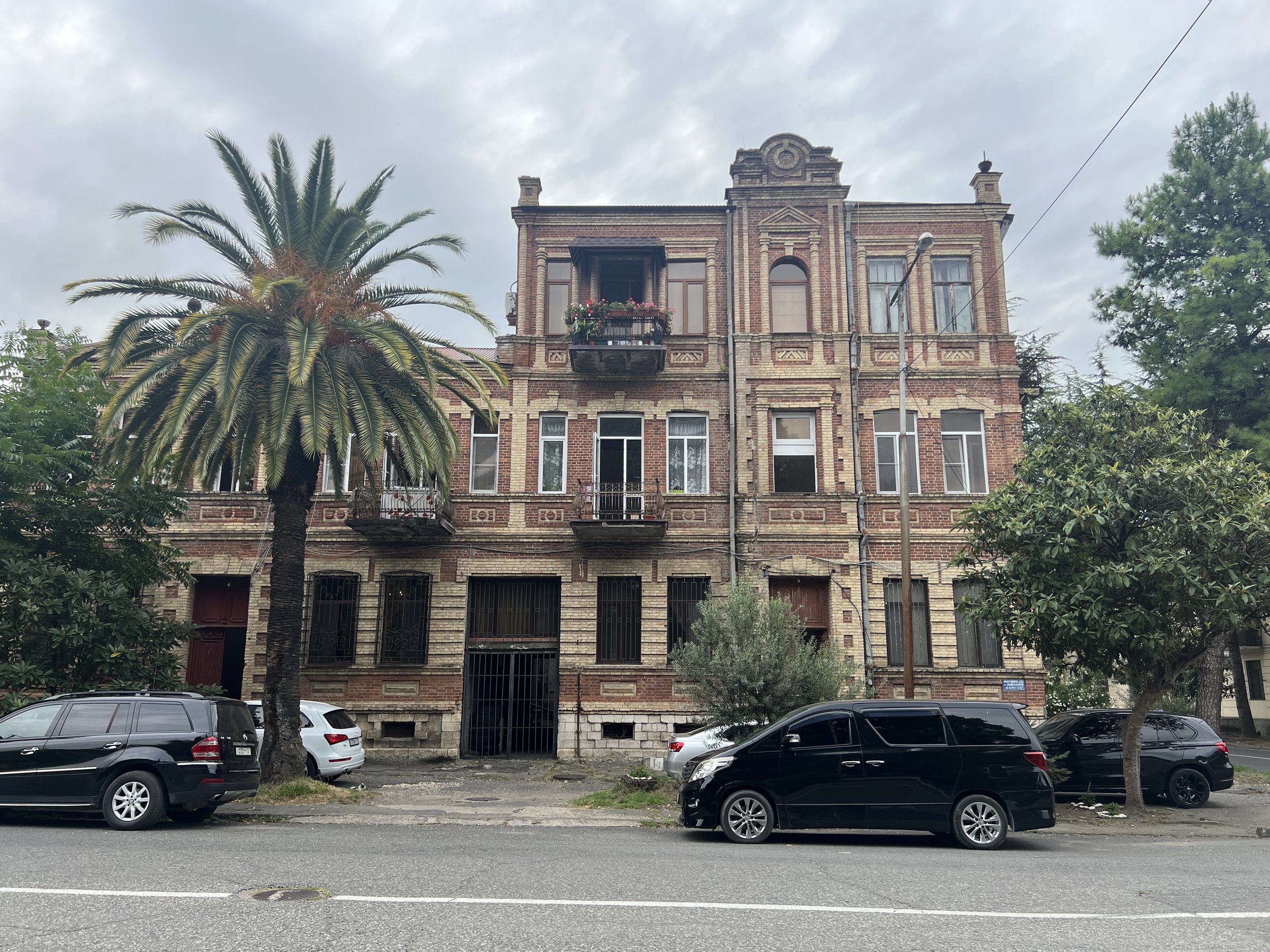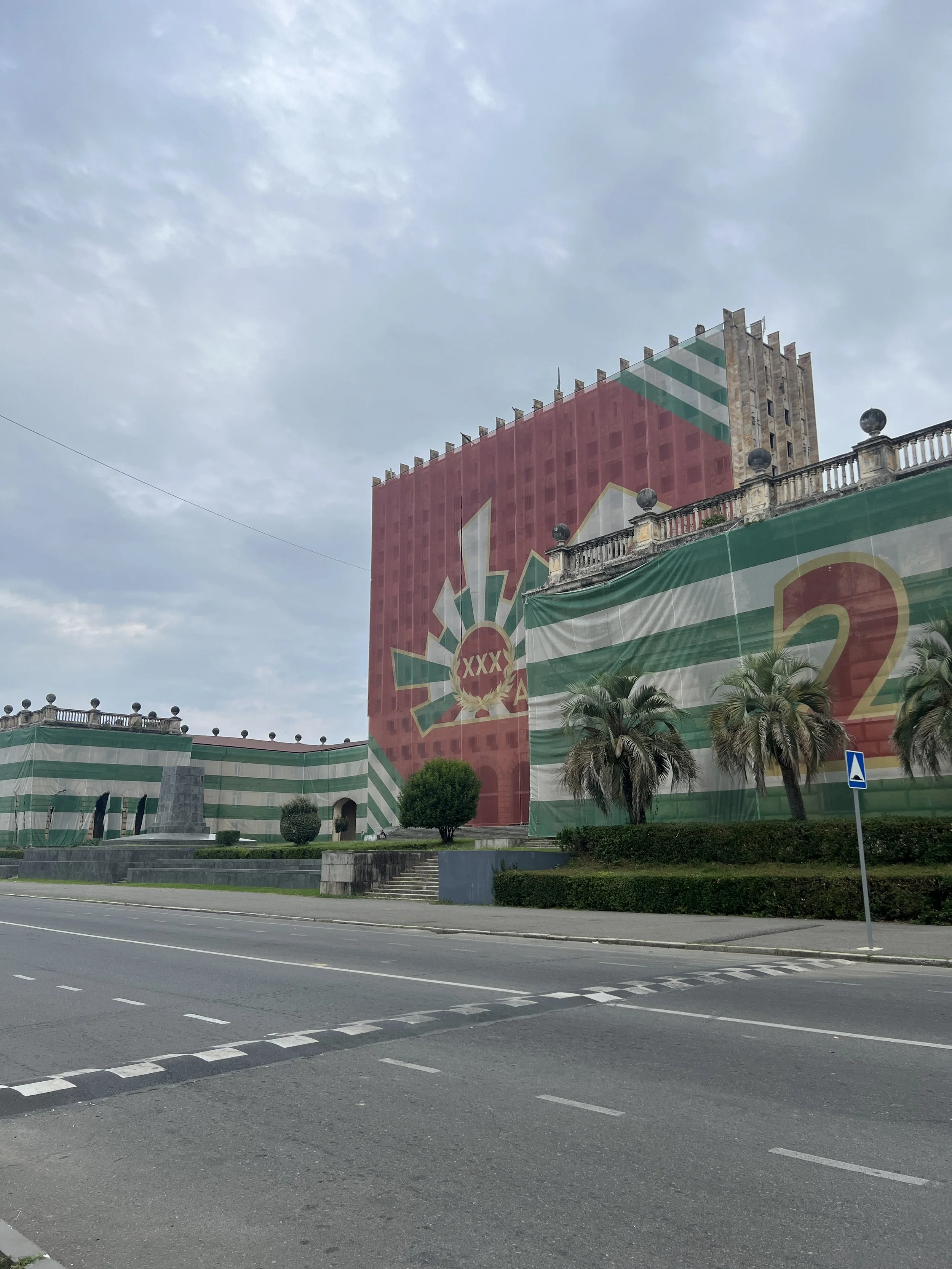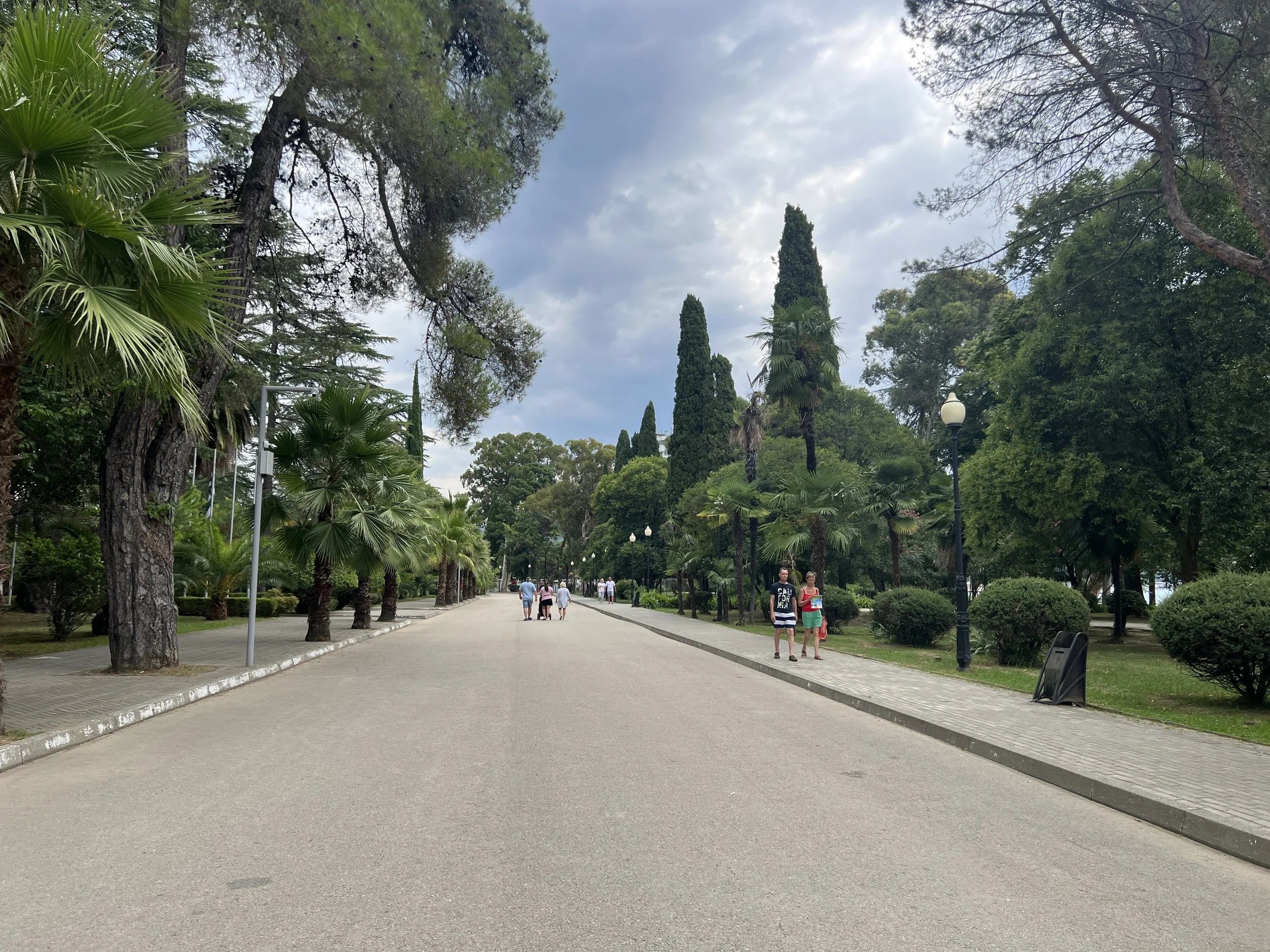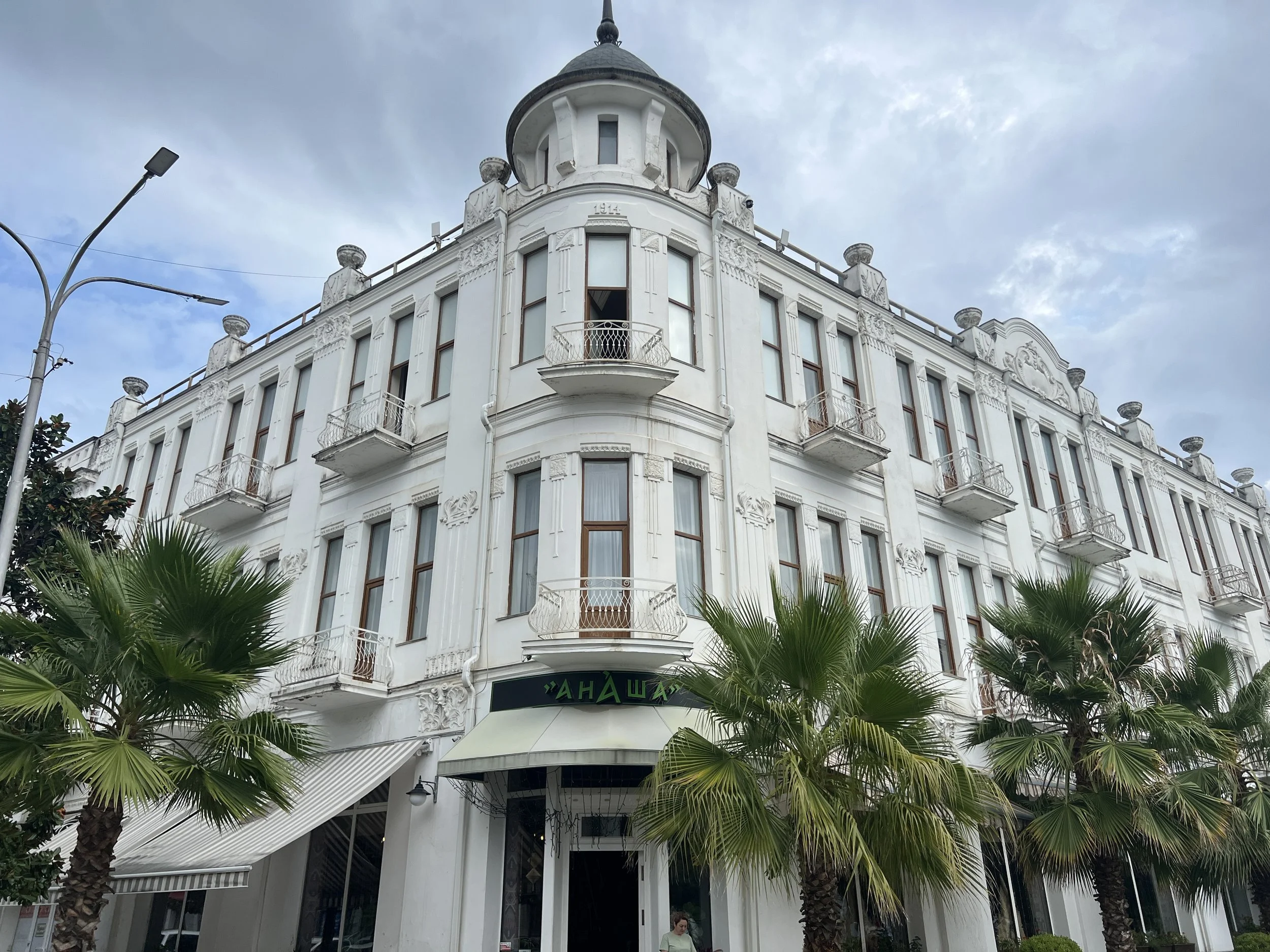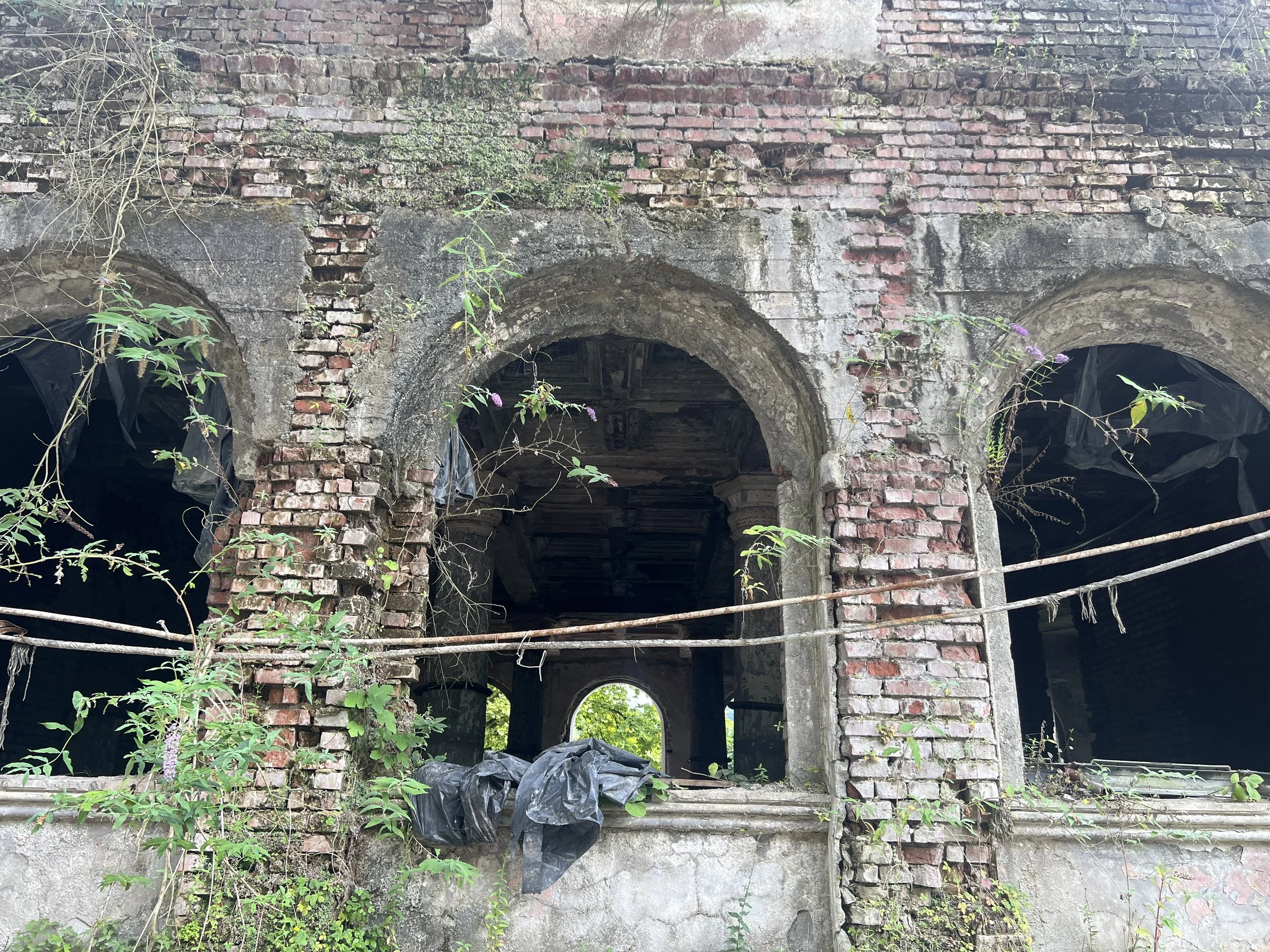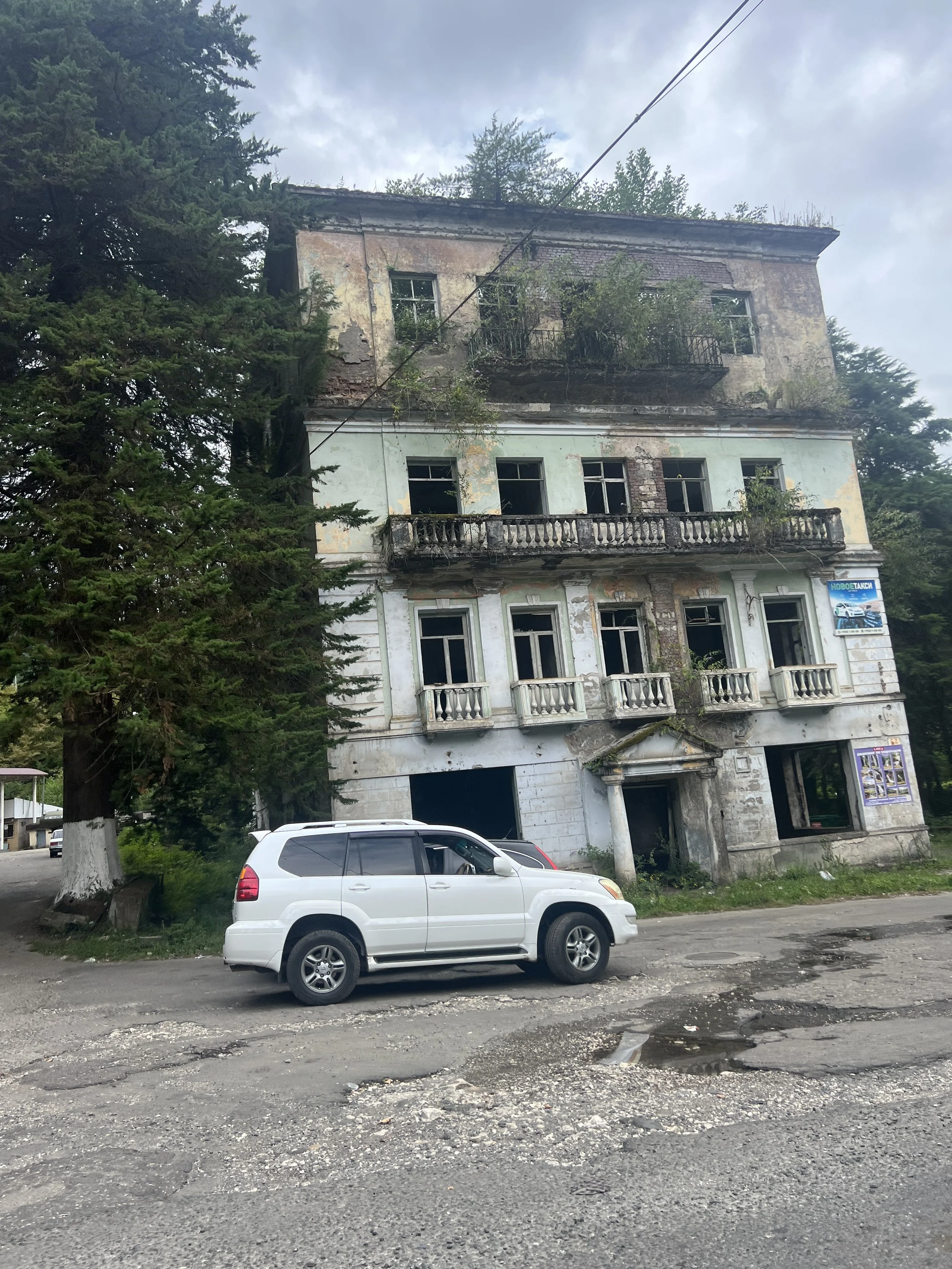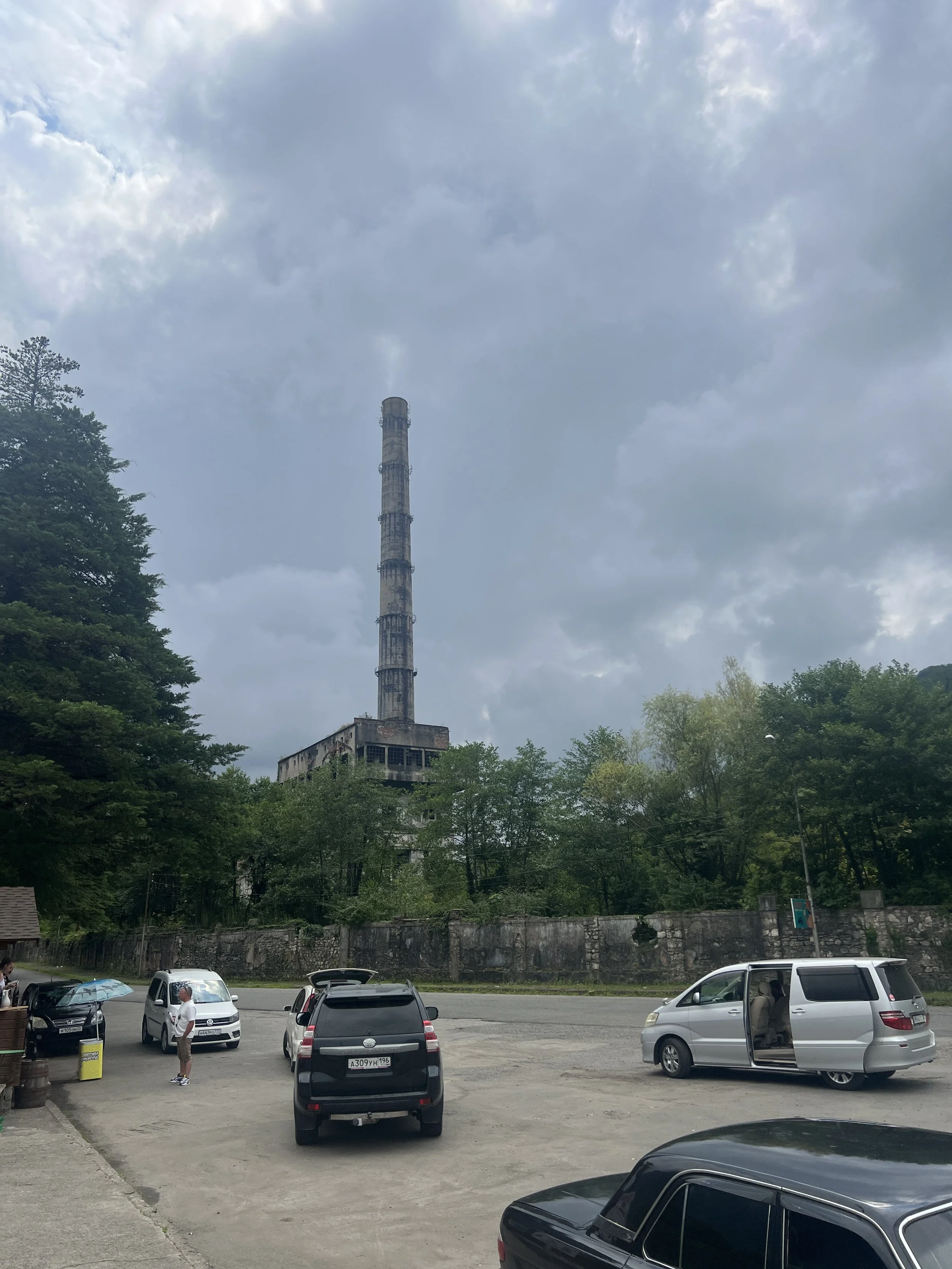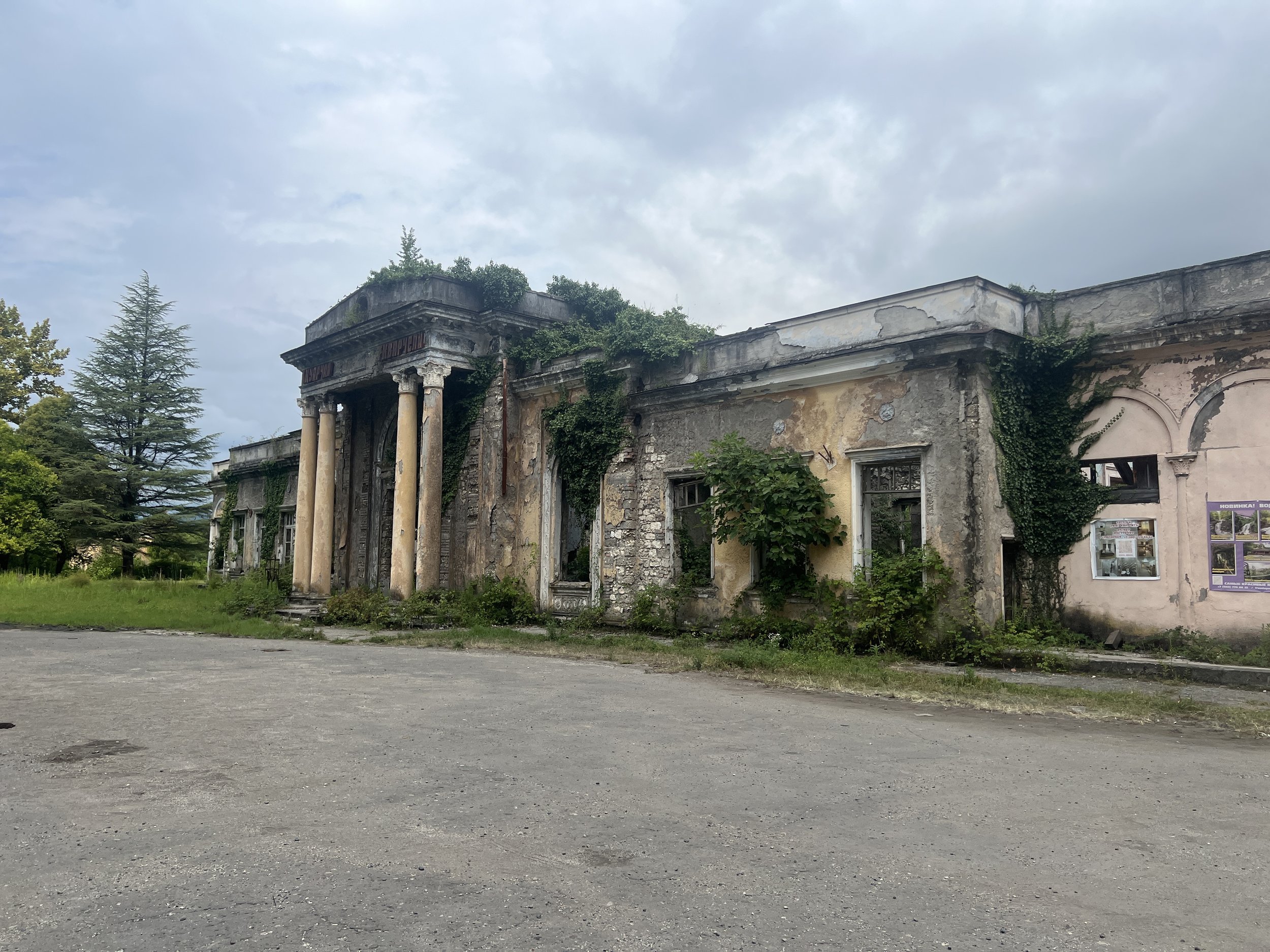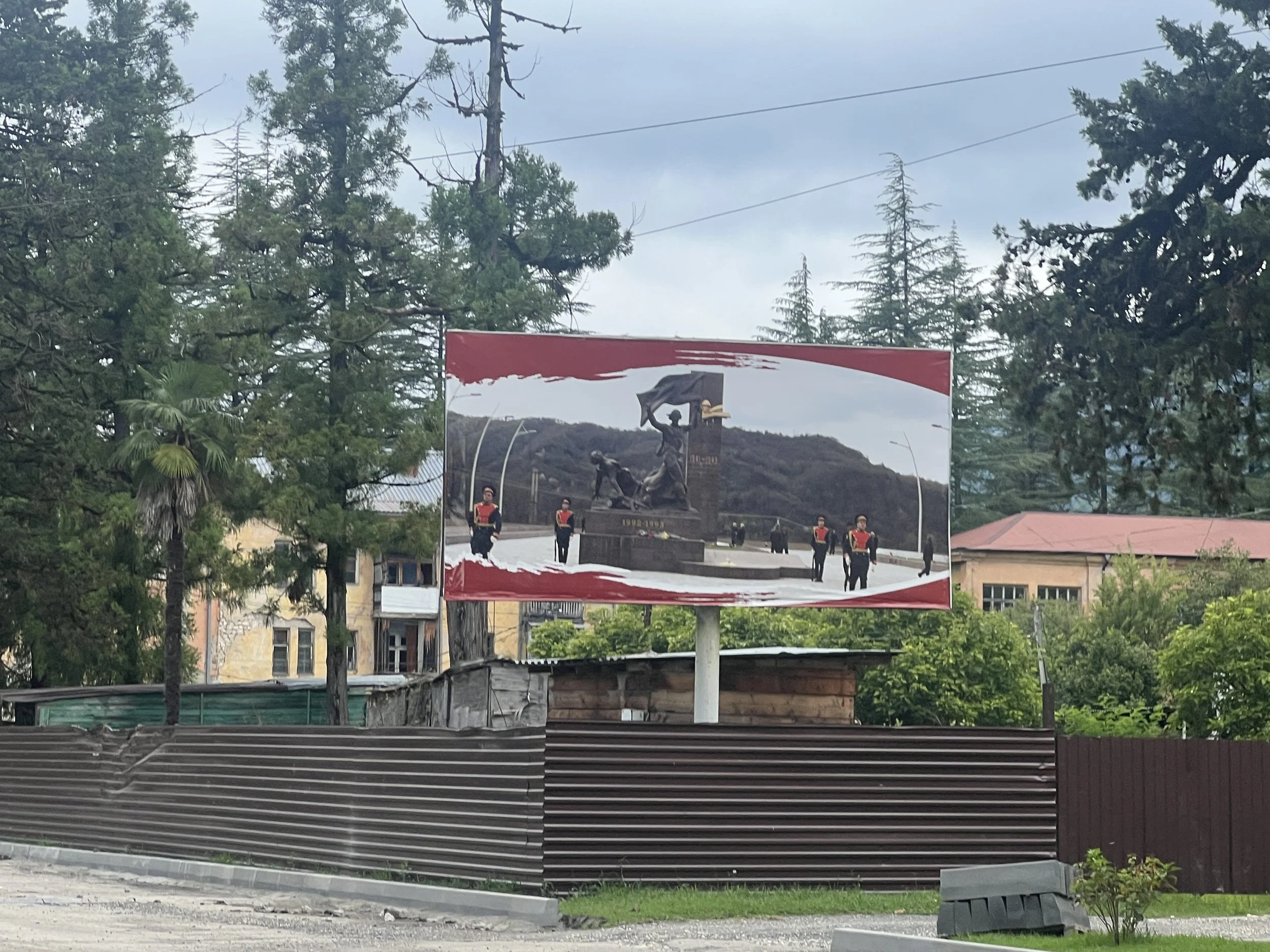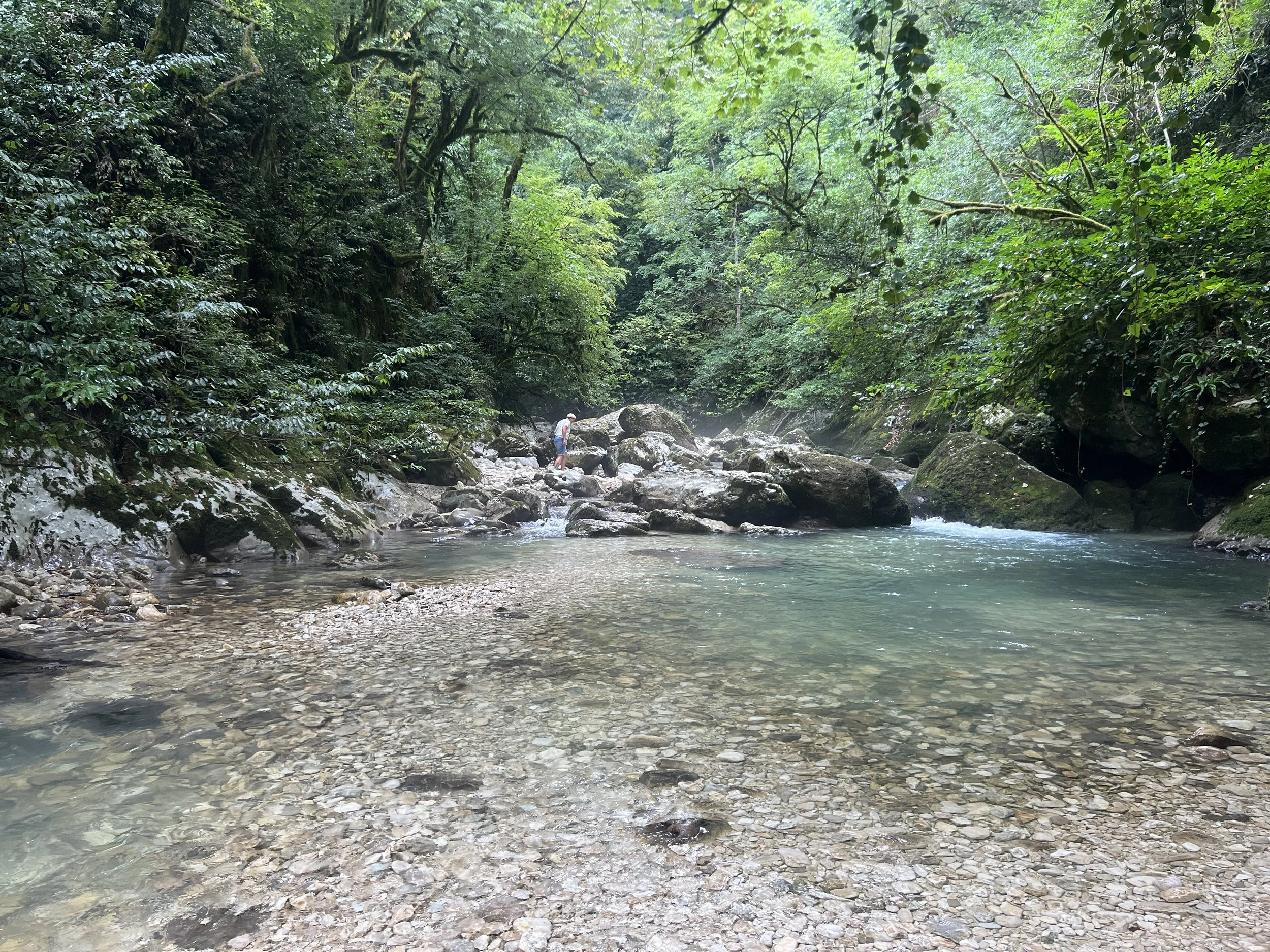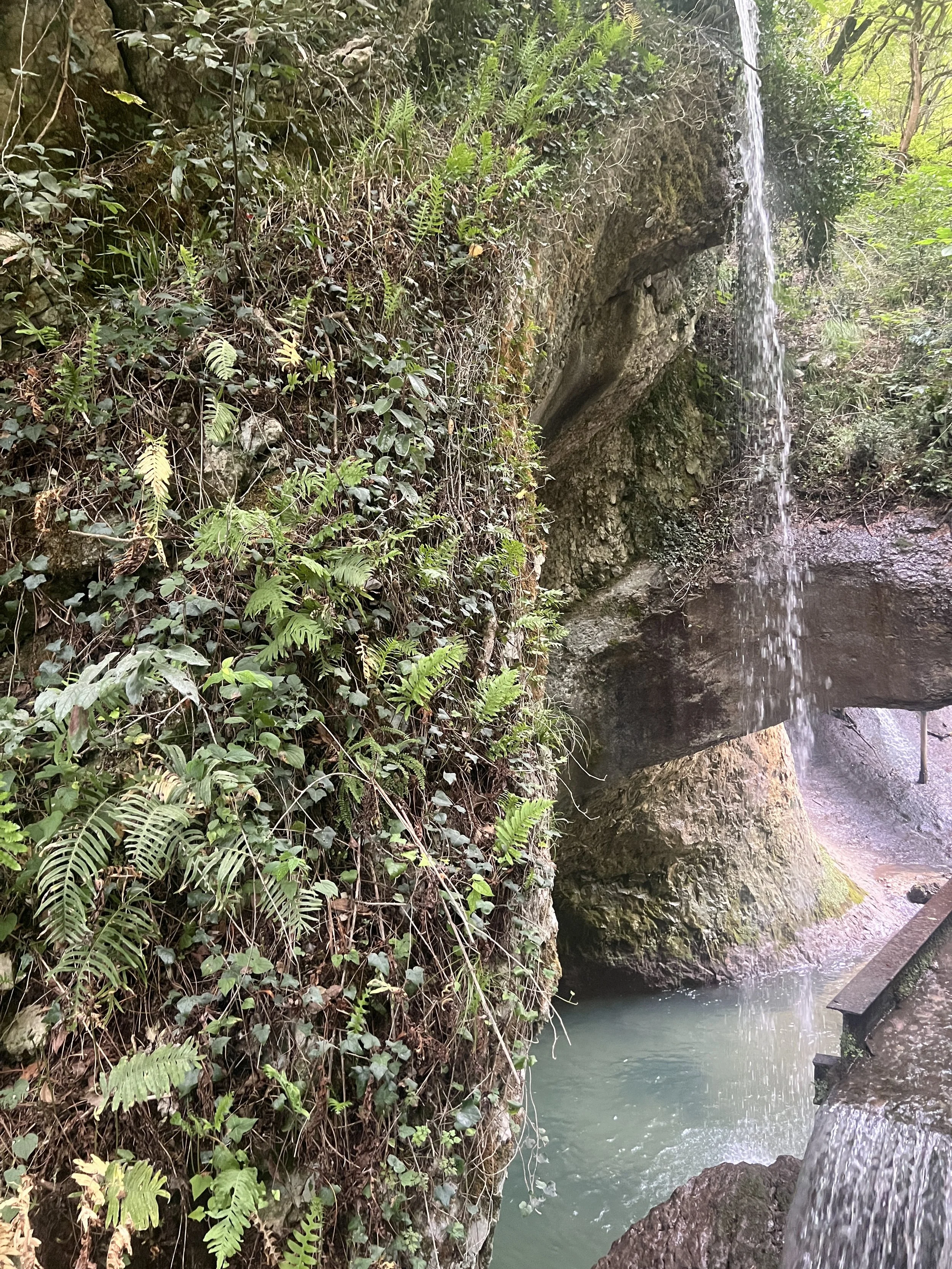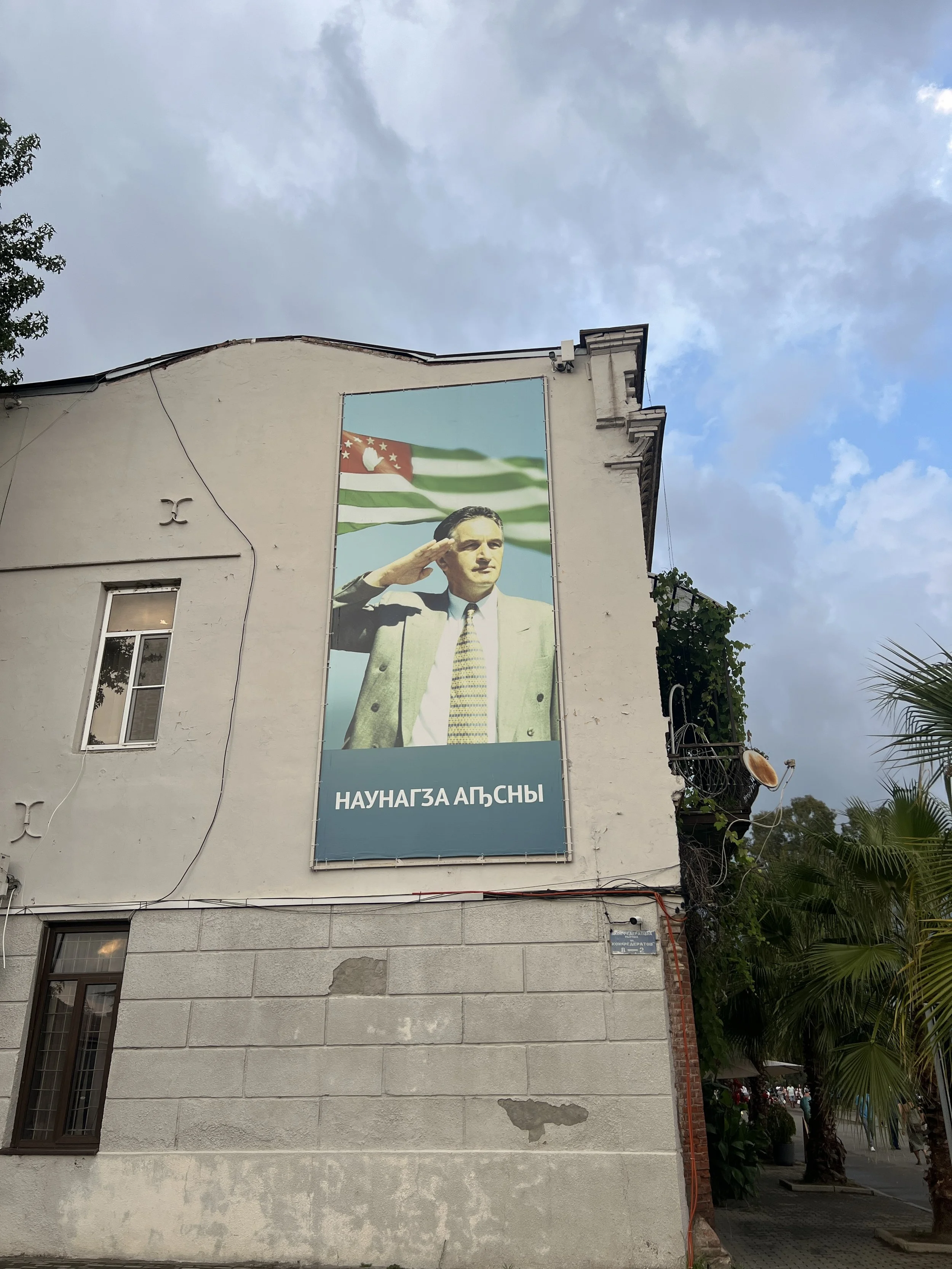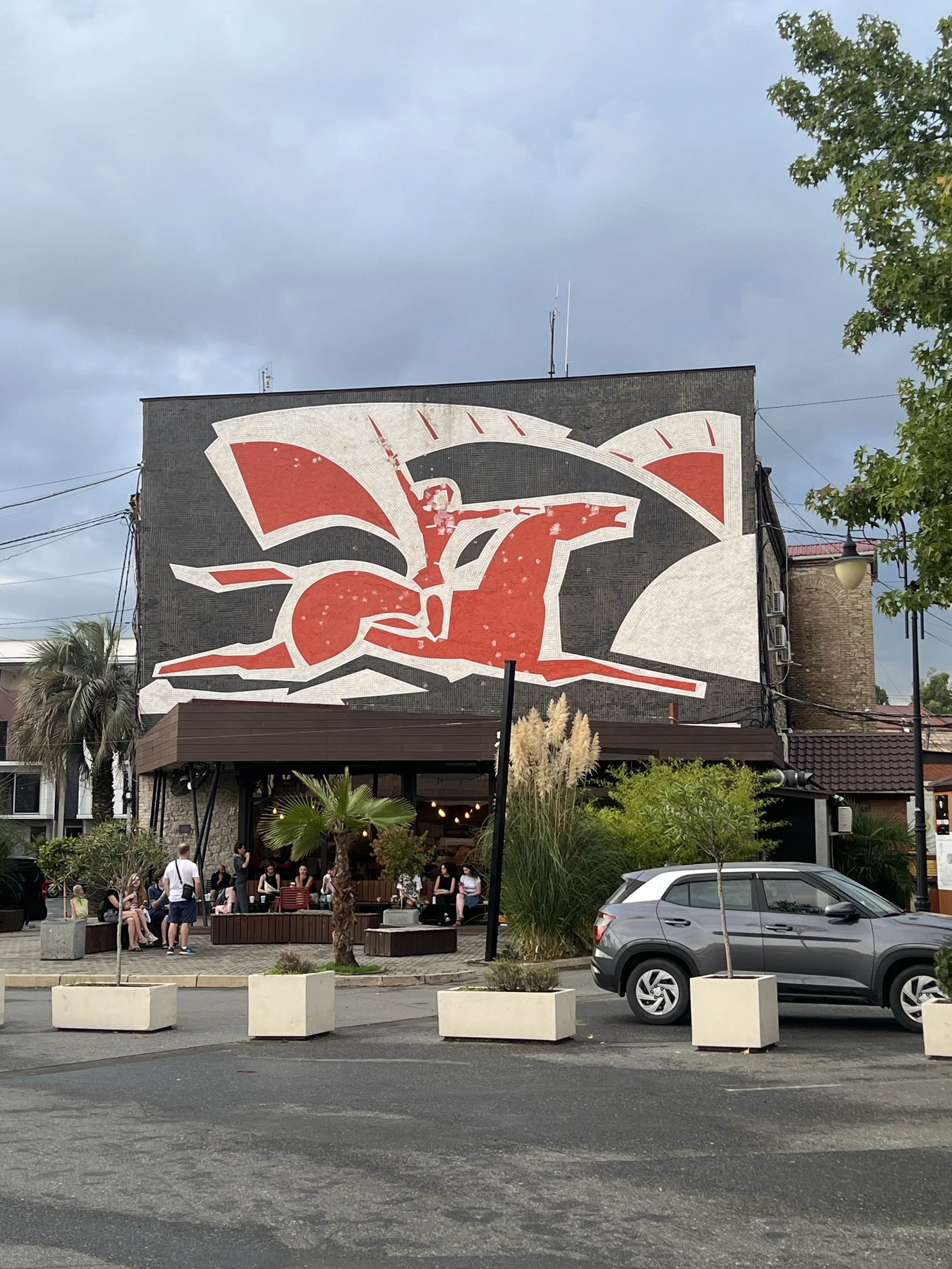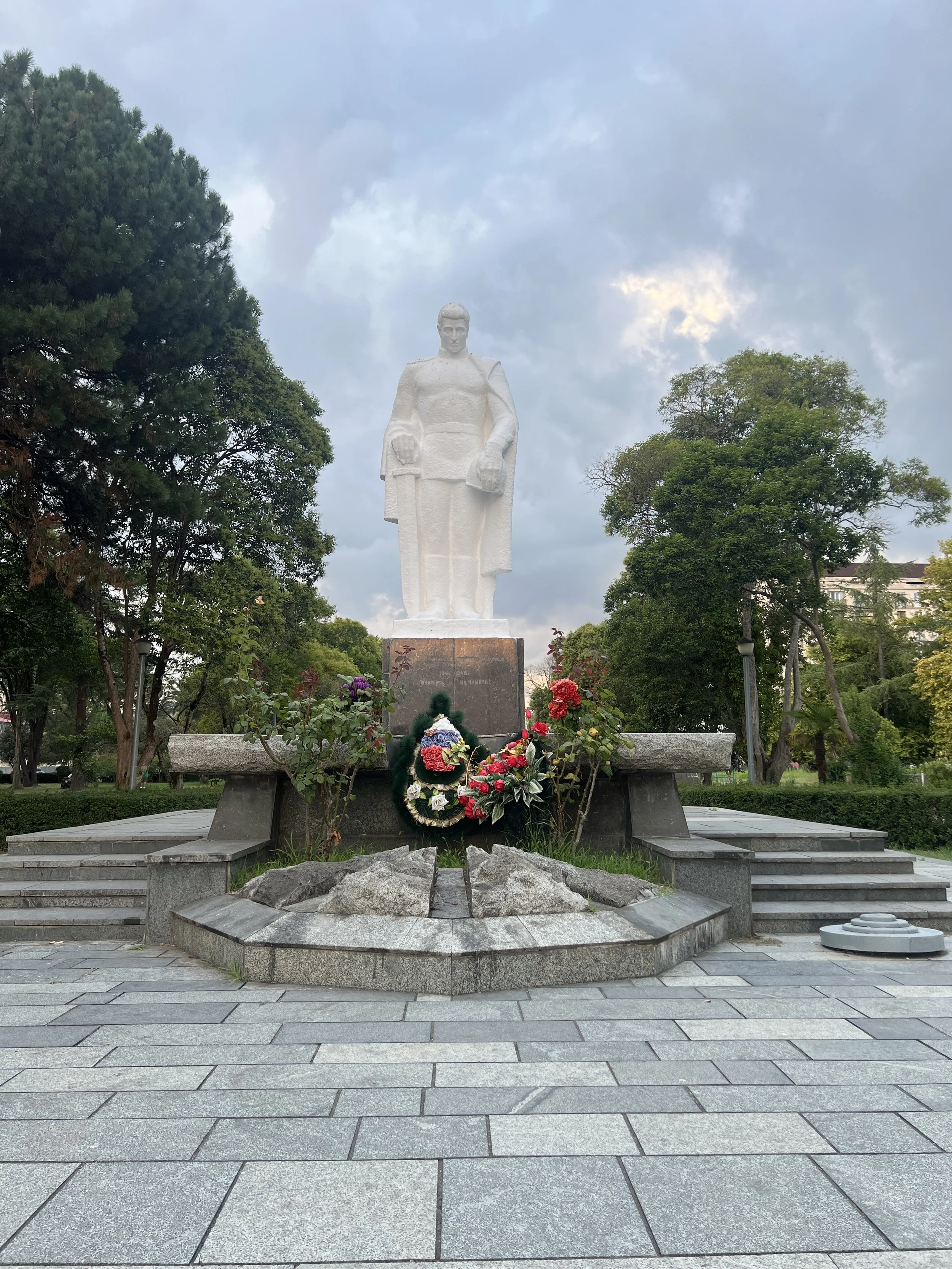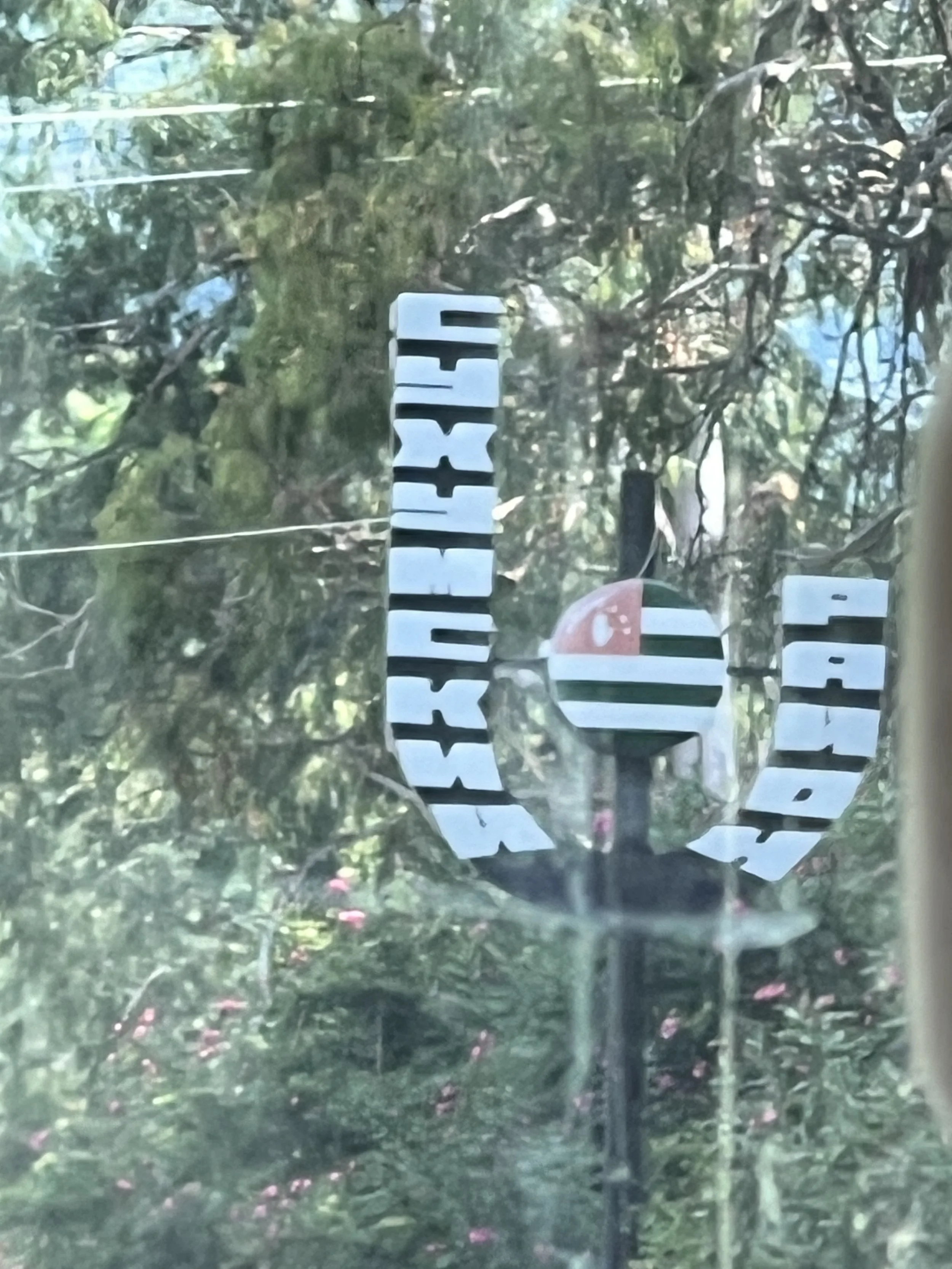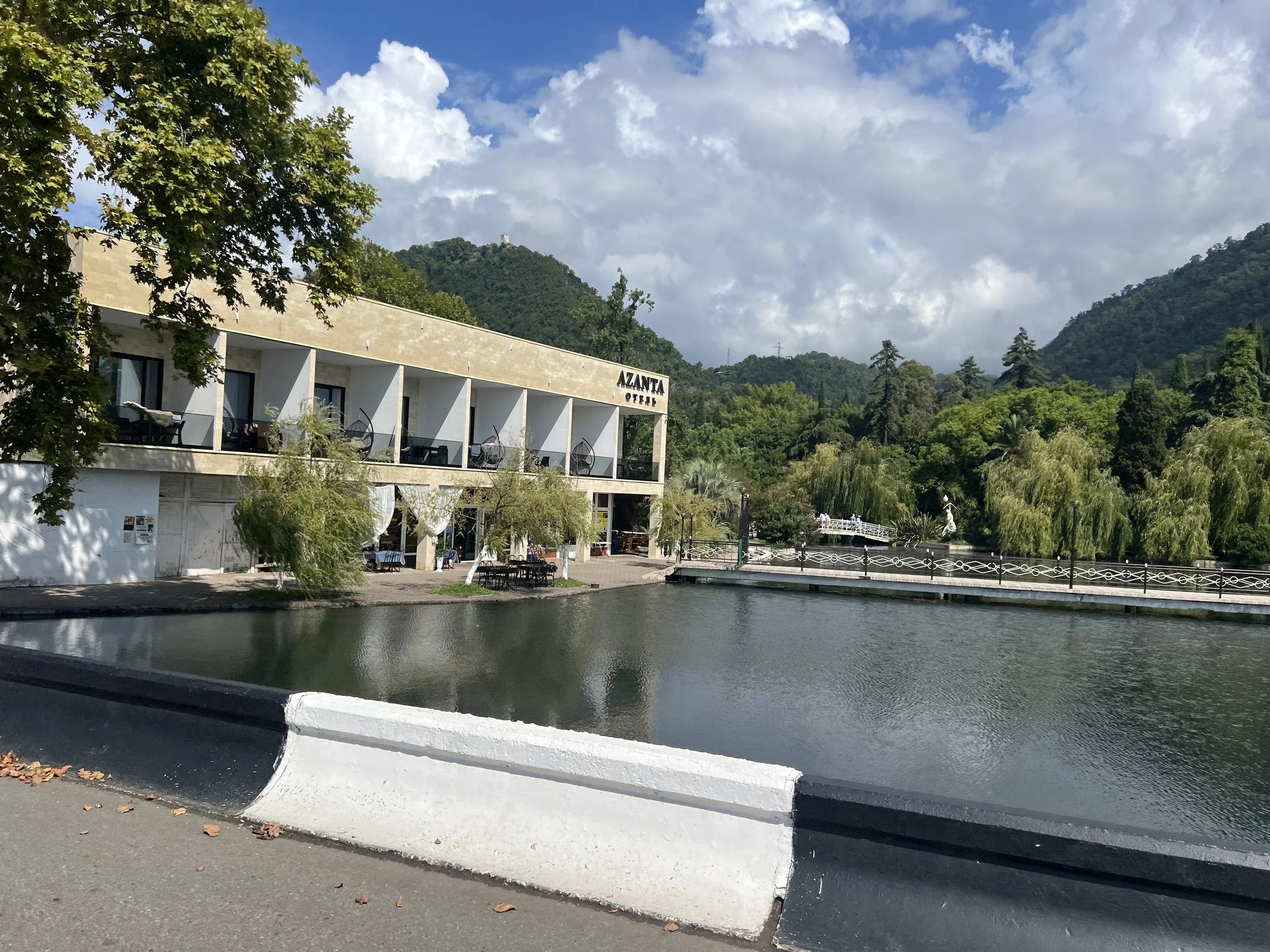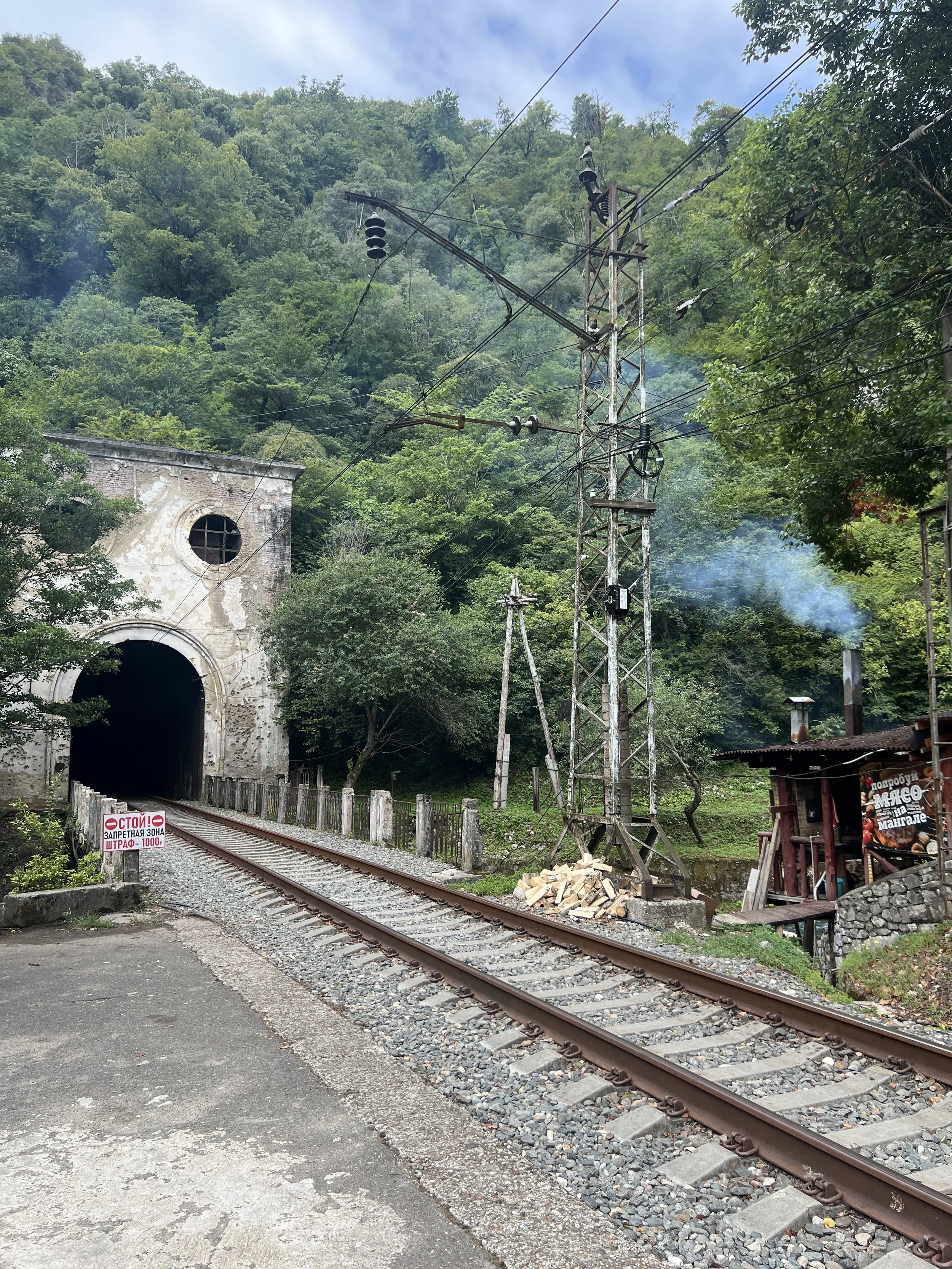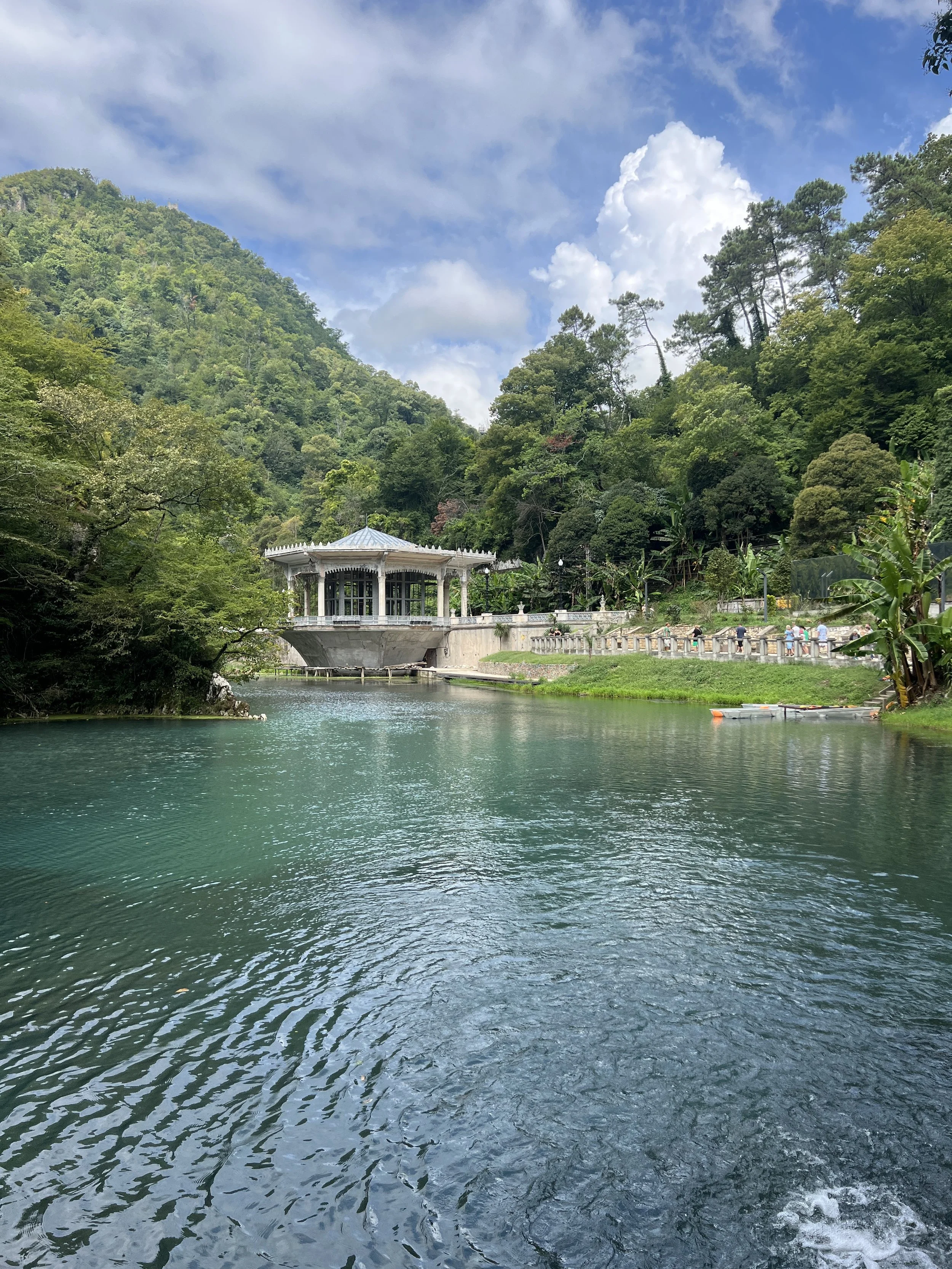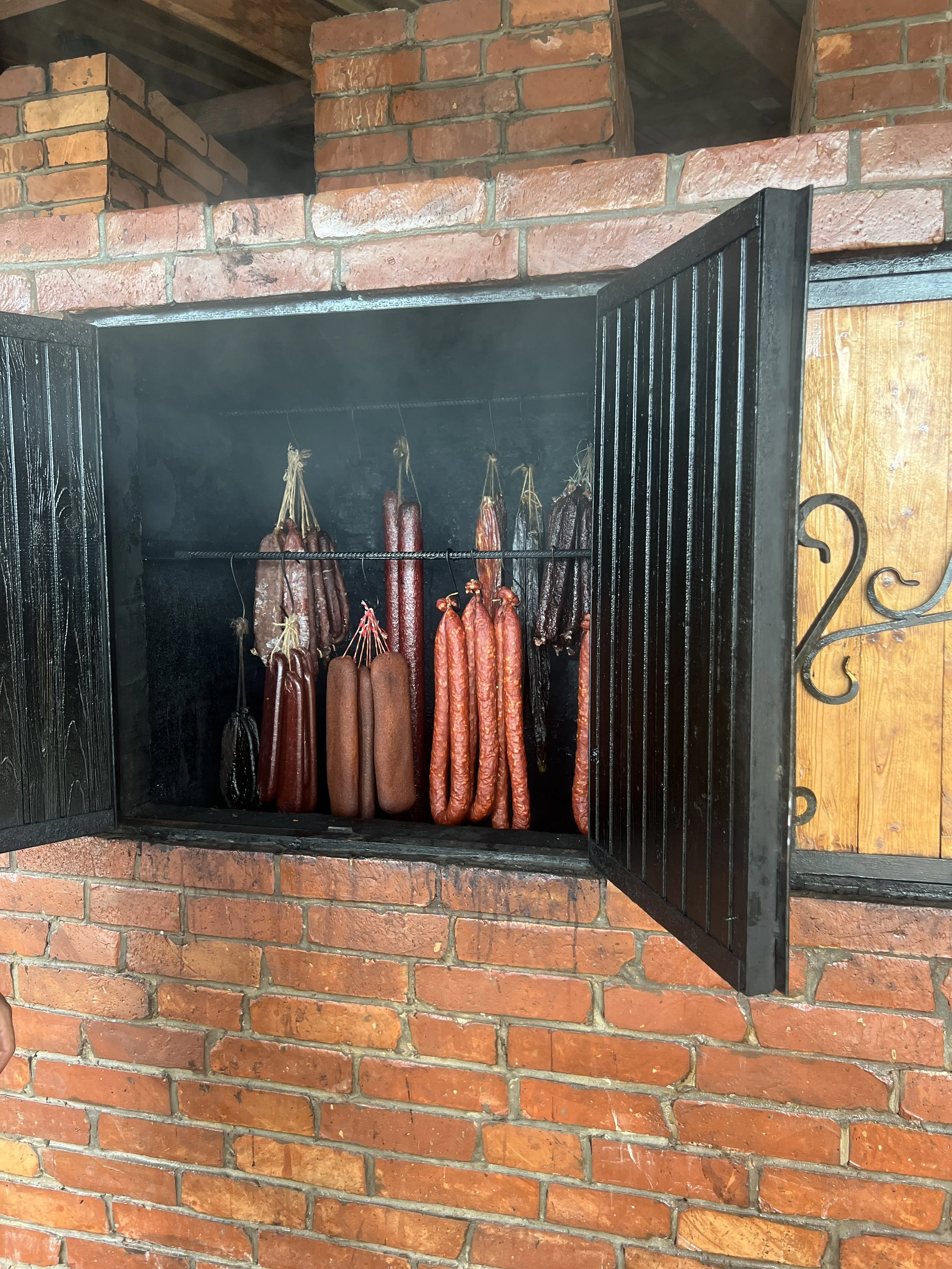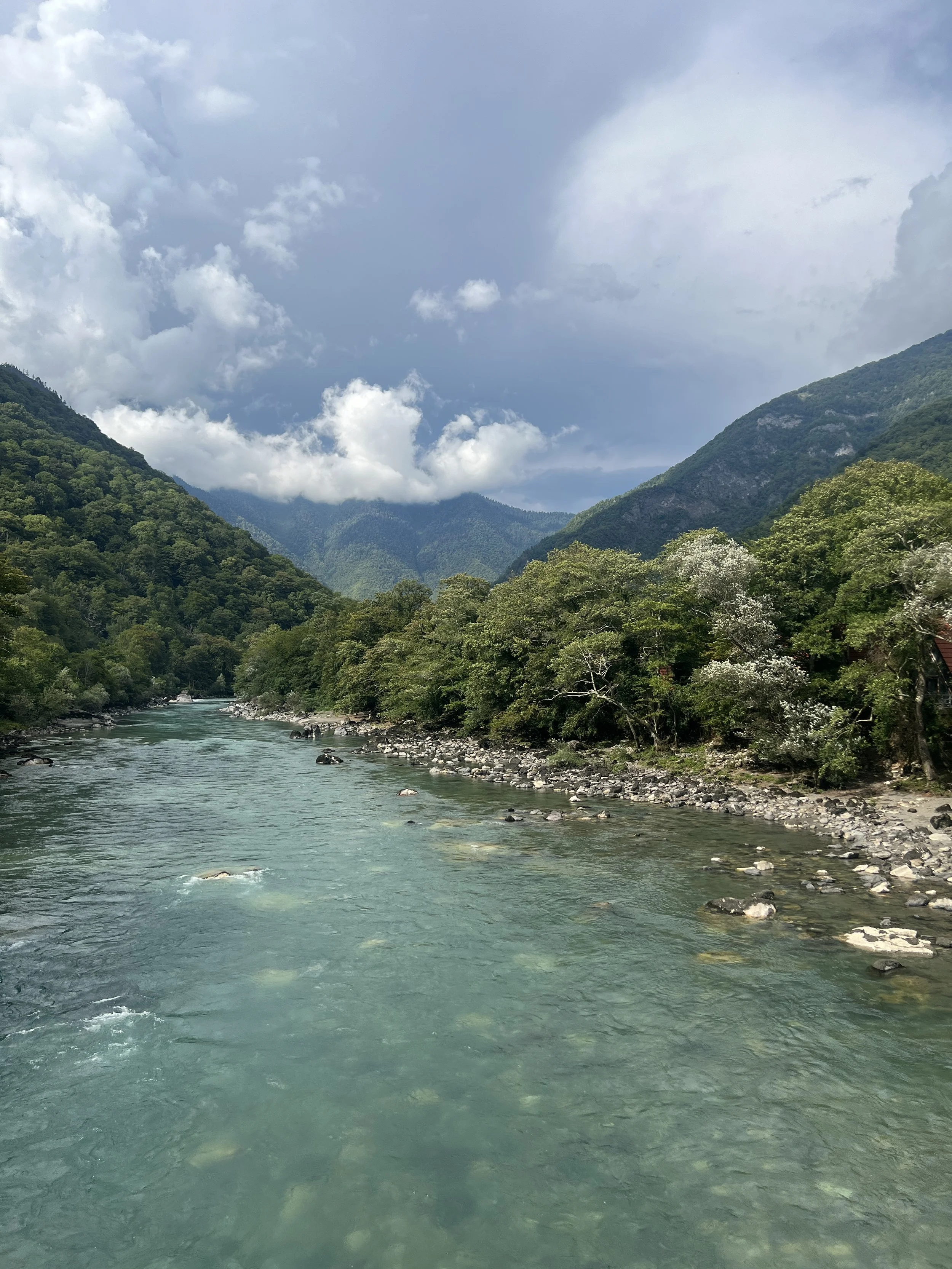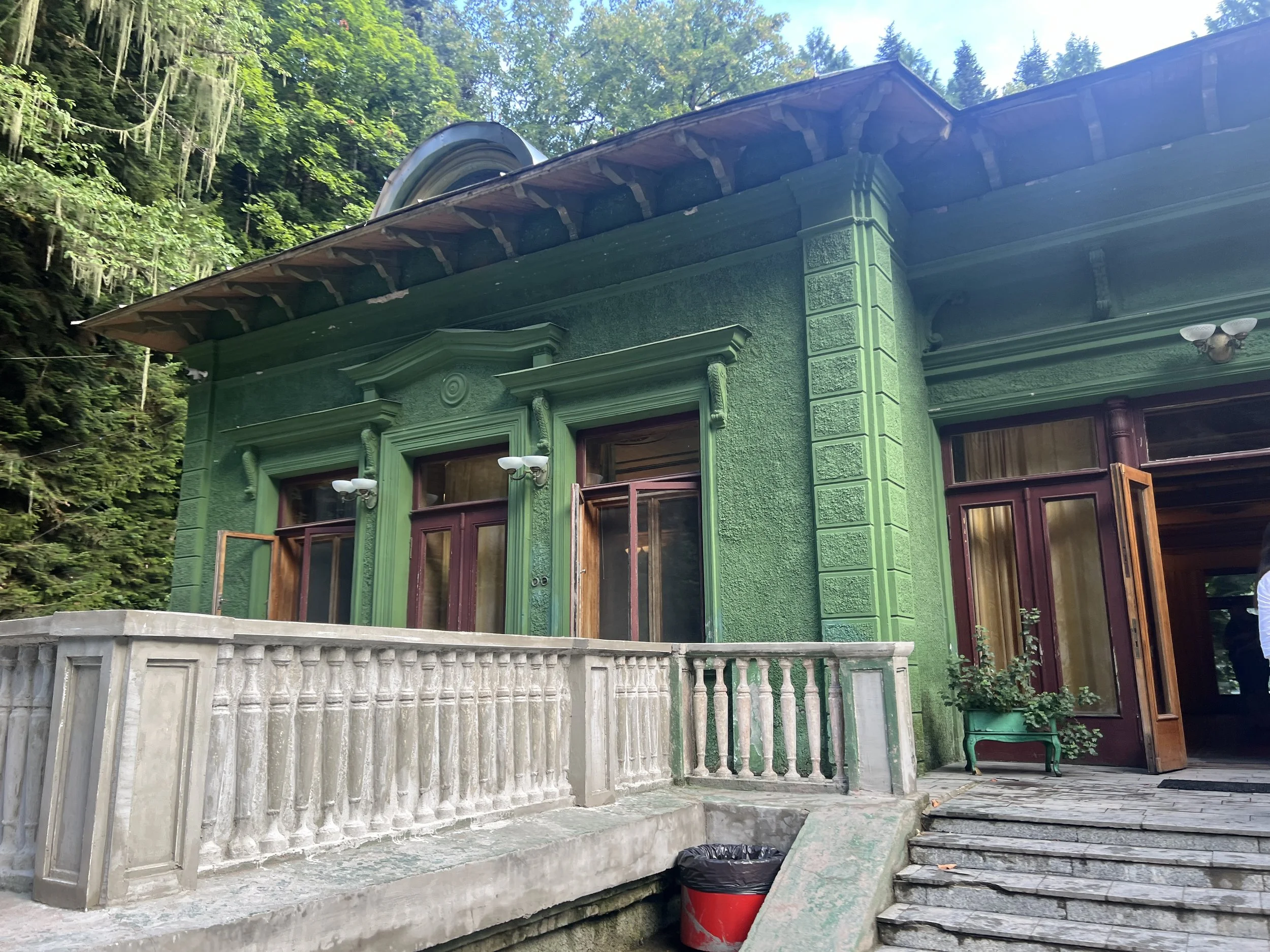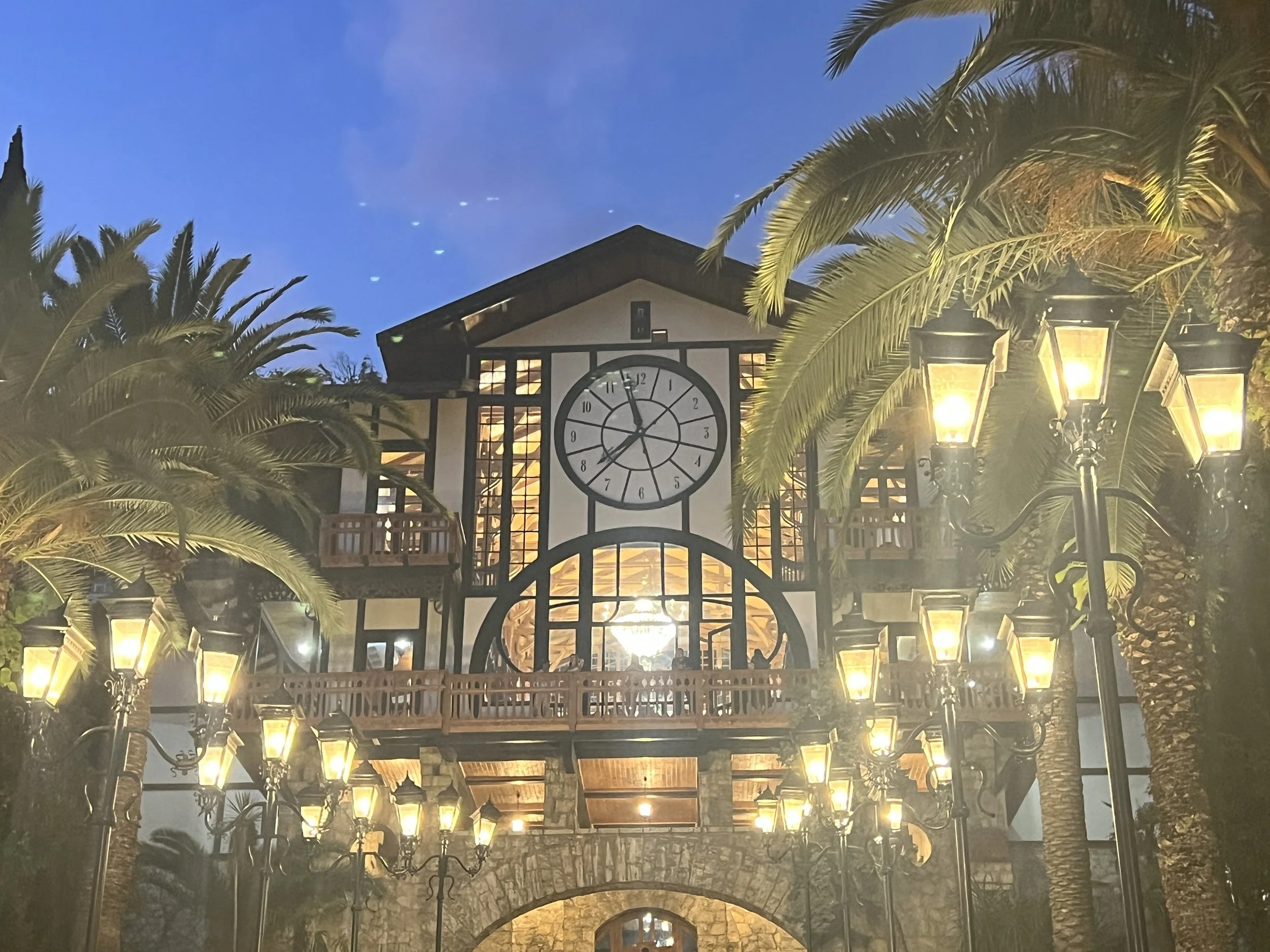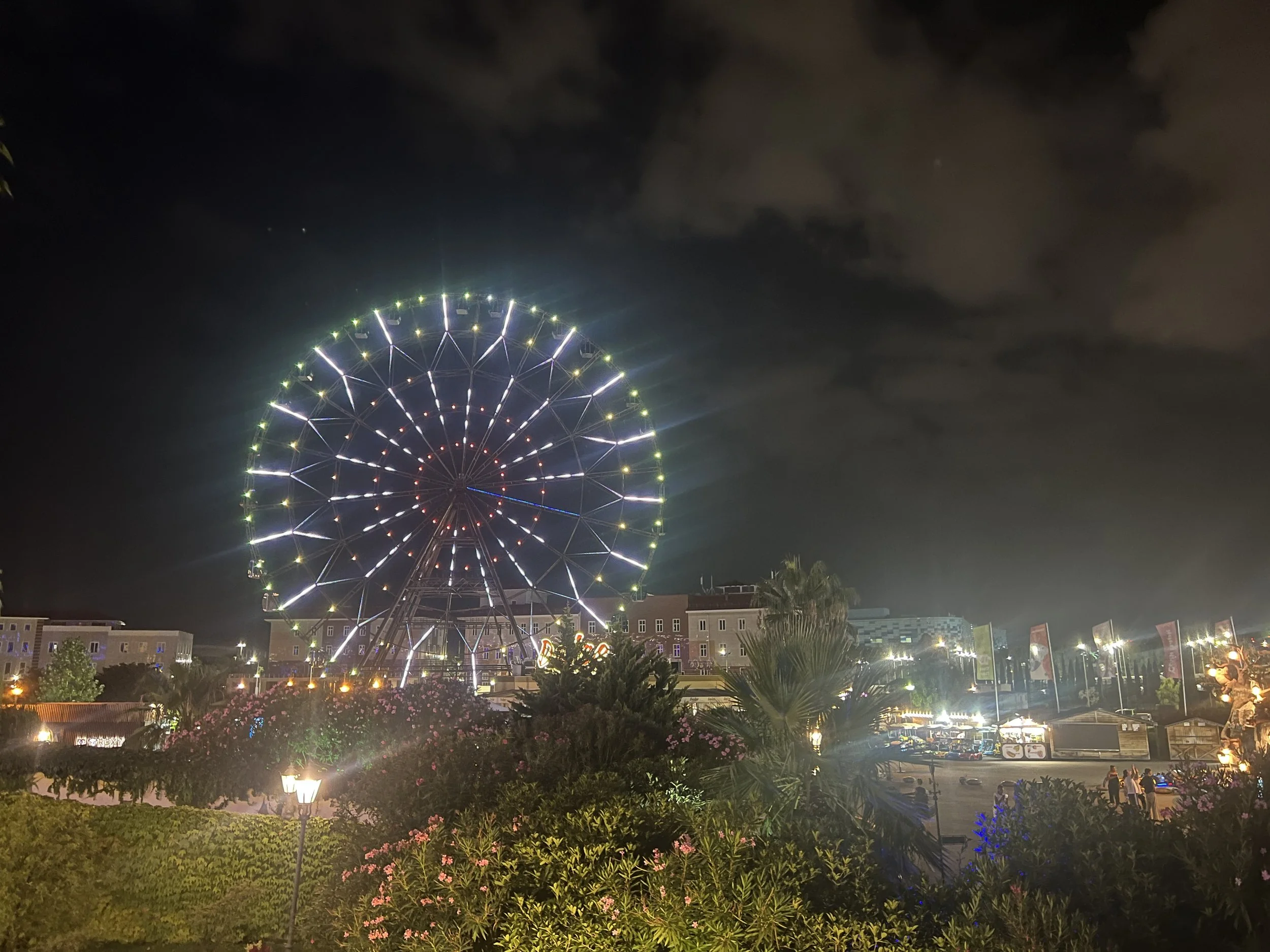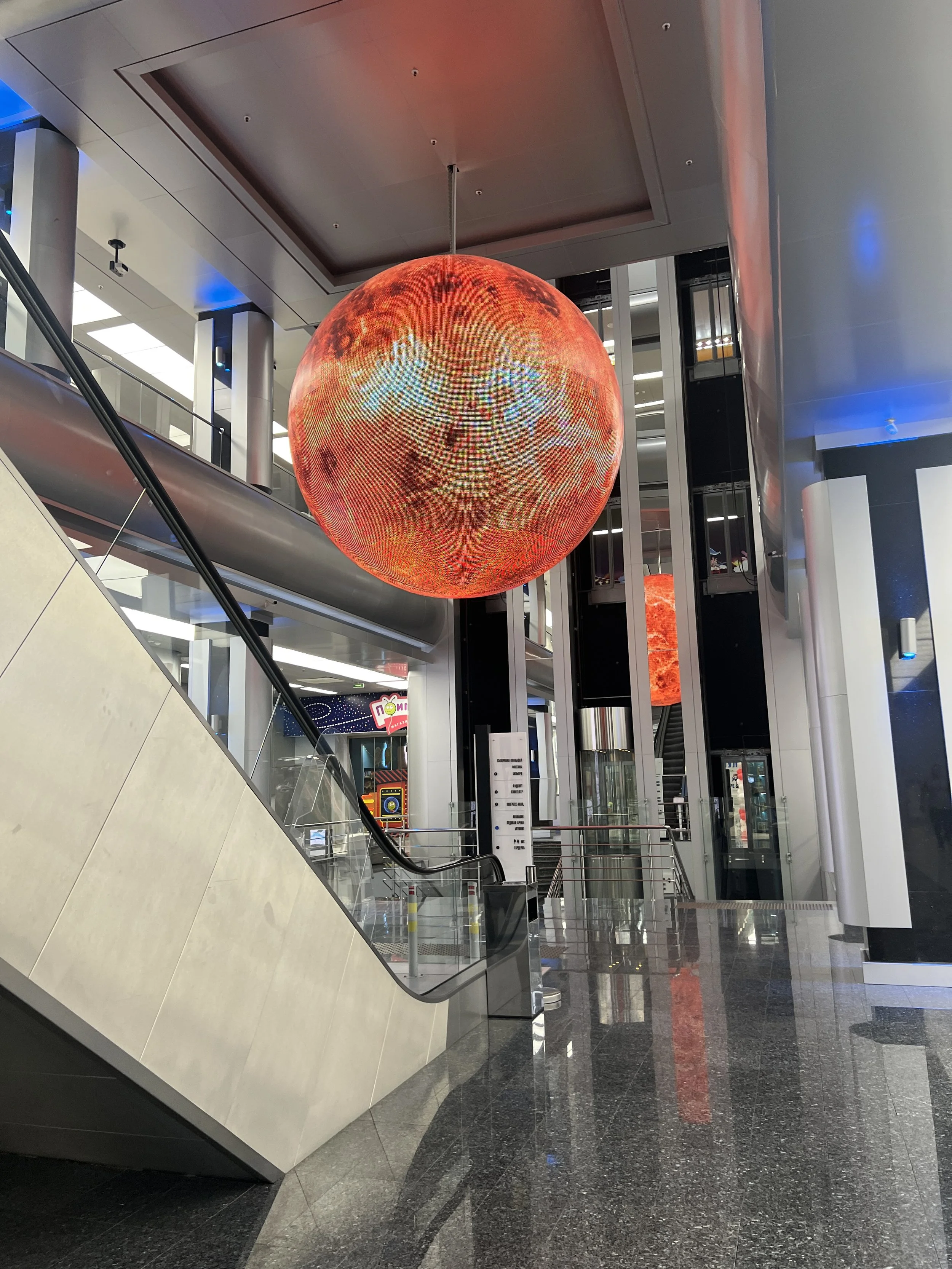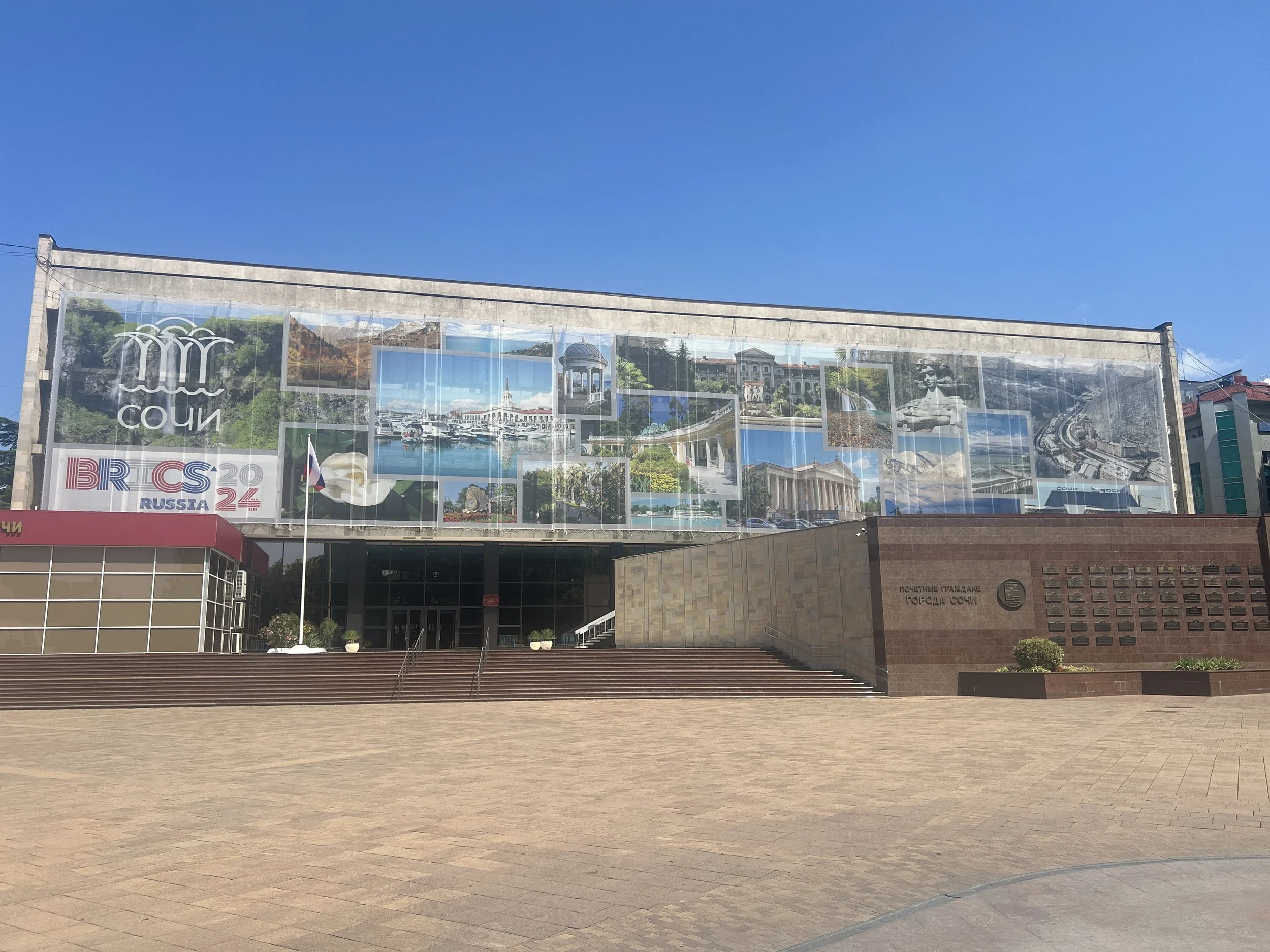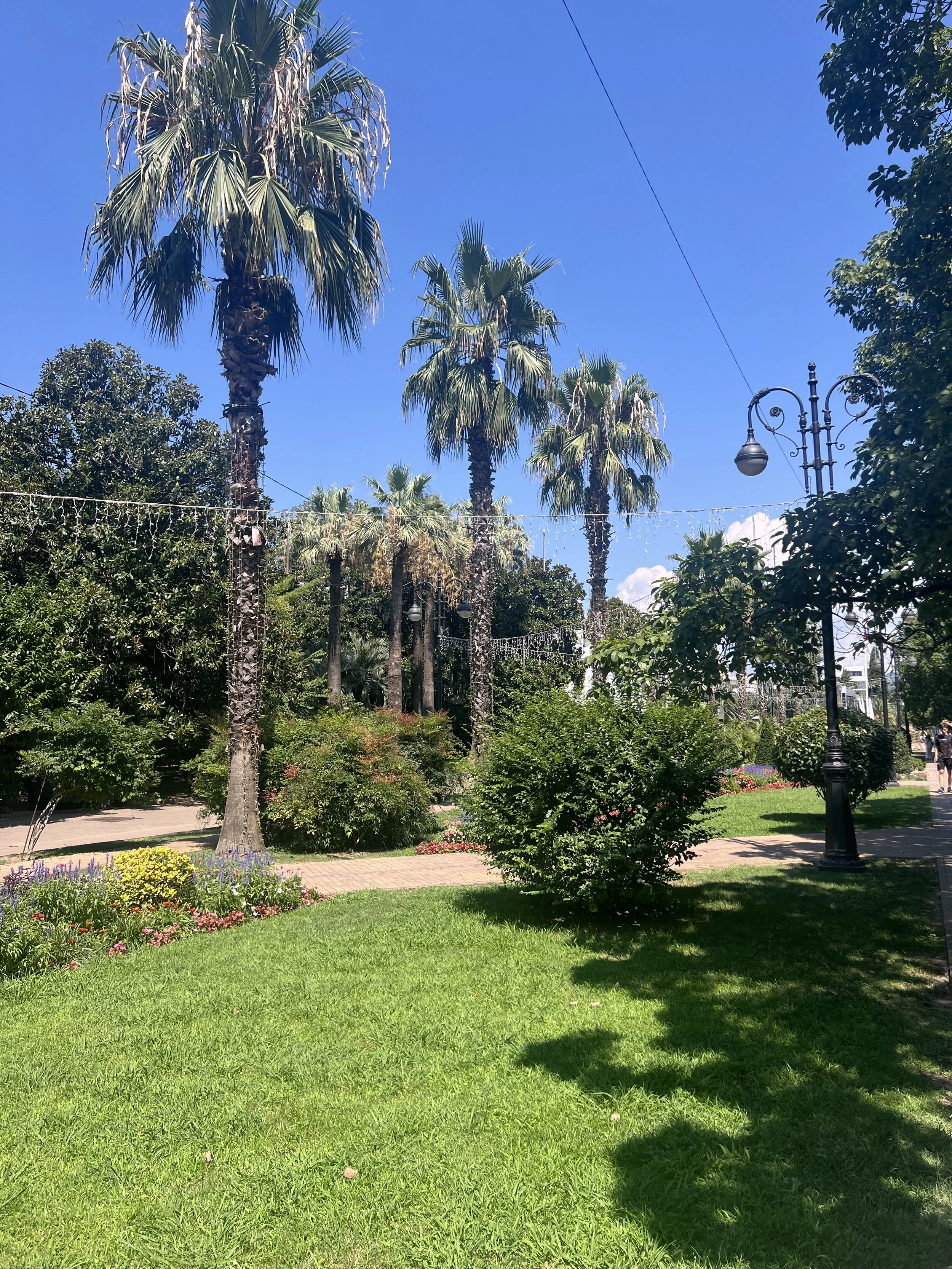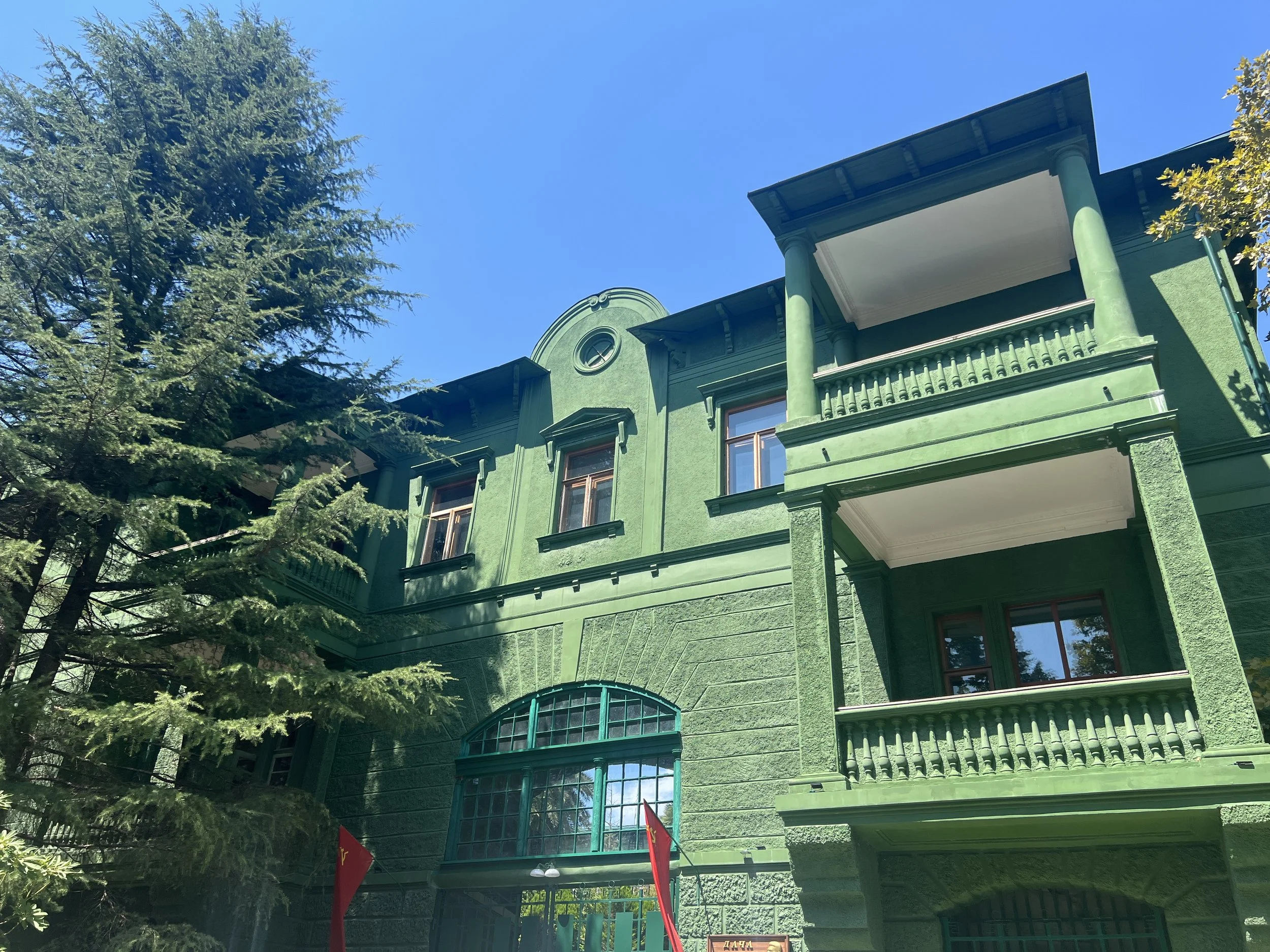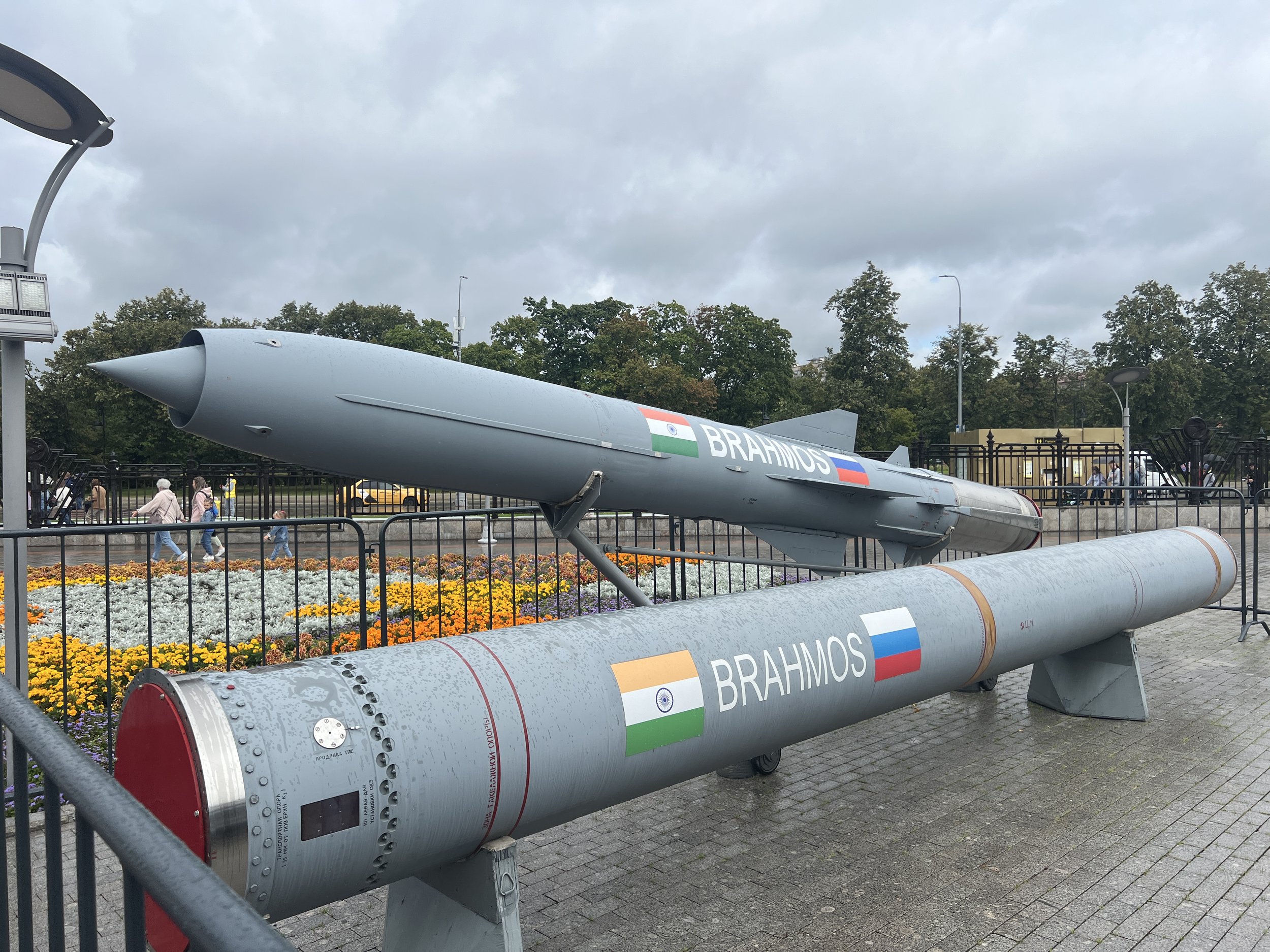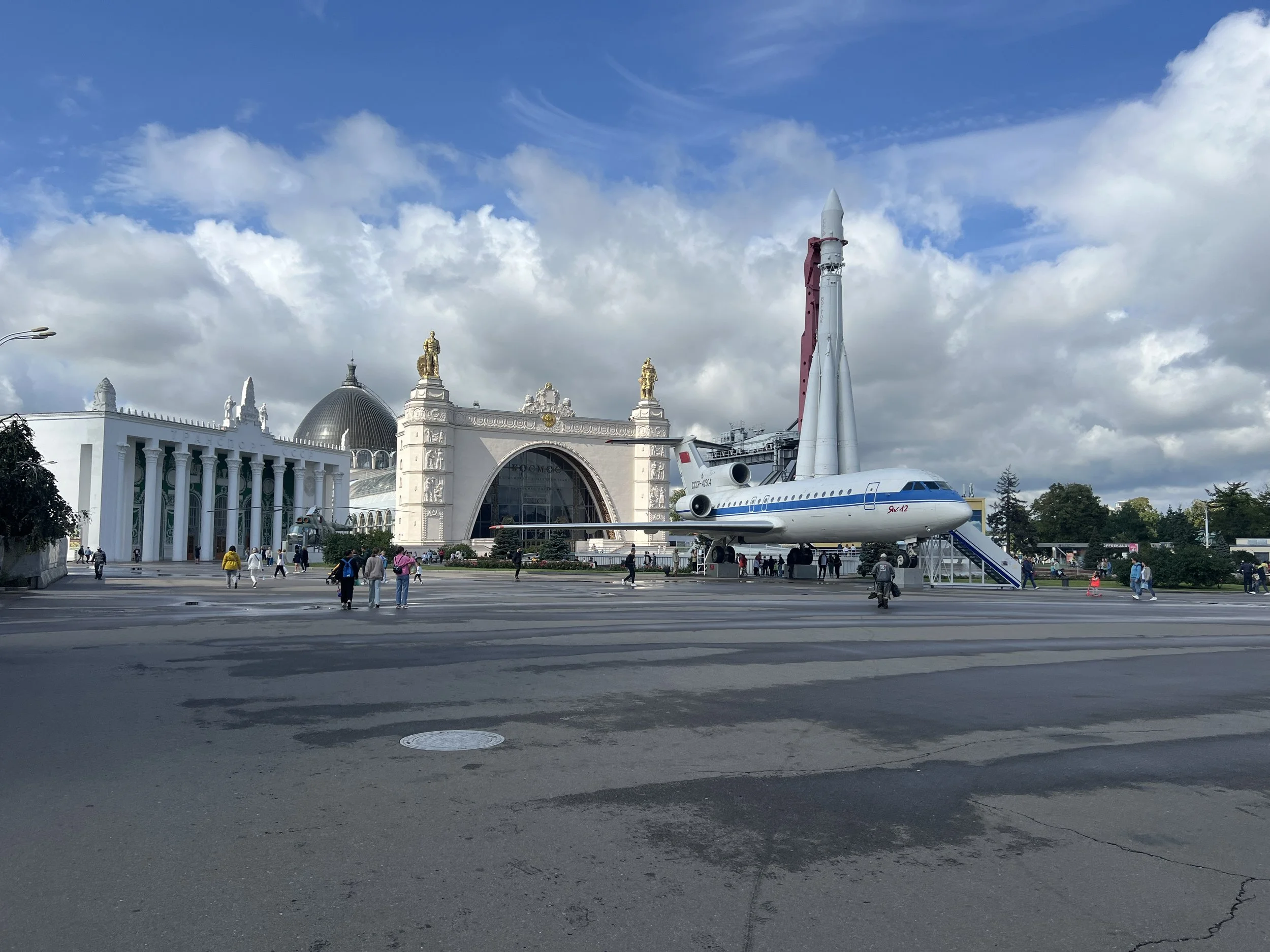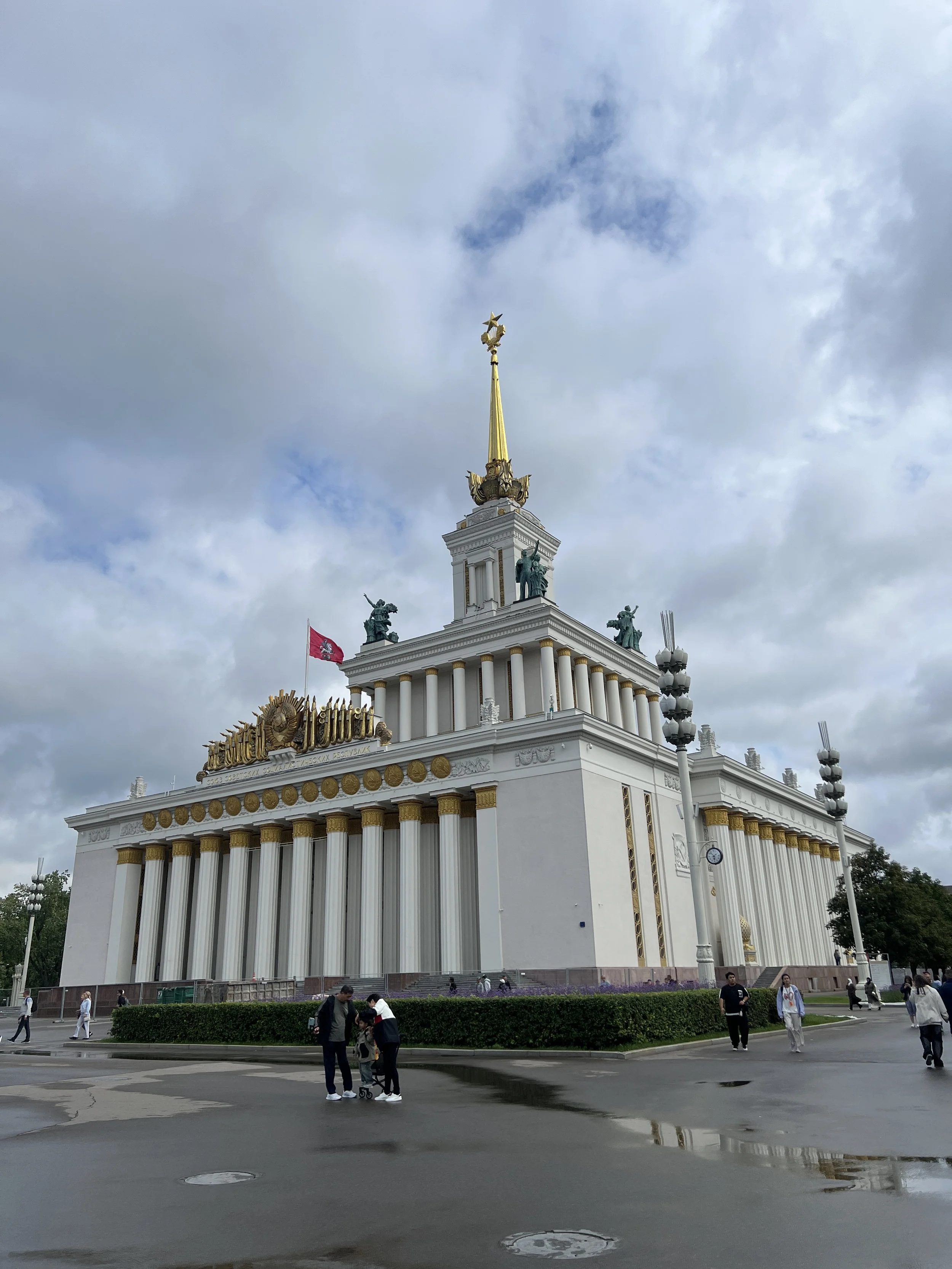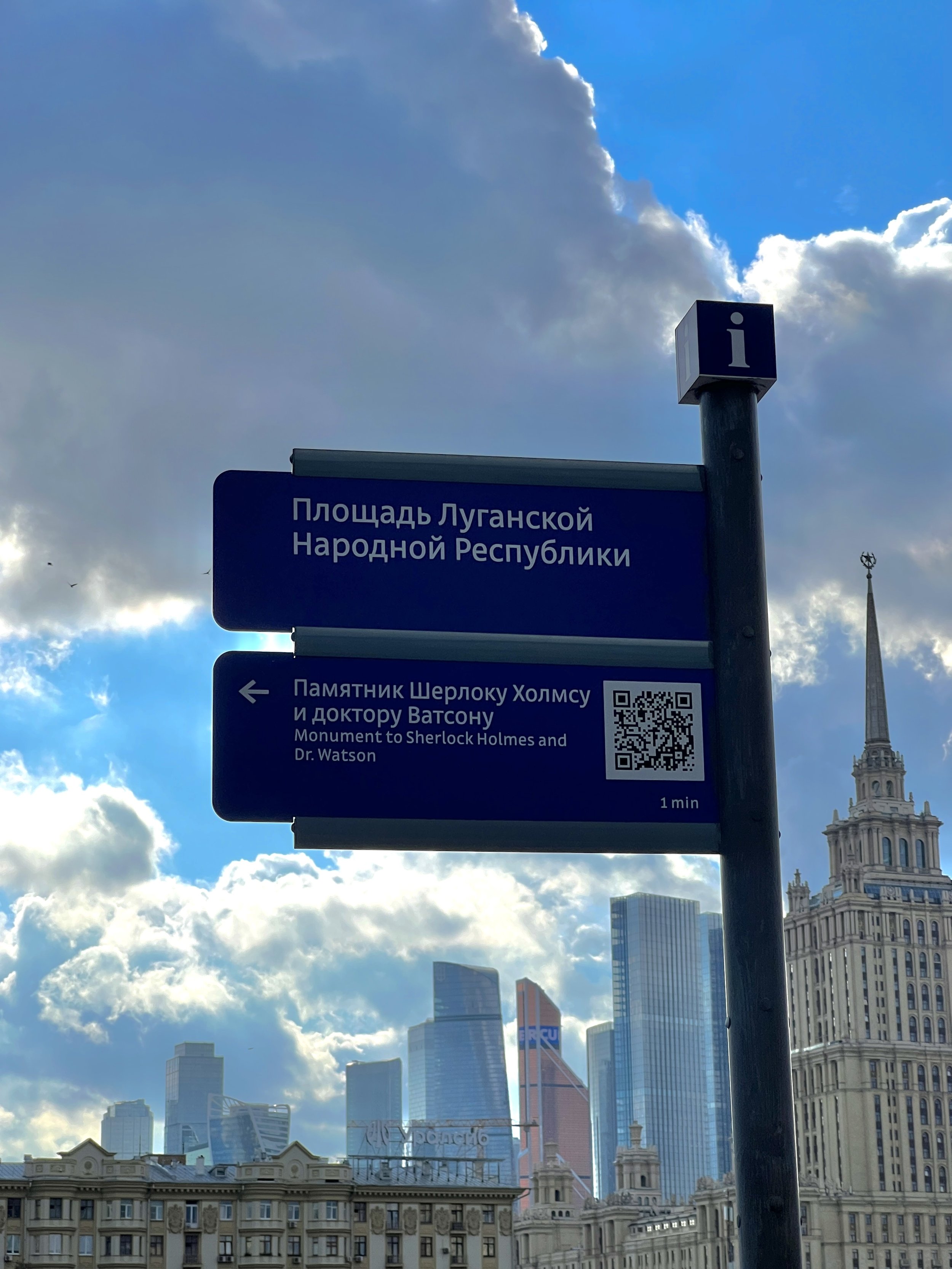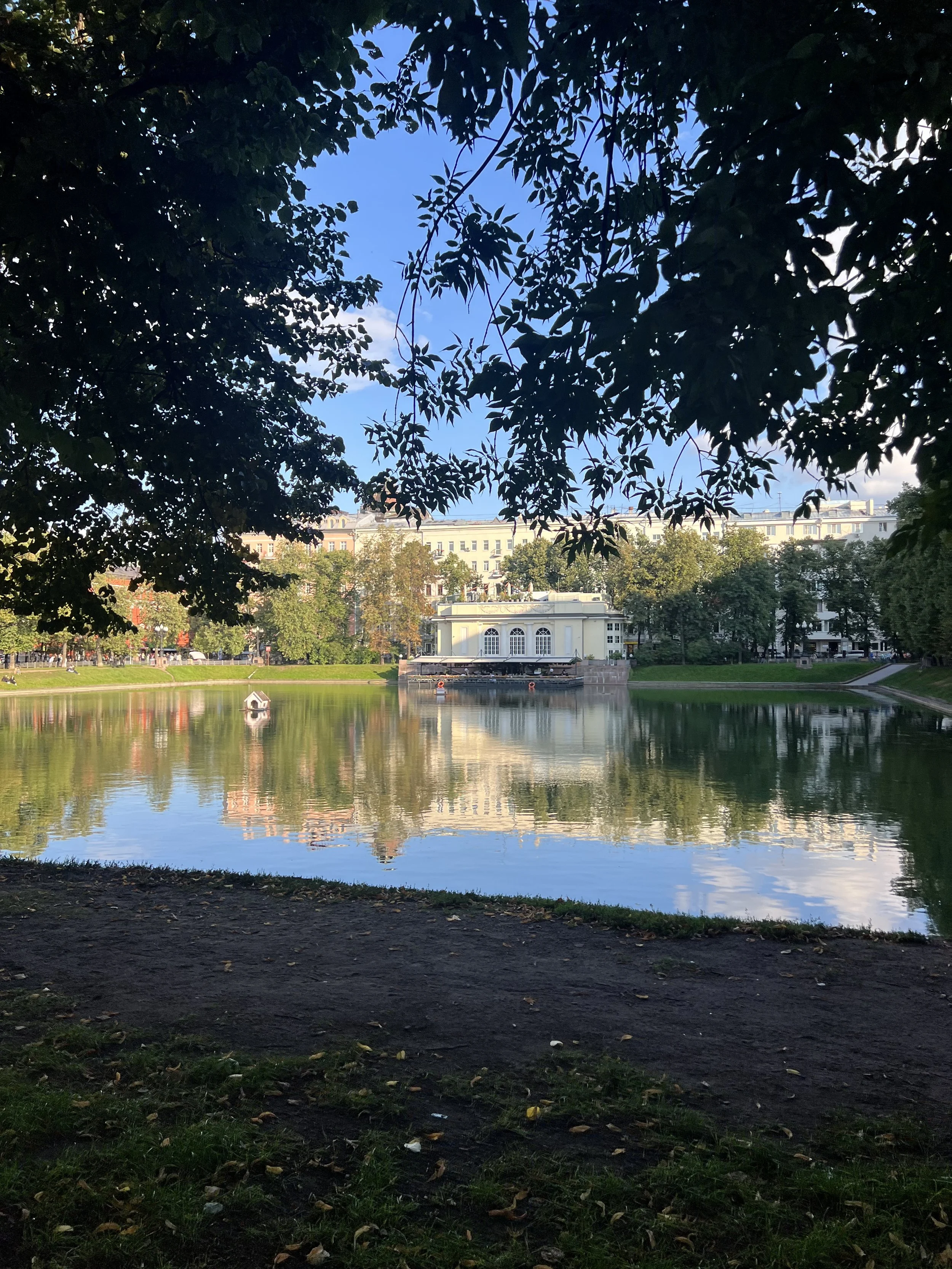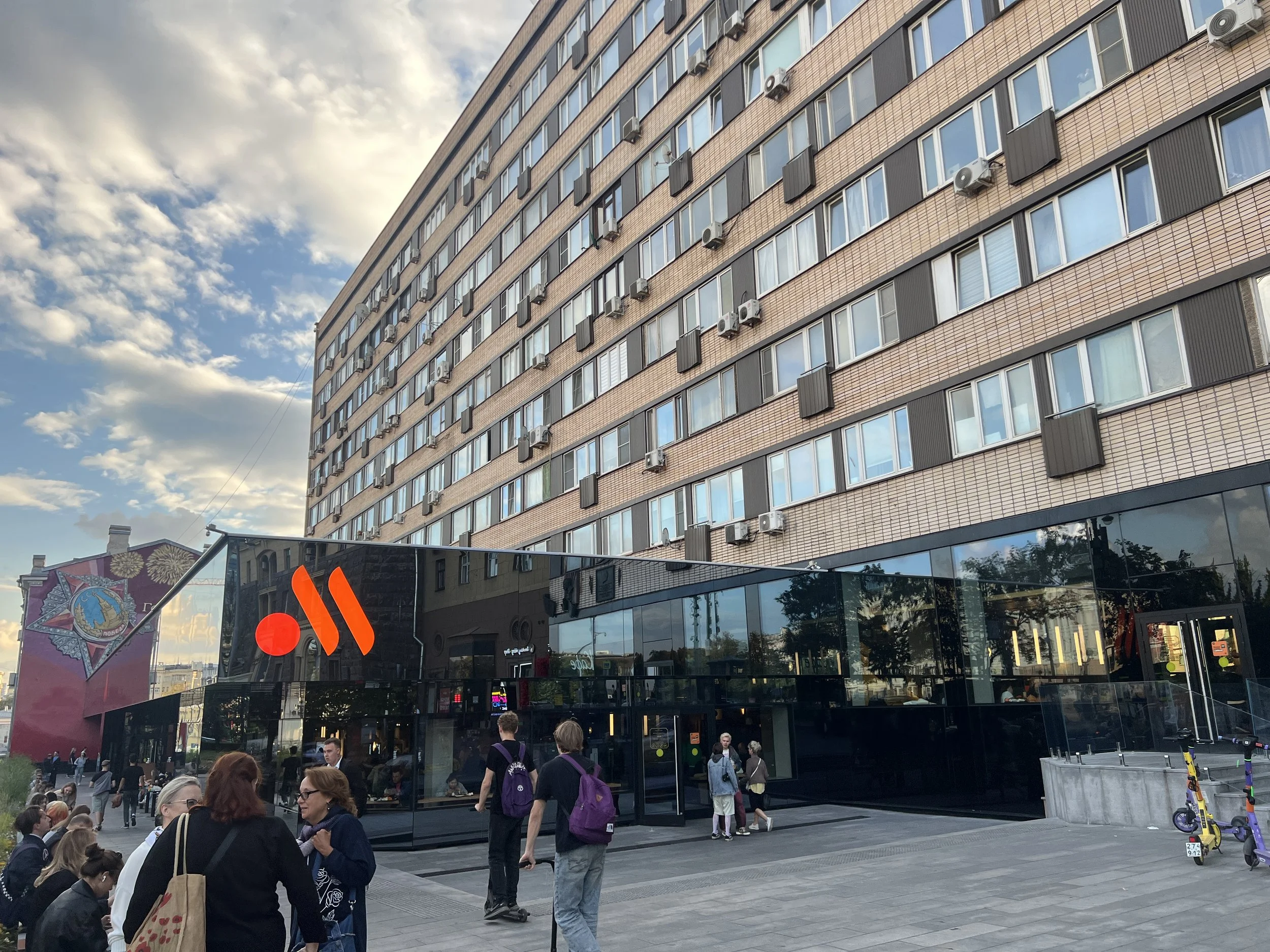Russian Caucasus
I took a 1am flight from Baku to Makhachkala, the capital of the Russian Republic of Dagestan. The flight is short— just about an hour, but I was expecting to have some questioning at the border (as I experienced on arrival in St. Petersburg last year and as I understand is standard for those using passports from Russia’s list of Unfriendly Countries).
On arrival, there were three groups before me, but they moved quickly enough. Surprisingly, I was just asked the purpose of my trip and how I long I plan to stay in Russia. My passport was stamped a couple minutes later, and I was let in with a “good luck.” I was never made to feel uncomfortable or unwelcome— Russian immigration has once again proven to be respectful and efficient.
Thankfully, I had brought Russian Rubles, since the airport had no currency exchange facilities. I ordered a Yandex Go (the Russian equivalent of Uber) to my hotel. I had pre-booked the Central City Hotel close to the main sites and Caspian in Makhachkala. I booked this hotel through the OneTwoTrip website, an online travel agency that allows foreigners to pre book and pre pay Russian hotels and flights. This was great for me as I meant I didn’t have to exchange dollars for rubles to pay for the hotel, and I didn’t have to carry too much cash into the country.
Day 1:
I had just come off a very intense trip in Azerbaijan with sleeping past midnight and waking up around 5am each night, so I had a very nice deep sleep on arrival in Makhachkala.
After a leisurely morning, I headed out into the city. I first wanted to walk down to the Caspian Sea. One thing I’d like to do on my travels is see the Caspian from each of its bordering countries. I had previously seen it from Iran (2016) and Azerbaijan (2022 and 2024), so now it was time to cross Russia off the list. Now only Turkmenistan and Kazakhstan remain.
I then took time to walk around a very attractive road with lights and many cafes + bistros. There were also some historical buildings, Soviet statues, and a very attractive square to enjoy.
In the evening, I settled on an excellent Italian dinner. I had chateaubriand with mashed potatoes and tea. It was a great meal and perfect end to my first day in Russia.
Day 2:
The next morning I spent some more time walking around the city, including by the abandoned theater. I can tell this was a beautiful building back in the day, and the plaster designs on the outside walls can still be seen.
My two travel mates were supposed to arrive in Makhachkala with the driver around 3pm, but he was having car trouble, so I hung out in the hotel lobby taking care of some work while I was waiting. Unfortunately, the delay kept rolling, and it wasn’t until after 9pm that they finally arrived. At that point, we went for a quick dinner. Unfortunately, the guide’s car was not improving, so we had to stop at a car rental place to get another car for our journey. What a hassle!
At midnight, we finally drove the 2.5 hours to Derbent, a coastal city in southern Dagestan.
Day 3:
After less than 6 hours of sleep we were off to Derbent’s highlight— the fortress. We spent a while walking around, seeing the buildings and taking in the views. We also visited the small museum they have with a model of the fortress complex and some modern art.
We then walked down into Derbent City. Derbent is a very religious city, so we saw many flags for Imam Hussein and visited a mosque.
After a quick coffee break we went to an Armenian church, where entrance is free for Armenians. We then walked a bit around one of the squares where there is a statue of Lenin.
Afterwards, we drove down to the beach where the famous Caspian Sea Monster is located. This Soviet creation was as a flying boat that went low enough that radars would not be able to detect it. There are also some other old aircrafts littered in the area around it.
We then started driving towards the mountains of Dagestan, stopping at a very impressive gas station along the way (including Coca Cola imported from Japan!).
Our goal was to make it to Kala Koreysh— an ancient village with a mosque and some tombstones. To get here, we had to park on a gravel road up a hill and then hike about 2 kilometers. There were great views from up here, and the mosque is very nicely maintained.
Hungry, we hiked back down and went to the village of Kubachi where we would be spending the night. In our home stay we were given Kubachi-style plov. This rice dish contains beans, homemade beef sausage, and walnuts. On the side we had some fresh herbs and cucumbers.
Kubachi is a village known for its silver smithing. The basement of our home stay was a silver smith workshop. The gentleman of the home gave us a masterclass, showing us how he melts down the silver and then forms it into various cups and plates. He also showed us the process of adding special carvings that are unique to this village.
Day 4:
The next morning we went to the Kubachi Museum. This is located inside a large Soviet building where many silver artisans had their individual workshops. Today, the building’s purpose is the same, but since the craft is in decline many of the workshops remain empty.
The centerpiece of this museum is a sword originally wielded by King Nader Shah of Persia. This sword has two blades, featuring Persian writing and drawings. Since I am a descendant, the museum keeper was kind enough to let us hold the sword.
The other pieces in the museum also deserve attention, including Persian-style samovars, Soviet vases, and Caucasian carpets.
We then headed to the village of Balkar where a lady showed us this village’s craft— clay pots. Originally, we were also going to have lunch here, but the lady who was supposed to prepare it did not show up, so we headed to a convenience store instead.
We then drove through a beautiful mountain road to the town of Salta. Here, we strapped on tall rubber boots and walked through a canyon to reach a covered waterfall. This waterfall reminded me of the Baatara Gorge in Lebanon.
That evening, we continued driving to the village of Sogratl where we spent the night in another home stay.
Day 5:
The following morning we visited the village museum which shows a traditional house with clothing and farm tools.
Then, we continued to the abandoned village of Gamsutl. This village is located at the top of a mountain to avoid invasion. We decided to take horses up for a different experience and in the interest of time.
We then headed to the Gunib Canyon. This was very touristy, as have become many of the sites in Dagestan. For the past few years domestic tourism in Russia has been up dramatically, and many tourists choose to come to the Caucasus due to the different culture and warm weather.
That night we stayed near the highway connecting the Dagestani capital of Makhachkala and the Chechnyan capital of Grozny in a small town called Sarykum. This town is best known for its large sand dune and it has a hotel where we spent the night.
Day 6:
The following morning we started the day by walking up the sand dune. A great metal walkway with stairs has been installed which makes walking up quite pleasant, despite the heat.
There used to be a train station operating at the bottom of the sand dune. Now, the train station lies empty but the latrines have been converted into a very nice coffee shop.
We then drove to the Sulak Canyon. We went high-up to get a great view of the plateau of deep blue water that fills the canyon. We also stopped there for lunch before continuing on towards Chechnya.
Lake Kezenoyam was our first stop as we left Dagestan and entered Chechnya. Before making it there though, we had one quick stop at a Chechnyan checkpoint where they checked that we were not carrying any alcohol into the republic. This lake was worth the detour, as it is a serene area surrounded by mountains.
Nearby there is also the abandoned village of Khoy. The village was abandoned as Stalin deported Chechens and Ingush people from their homeland to Central Asia. This village, once teeming with life, now lies empty. It serves as a solemn reminder of what can happen in a brutally authoritarian society.
After our walk around the village we continued our drive towards Grozny. We made one brief stop at a mosque in the city of Shali beforehand.
By the time we made it to Grozny, we were quite hungry. So we headed to the Grozny City Hotel’s top floor restaurant. From here we had a great view of the city and enjoyed meat with vegetables and various tea mixtures.
For the night we stayed at the Edelweiss Hotel which is connected with the well known Judo Club. This hotel was great— modern, fast Wi-Fi, and a well-stocked breakfast buffet.
Day 7:
The following morning we began our walk around Grozny by walking past the judo arenas near our hotel. Then, we went by the market to get some fruits before visiting the Memorial Complex of Glory for A.A. Kadyrov, the former President of the Chechen Republic. In this building there are many works of art honoring Chechnya and artifacts from wars in which Chechens fought (often as part of the Soviet army). There are also some tanks outside this memorial.
Our driver was having some car troubles, so he went to a mechanic while we started walking down Putin Avenue. This is a beautiful street with many sites including restaurants, memorials, mosques, and new buildings going up.
We ended our walk at the Grozny Mall, which is a very impressive building.
Since our driver was continuing to have car troubles we made our way to Vladikavkaz (meaning “control or possess the Caucasus”), the capital of the Republic of North Ossetia. Entering this city we could feel a marketed change from Chechnya and Dagestan. Here, people are primarily Christian, so the clothing and presence of alcohol stood out to us. Soon enough, our driver fixed the tires and arrived in Vladikavkaz so we could have a walk around the city.
Day 8:
The next morning we went to visit one of the most iconic sites from the Russian Caucasus: the Dargavs: “City of the Dead.” This is an ancient burial site consisting of multiple small tombs where bones would be placed into.
On the way there, we stopped at two memorials. The first was for the Great Patriotic War (the Soviet term for World War II). The second was to honor the death of the film crew of The Messenger, a Russian film that was supposed to star Sergei Bodrov Jr.. Tragically, he and the crew died in a rock ice slide in 2002 while filming the movie.
We then stopped briefly at a monastery and mountain view lookout point.
We then stopped at one of the most somber stops on our entire trip: Beslan, Ingushetia. In 2004, terrorists held an entire school hostage for 3 days. With hundreds of deaths, this is considered the deadliest school attack ever. It was heartbreaking to be in this place marked by agony, and there were many other visitors there to pay their respects. In fact, just a few weeks after our visit President Putin was in Beslan as well.
That evening, we had dinner in Magas: the capital of Ingushetia. This city is known for being the capital of a Russian region with the lowest population— only about 15,000. We walked around briefly before returning to Vladikavkaz.
Day 9:
In the morning we received news that our permit to visit South Ossetia had been rejected, due to the suspicious profile of one member of our group (we deduced it likely wasn’t me, thankfully). I won’t go into too many details, but this experience has forced me to rethink how I approach trips to sensitive destinations in the future. Unless other factors prohibit this, I will insist that my application be lodged individually— not as part of a group to prevent a group rejection. Also, it may make sense to travel as part of a group of one (with a guide) or with someone who I know has a non-controversial profile in the application process for the permits. Live and learn.
Given the permit rejection we decided to head on a mountain pass near the South Ossetian border to get a feeling for the landscapes. It was a real adventure up dirt roads near a new ski resort that is being built.
Day 10:
The next day, we headed into Southern Ingushetia. This is a region by the border with Georgia that requires a special permit for foreigners. We arranged this with our guide about 6 weeks before our trip, and our guide picked up this permit in Magas. When we got to the border between North Ossetia and Ingushetia we presented our passports and the permits and were quickly let into the region.
The scenery in this part of Ingushetia is very impressive, with beautiful mountains and winding roads (in excellent condition). This part of Ingushetia is known for its towers, so our first stop was the Egikal Towers Complex. This is an old village with many towers. While it is a popular site, many of the tourists do not bother entering the actual complex because you have to walk uphill on dirt / grass in order to go in. Instead, many just view it from afar. This meant that once we were inside the village there were very few other people.
Next we visited the Tkhaba-Yerdy Church. This ancient church is unfortunately in poor condition and thus cannot be entered. However, I nonetheless enjoyed this stop due to the unique carvings on the outside walls. Afterwards, we visited some towers that are practically built on stone hills. To me, it is unbelievably impressive how these were built. It was explained to us that these towers were designed in this way in order to be difficult to capture by invaders.
That evening, we made the drive towards the city of Nalchik, stopping briefly at a Great Patriotic War memorial on the way.
Day 11:
In the morning we spent a bit of time in Nalchik before hopping in the car south— towards Mount Elbrus. Mount Elbrus is the tallest mountain in Russia and in Europe, so it attracts many hikers. Here we met tourists from many parts of Russia (including the far East) and foreign tourists from Iran.
We took a series of cable cars up and then a snowmobile up to 4000m of altitude. It was a great experience to go on the snow mobile since it was snowing at 4000m, but the ride was a bit crazy. I had to hold on for dear life.
After a great time at Mount Elbrus, we headed towards Cherkessk— the capital of Karachay-Cherkessia. This a region I first heard about on my trip in Syria, since our guide had ancestors who were originally from this region. He even showed us a traditional dance from the region on one of our evenings.
Day 12:
After a quick sleep, we continued driving, this time towards the region of Adygea. I must admit: this was not originally on our itinerary. However, since we were not so far (and had some additional time due to missing South Ossetia), one of my group mates pushed for this addition to the trip. I knew it would be an interesting experience (and nice drive), so I did not protest.
Leaving Cherkessk, we headed out of the region of Karachay-Cherkessia and entered the region of Krasnodar Krai. Here, we headed for the city of Labinsk from which we would cross into Adygea. Labinsk sits on the Laba river, and once you cross that river you enter the Republic of Adygea. We spent a bit of time in a few small towns of Adygea before heading back to Labinsk for lunch.
We then continued our driving and made it to Pyatigorsk. We first visited a cave and then walked by a few of the buildings build during the Tsarist period.
In the morning we took a cable car up to get a great view of the city and surrounding “Mineral Waters” area. Then, we walked down, but unfortunately it was a much longer walk than anticipated due to road closure preventing the Yandex Go (Russian equivalent of Uber) from picking us up.
We then drove towards the resort town of Kislovodsk. This town is serene— a great place for holiday makers to enjoy nice weather, beautiful + walkable streets, and mineral waters. This region is famous for mineral-rich waters that can be used for bathing and drinking. Here I was able to buy a few souvenirs from my trip as well!
That evening, our driver dropped us off at the Mineralnye Vody airport for our flight to Sochi. He was a good man, who made a nice trip for us despite the car troubles.
The Mineralnye Body airport was packed. My friend in Moscow explained to me that the airports in the southern part of Russia are particularly busy right now for two reasons. First, many Russian holiday makers are staying domestic at the moment, and the south of the country has become quite popular. Also, many other airports in the south of Russia (such as Krasnodar and Rostov on Don) are closed at the moment due to the conflict with Ukraine, pushing people to use the airports that are still open and then continue their journeys overland. The first floor of the airport was an absolute zoo, but the second floor had more open seats and was nicely air conditioned.
Soon enough, it was time to board our flight. The most special part of this flight was that it was on a Sukhoi Superjet— a Russian built plane. Very cool experience and a very sleek plane.
On arrival, our driver met us and took us straight to the Russian border with Abkhazia. The line to leave Russia was quite long, but once we got to the border official there weren’t too many questions. We had our Abkhazian letters of invitation (visa approval for Abkhazia is done via email, but our guide had to go to the ministry on the ground to get our applications processed) and soon enough were let into the country. Unfortunately, neither the Russian border going to Abkhazia nor the Abkhazian border itself stamps passports. This is due to the fact that Georgia considers this crossing to Abkhazia an illegal entry into their country, and the Russian + Abkhazian officials do not want to cause issues for travelers who may later head to Georgia.
Day 13:
Once in Sokhumi, the capital of Abkazia, we went straight to sleep as it was already past 2am.
In the morning, I woke up early so decided to stroll a bit around the area of our hotel on my own. In the square by our hotel there is a large building covered in banners and flags honoring the countries that recognize Abkhazia’s independence. Countries in this club include Russia, Nauru, Syria, Nicaragua, South Ossetia, and Transnistria.
After my walk we had breakfast at the hotel before being met by our guide Amza. Our first stop was to walk by the seaside part of Sokhumi. To me, this was the most beautiful place we visited on our trip. We were walking through lush tree-lined streets, among beautiful buildings, while being on the water. I understand why Abkhazia has such a romantic reputation among my friends from Russia.
We then drove southeast to the mountains. Here we got to see the utter destruction that continues to plague Abkhazia since its war. Many beautiful buildings and productive assets— like factories— lie in disrepair. We passed monuments honoring the heroes of the country who made the ultimate sacrifice in the war of 1992-1993.
We then made it to a small cafe that hosts a gorgeous waterfall in the back. We then stopped at a lovely fruit stand that had fresh figs and peaches. There was also a local fruit that is known to help stabilize blood sugar levels. Abkhazia is also known for its honey, and this was also on offer at this stall. Afterwards we stopped for a nice lunch of local cheese pie and pork shashlik with a local green sauce.
Afterwards we stopped a restaurant that is well located on a river with waterfalls. We did not eat here (our guide told us the food is not great), so we just bought a ticket to walk around the water here. There were beautifully formed rivers and also an opportunity to get in the water. Part of this walk is quite intense though, requiring you to walk on sideways inclined rock.
That evening we took some more time to walk through Sokhumi. For dinner we stopped at a restaurant our guide recommended. While my friend’s food came quite quickly, we waited over 45 minutes for mine. I ordered lamb lule kebab, and this was one of the best I had ever had. There were great pieces of fat inside and it came hot with great raw onions. It was definitely worth the wait!
Day 14:
In the morning we headed to see a bridge that was the site of a particularly deadly battle in the Georgian-Abkhazian war. Our guide explained how her own father was injured at this site.
We then headed up to a hill to get a great view of Sokhumi and the Black Sea. Along the road we drove we saw many beautiful hotels and holiday homes. I would definitely like to return to Abkhazia for some relaxation in the future.
While we were waiting for our tour of the caves we walked briefly by an artificial waterfall and by the tracks of the tourist train that used to go through this area. There his an old railway station that will soon be turned into a cafe.
We then entered the New Athos Cave. To get into the cave we had to take a train down. Then, we did a 1 hour group walking tour in the caves. At the end of the tour the train picked us up from a different stop and took us back up. I quite enjoyed the walk in the caves, but I do not recommend it for people with claustrophobia, especially since there is no opportunity to leave early / walk ahead if you feel uncomfortable.
Once back above ground we went to the New Athos Monastery. The building is very impressive, and it is beautifully situated with sea views and many cypress trees.
We then made a great stop at a farm shop that specializes in meat and cheese. We got to see the smokers in which they make their signature sausages, pork pieces, and cheese. We also got to taste their product and I picked up a smoked cheese and pork to eat.
For lunch we stopped at an amazing restaurant on the river. Once again, I had pork shashlik, which I enjoyed immensely.
We then headed into a nature reserve that hosts one of the dachas (country homes) of Stalin. This dacha is situated on a large lake, but in a section that makes it invisible from the other parts of the lake that people could have been visiting. Our guide told us that Stalin hated the smell of cooking food so much that he ordered the construction of the kitchen be made over 1 kilometer from the home.
At this point, we slowly started making our way back towards the Russian border. We briefly stopped at a deep blue lake (that is more stark in the daylight). Then we stopped briefly in Gagra, which the Tsar had hoped to make into the Russian equivalent of Monaco, in order to encourage the nobility to spend their money inside the country.
Soon enough, we made it back to the border with Russia. In order to leave Abkhazia we had to register with customs. Then, we headed to the actual border checkpoint. Locals and Russians head straight to the actual border checkpoint. Normally, tourists have to surrender their Abkhazia visa (which is a paper not stuck into the passport). However, I noticed that locals just flashed their passport photo pages to the guard and he waived them through. So, I decided to tuck my visa paper away and just flash my photo page at the guard. He waived me through. This was a huge success for me, as it allowed me to successfully have a keepsake from this trip.
The entry to Russia was uneventful, and once through we ordered a Yandex Go to take us to Adler, the city right on the border where we would stay the night. This city is well known for having hosted most of the Olympic facilities in 2014. Before hitting the hay we decided to walk around some of the impressive hotels and buildings made for that event. Today, Adler is popular among Russian holiday makers.
We had a great breakfast at the hotel and were then met by our guide for the half day we had in the area. He took us first to Rosa Khutor resort town where we took the cable car up. The view was nice, but frankly we could have skipped this. I would have much rather have spent the time in Sochi city, which is supposed to be really nice. Unfortunately, I did not coordinate this guide, so I did not make the decision on what to see.
We then headed into Sochi city where we walked around a large square where the BRICS Summit was held.
We then drove to another one of Stalin’s Dachas, which was quite similar to the last one. I learned from my friend that many buildings are known as “Stalin’s Dacha,” but he didn’t even visit many of them.
There was a great deal of traffic heading towards the airport, so our guide recommended that we take the train to the airport instead of going by car. Unfortunately, the train was a bit delayed. I bid my lovely travel partners adieu once we got off the train. I was headed to Moscow, and they flew to Tbilisi. Thankfully, we got to the airport about 90 minutes before my flight. I had already checked in online and had a mobile boarding pass, so I was able to make it to my gate with time to spare.
The Aeroflot flight up to Moscow was comfortable, though it was quite long due to the circuitous route the flight must take to avoid flying in the airspace of potential conflict. By nighttime I was with my friend Anna, and we had some pizza.
Day 15:
One of the sites I missed my last time in Moscow was the Cosmonaut Museum. I was mainly interested in the museum due to its impressive outside structure. However, my friend Anna knows a lot about Russian cosmonauts, so walking through the museum with her I learned a lot about the Soviet and Russian space programs.
We then headed to the Alexeyevsky District where the Soviet Union had constructed pavilions honoring many of the republics. To this day, many of the countries that used to be a part of the Soviet Union operate these pavilions as places to highlight their culture and sell goods from their countries. Russia has also recently built a pavilion to honor the atom.
My favorite part of this area was the food court that has stalls from many regions in Russia. Here we enjoyed crab from Kamchatka, shrimp, venison sandwich, dumplings, and even arctic reindeer moss! I had planned to stop at a fancy restaurant that night for dinner, but we had such a nice experience at this place I did not have room!
We then walked in the area of the US embassy. The Russian government has cheekily named the square outside the embassy “Donetsk People’s Republic (DPR) Square” the the square outside the British Embassy “Luhansk People’s Republic (LPR) Square.” There are signs honoring the fighting in Donetsk and reminding the US of the nuclear bombs it dropped in the Second World War.
We continued our walk past a Stalin building and then by the beautiful Patriach’s pond. The area around that park is also quite trendy, with many interestingly dressed people. We deduced to sit down for a quick coffee and then took the metro back towards my friend’s neighborhood.
The following day my friend was busy, so I headed to the Red Square. I walked around the Gum Mall, walked around the outside of the Kremlin, and settled in the mall for a nice chicken lunch.
Then, I went back to my friend’s neighborhood for a nice walk with her. We saw the school that Yuri Gagarin attended and a memorial for the Great Patriotic War. I also got to see the new apartment buildings that are rapidly being constructed around Moscow.
Soon enough, it was time to head to the airport and say goodbye to Russia. At the airport I once again faced no hassle at immigration, and soon enough I was on the plane to Dubai.
In Conclusion:
This trip to Russia is one I won’t ever forget. I thoroughly enjoyed the various cultures, breathtaking landscapes, and time away from my computer.

